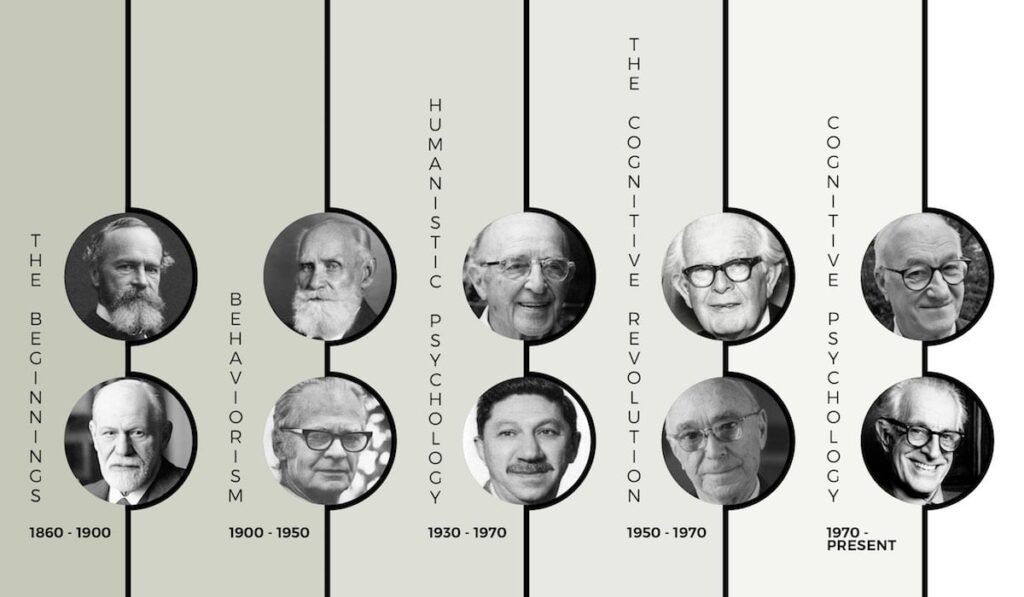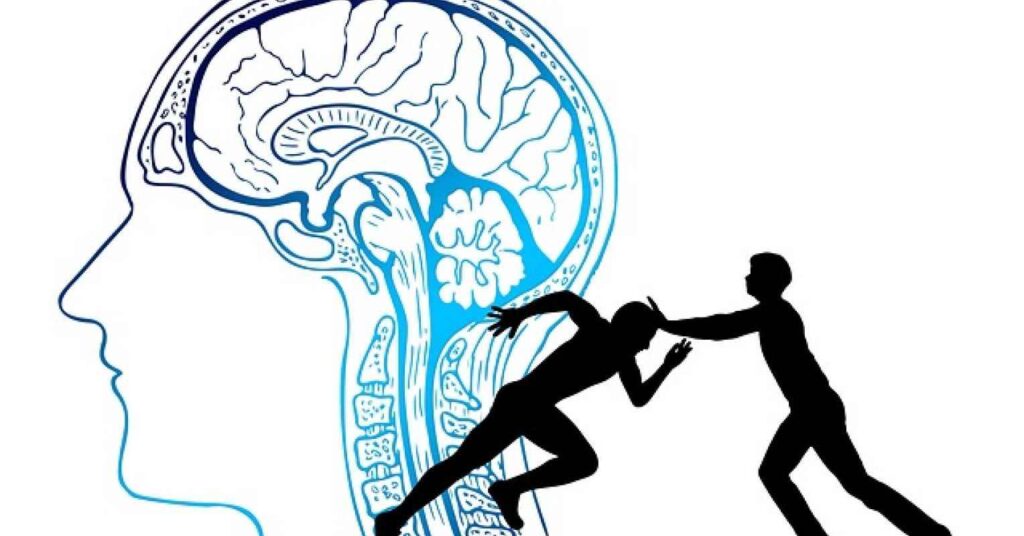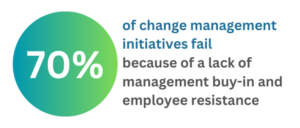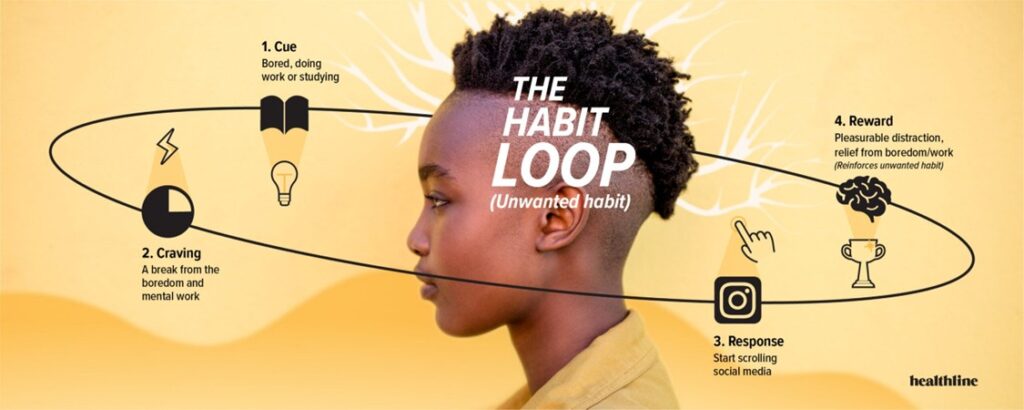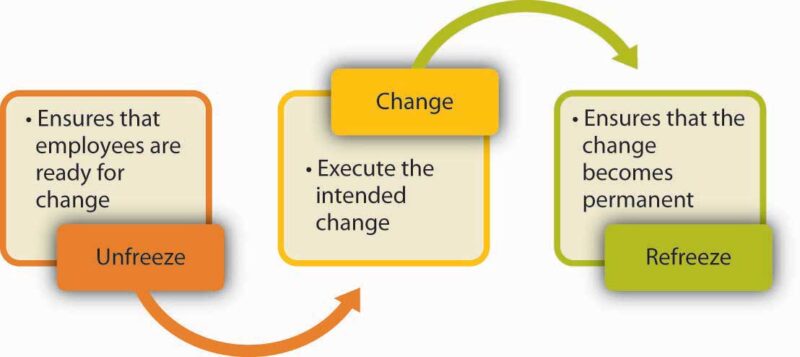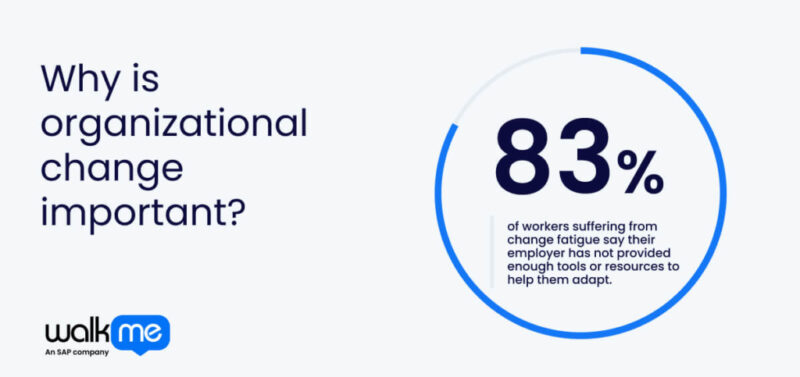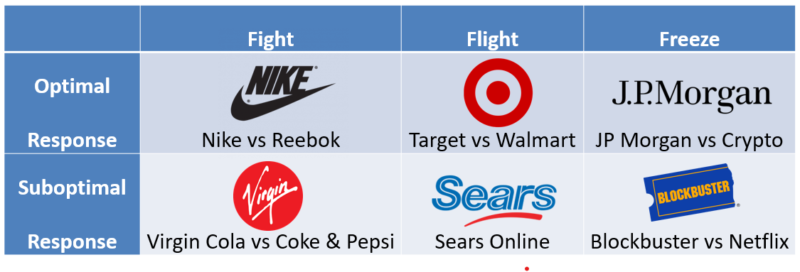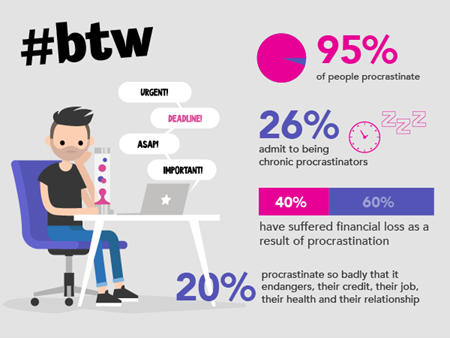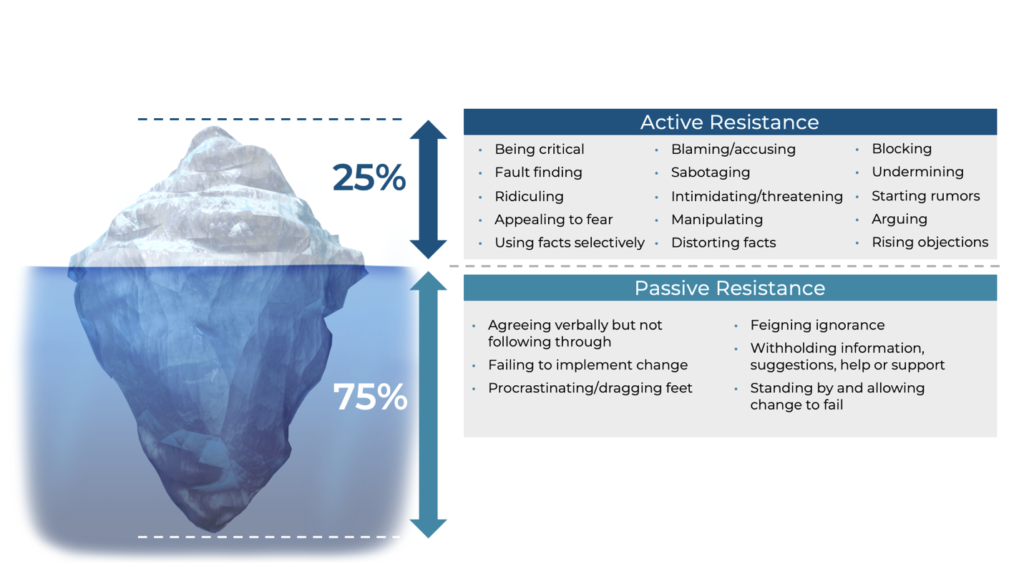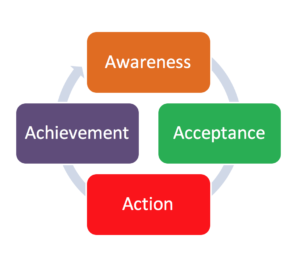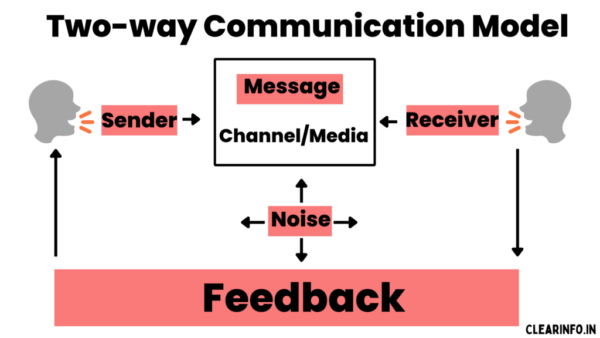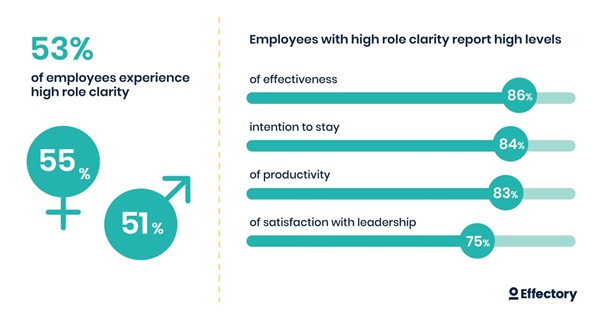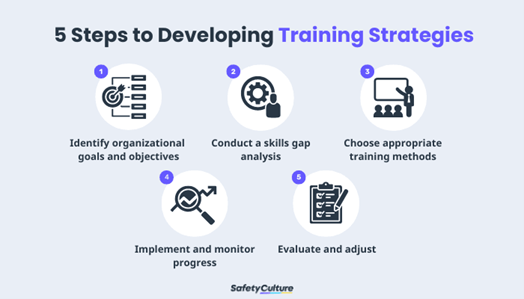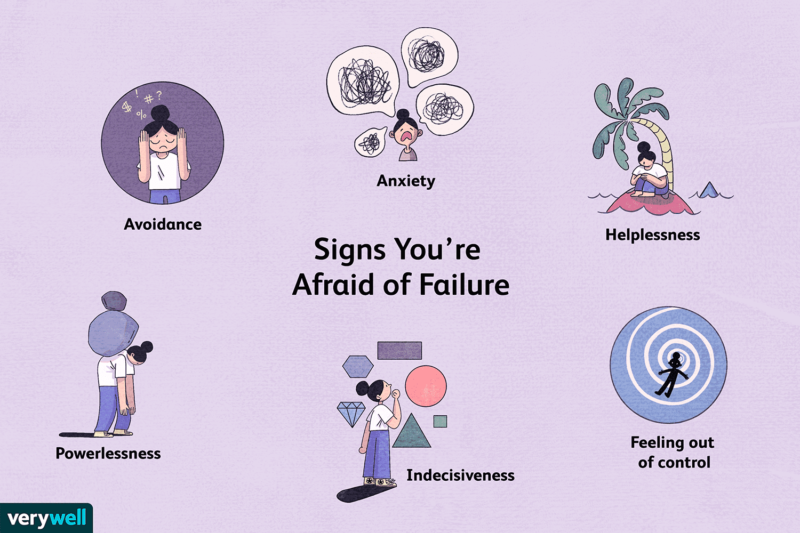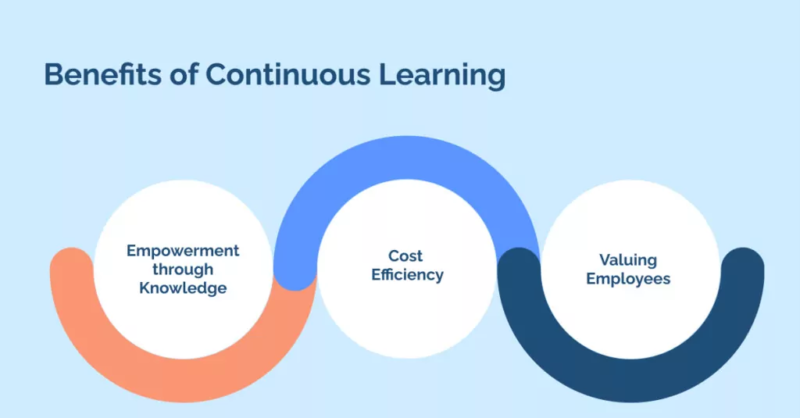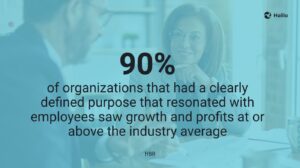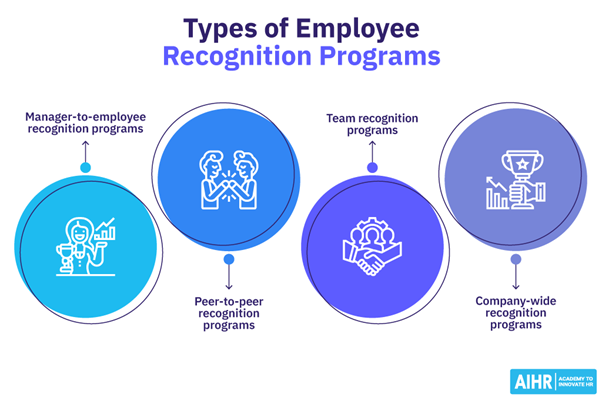Change Resilience – Workshop 1 (Change Psychology)

The Appleton Greene Corporate Training Program (CTP) for Change Resilience is provided by Ms. Aikerson Certified Learning Provider (CLP). Program Specifications: Monthly cost USD$2,500.00; Monthly Workshops 6 hours; Monthly Support 4 hours; Program Duration 12 months; Program orders subject to ongoing availability.
If you would like to view the Client Information Hub (CIH) for this program, please Click Here
Learning Provider Profile
Ms. Aikerson is a Certified Learning Provider (CLP) with Appleton Greene and a highly sought-after speaker, trainer, coach, and consultant. She has a remarkable ability to simplify complex concepts, designing programs that deliver immediate and lasting results. Her approach to learning is engaging, actionable, and impactful, ensuring participants walk away with practical strategies they can apply right away.
With extensive experience across a diverse range of industries—including Aviation, Government, Financial Services, Manufacturing, Consumer Goods, Pharmaceuticals, Consultancy, Insurance, Food & Beverage, Telecommunications, Transportation, and Construction—Ms. Aikerson helps organizations successfully navigate change and transformation. By integrating principles of human psychology, she equips leaders and employees with the tools they need to adapt, ensuring measurable improvements in key business metrics and performance outcomes.
Her impressive academic background includes a Change Management Certificate from Harvard University, an MBA from Northwestern University, and a degree in Electrical Engineering from Bradley University. She also holds multiple certifications, including Prosci ADKAR Change Management, DISC Personality Traits, Myers-Briggs Type Indicator (MBTI), Emotional Intelligence, Neuro-Linguistic Programming (NLP), and Six Sigma (Green Belt), among others.
A dedicated leader in her field, Ms. Aikerson has served as chapter president for several professional organizations, including the National Technical Association (NTA), the Association for Women in Communications (AWC), and Tomorrow’s Scientists, Technicians, and Managers (TSTM).
Her passion for empowering individuals and organizations to thrive in change continues to make her an influential force in professional development and organizational success.
MOST Analysis
Mission Statement
To create a Change Resilient organization, you must first understand what change is and how it impacts people. In this session you will get a working definition for change, learn the types of change we experience, and understand the various ways people respond to changes that impact them. We begin by exploring change. Change can be something we want and desire or something we don’t want. It can be planned or completely unexpected. Because we as people prefer it when we have control over our environments, all types of change induce a psychological response. This response will take one of several forms. You will understand specifically how this shows up in the workplace. It is important to understand that we can’t stop our response to change—we can only manage it. This requires understanding the difference between a healthy response to change and an unhealthy response to change. From this foundation you will learn more about change resistance. You will specifically learn how change and change psychology result in change resistance. We will explore what change resistance looks like and the stages people go through when faced with resistance to change. You will learn how to score change resistance. You can use this assessment to determine your own level of change resistance, the level of change resistance in another person, and the level of change resistance across your team or organization. Knowledge is power. You will no longer guess. Rather, you will have a firm understanding of what you face. Outcome: You will leave this session with a clear understanding of what change is, the psychology of change, and what to expect when you try to change something.
Objectives
01. What is Change : departmental SWOT analysis; strategy research & development. Time Allocated: 1 Month
02. Examples of Workplace Change : departmental SWOT analysis; strategy research & development. Time Allocated: 1 Month
03. Human Change Psychology : departmental SWOT analysis; strategy research & development. Time Allocated: 1 Month
04. Why We Resist Change : departmental SWOT analysis; strategy research & development. Time Allocated: 1 Month
05. What Change Resistance Looks Like : departmental SWOT analysis; strategy research & development. Time Allocated: 1 Month
06. The Change Approach: departmental SWOT analysis; strategy research & development. Time Allocated: 1 Month
07. Change Awareness : departmental SWOT analysis; strategy research & development. 1 Month
08. Change Desire : departmental SWOT analysis; strategy research & development. Time Allocated: 1 Month
09. Change Knowledge : departmental SWOT analysis; strategy research & development. Time Allocated: 1 Month
10. Change Ability : departmental SWOT analysis; strategy research & development. Time Allocated: 1 Month
11. Change Reinforcement : departmental SWOT analysis; strategy research & development. Time Allocated: 1 Month
12. Baseline for Change : departmental SWOT analysis; strategy research & development. Time Allocated: 1 Month
Strategies
01. What is Change : Each individual department head to undertake departmental SWOT analysis; strategy research & development.
02. Examples of Workplace Change : Each individual department head to undertake departmental SWOT analysis; strategy research & development.
03. Human Change Psychology : Each individual department head to undertake departmental SWOT analysis; strategy research & development.
04. Why We Resist Change : Each individual department head to undertake departmental SWOT analysis; strategy research & development.
05. What Change Resistance Looks Like : Each individual department head to undertake departmental SWOT analysis; strategy research & development.
06. The Change Approach: Each individual department head to undertake departmental SWOT analysis; strategy research & development.
07. Change Awareness : Each individual department head to undertake departmental SWOT analysis; strategy research & development.
08. Change Desire : Each individual department head to undertake departmental SWOT analysis; strategy research & development.
09. Change Knowledge : Each individual department head to undertake departmental SWOT analysis; strategy research & development.
10. Change Ability : Each individual department head to undertake departmental SWOT analysis; strategy research & development.
11. Change Reinforcement : Each individual department head to undertake departmental SWOT analysis; strategy research & development.
12. Baseline for Change : Each individual department head to undertake departmental SWOT analysis; strategy research & development.
Tasks
01. Create a task on your calendar, to be completed within the next month, to analyze What is Change .
02. Create a task on your calendar, to be completed within the next month, to analyze Examples of Workplace Change .
03. Create a task on your calendar, to be completed within the next month, to analyze Human Change Psychology .
04. Create a task on your calendar, to be completed within the next month, to analyze Why We Resist Change .
05. Create a task on your calendar, to be completed within the next month, to analyze What Change Resistance Looks Like .
06. Create a task on your calendar, to be completed within the next month, to analyze The Change Approach.
07. Create a task on your calendar, to be completed within the next month, to analyze Change Awareness .
08. Create a task on your calendar, to be completed within the next month, to analyze Change Desire .
09. Create a task on your calendar, to be completed within the next month, to analyze Change Knowledge .
10. Create a task on your calendar, to be completed within the next month, to analyze Change Ability .
11. Create a task on your calendar, to be completed within the next month, to analyze Change Reinforcement .
12. Create a task on your calendar, to be completed within the next month, to analyze Baseline for Change .
Introduction
History: Understanding the Psychological Impact of Change
The study of Change Psychology has evolved over the past century, shaped by research in behavioral science, neuroscience, and organizational psychology. While humans have been adapting to change for millennia, our scientific understanding of why people resist or embrace change has only recently emerged.
Theoretical Foundations: From Simple Behavioral Reactions to Complex Psychological Models
• Early 20th Century – Stimulus-Response Theories:
The first systematic studies of human behavior, led by Ivan Pavlov and B.F. Skinner, emphasized how people react to external stimuli. These behaviorist models suggested that resistance to change stemmed from a lack of proper conditioning—if individuals were rewarded for embracing change, they would accept it.
• Mid-20th Century – Lewin’s Change Model & Cognitive Psychology:
The limitations of behaviorist theories led psychologists to explore cognitive and emotional responses to change. Kurt Lewin’s Change Model (1947) introduced the Unfreeze-Change-Refreeze process, recognizing that people resist change due to deeply ingrained habits. Around the same time, Jean Piaget’s cognitive development theories revealed that learning and adaptation require mental restructuring—an idea that later influenced workplace change models.
• Late 20th Century – Emotional & Psychological Theories of Change:
By the 1970s and 80s, researchers acknowledged that change isn’t just about thinking and behavior—it’s deeply emotional. Elisabeth Kübler-Ross’s Five Stages of Grief Model (initially applied to loss and trauma) became a framework for understanding how people process change emotionally—moving from denial to eventual acceptance. Around the same time, John Kotter’s Eight-Step Process for Leading Change (1996) provided a structured approach to organizational transitions, showing that failing to account for psychological responses leads to failed change initiatives.

Case Study: IBM’s Cultural Change in the 1990s
In the late 1980s, IBM was struggling—facing financial decline due to the rise of personal computing. When CEO Lou Gerstner took over in 1993, he recognized that the real problem wasn’t just strategy or technology—it was the company’s resistance to change. Employees were clinging to outdated structures and processes. Gerstner focused on shifting mindsets rather than just operational strategies, using communication, transparency, and leadership engagement to ease psychological resistance. His approach to change psychology helped transform IBM from near bankruptcy into a thriving, adaptive organization.
The Global Evolution of Change Psychology: Lessons from Cultures & History
Change is universal, but how people respond to it varies across cultures and societies. While the psychological principles of change apply globally, the way different cultures manage and embrace change offers valuable insights for organizations striving for resilience.
In Western cultures, change is often associated with innovation, disruption, and competitiveness. The U.S. and European economies are built on the premise that companies must continuously evolve to remain relevant, as seen in Silicon Valley’s startup culture. However, this emphasis on constant reinvention can create change fatigue, where employees feel overwhelmed by never-ending transformation initiatives.

Similarly, Scandinavian countries prioritize psychological safety and well-being in change management. In Denmark and Sweden, leaders foster collaborative decision-making, ensuring that employees feel heard before change is implemented. This participatory approach reduces resistance by giving employees a sense of ownership over transitions.
Understanding how different cultural mindsets influence change acceptance allows organizations to develop more effective, human-centered strategies that reduce resistance and improve adaptability.
Current Position: The Role of Change Psychology in Organizations Today
Today’s business environment is defined by rapid, continuous change—digital transformation, remote work, economic disruptions, AI integration, and shifting social expectations. Organizations no longer experience change as a rare event—it is a constant state.
Why Change Resistance is More Complex Than Ever
Modern research in neuroscience and behavioral economics has shown that change resistance is not just a mindset issue—it’s hardwired into the human brain.
• The Amygdala & Fear Response – When confronted with uncertainty, the brain activates survival instincts, perceiving change as a threat rather than an opportunity.
• Cognitive Biases & Decision Fatigue – Status quo bias makes people prefer familiar situations, while loss aversion makes the idea of change feel riskier than staying the same.
• The Psychological Contract – Employees form expectations about their work environment; when unexpected changes occur, they feel betrayed—even when changes are necessary.

Case Study: Malala Yousafzai – Overcoming Resistance to Change Through Education
One of the most profound real-world examples of change resistance and psychological adaptation comes from Malala Yousafzai, the Nobel Prize-winning activist for girls’ education.
In 2009, Malala was a young student in Pakistan’s Swat Valley, where the Taliban had imposed strict restrictions on education—particularly banning girls from attending school. The community faced severe resistance to change, as many people feared retaliation for challenging the status quo. However, Malala’s story demonstrates how individual resilience and a deep understanding of change psychology can drive transformation.
Navigating Psychological Resistance to Change:
• Initial Resistance: The local population resisted change due to fear, tradition, and systemic control, mirroring how employees often resist workplace changes that challenge ingrained beliefs.
• Catalyst for Change: Malala and her father recognized that awareness and education were key to overcoming psychological barriers. She began writing a blog for the BBC under a pseudonym, sharing insights about life under the Taliban’s oppressive rule.
• Turning Point: After surviving an assassination attempt in 2012, Malala’s story gained global attention, shifting public perception about the right to education. This mirrors how successful organizational change often requires a tipping point—a major event that forces people to reconsider their beliefs.
• Long-Term Impact: Rather than reacting with fear, Malala leveraged her experience to become a global advocate for change. She founded the Malala Fund, which has since helped millions of girls access education.
Lessons for Organizational Change Psychology:
• Change resistance is often rooted in fear, not logic. Addressing people’s emotional concerns is as important as structural change.
• Change leaders must communicate a compelling vision to shift mindsets gradually. Malala didn’t force change overnight—she used storytelling to humanize the issue and create buy-in.
• Personal resilience fuels collective transformation. Just as Malala transformed global attitudes toward girls’ education, leaders in organizations can reshape workplace culture by modeling adaptability and resilience.
Why Organizations Fail at Change Today
Despite advancements in understanding change psychology, 70% of change initiatives still fail (McKinsey & Company, 2020). Common reasons include:
• Lack of Psychological Safety – Employees fear punishment for mistakes, making them resistant to innovation.
• Overemphasis on Structural Change – Many organizations focus on new processes but fail to address emotional resistance.
• Change Fatigue – Frequent, poorly communicated changes leave employees disengaged and exhausted.
This workshop helps decode these psychological reactions, providing leaders with a framework for identifying and addressing resistance before it derails change efforts.
Future Outlook: The Evolution of Change Psychology in a Changing World
As change accelerates, organizations will need to shift from simply managing change to embedding resilience into their DNA. The future of Change Psychology is evolving in three key ways:
1. Proactive Change Readiness:
Rather than reacting to change, leading organizations will cultivate resilience before disruptions occur.
• AI-Driven Behavioral Insights – Companies are already using predictive analytics to assess employee change readiness and adjust strategies accordingly.
• Emotional Intelligence as a Core Skill – Future leaders will need EQ training to navigate resistance and foster psychological safety.
Example: Google’s Project Aristotle found that psychological safety is the #1 factor in high-performing teams—suggesting that building trust before change occurs improves adaptability.
2. Personalized Change Adaptation
Rather than a one-size-fits-all approach, organizations will tailor change strategies to individual employees’ needs.
• Neuroscientific Approaches to Change Management – Research in neuroplasticity suggests that habits can be rewired through repeated exposure to change in small, manageable steps.
• Behavioral Nudging – Using small environmental cues to shift behavior—for example, companies using default opt-in policies for new initiatives to reduce resistance.
Example: When Adobe eliminated performance reviews, they introduced real-time feedback tools instead. By gradually phasing in the change, they reduced resistance and increased employee engagement by 30%.
3. Resilience as a Competitive Advantage
Organizations that cultivate change-ready cultures will outperform competitors who struggle with resistance.
• Future change leaders will act as ‘Resilience Architects’, focusing on psychological safety, adaptability, and trust.
• Investing in Organizational Well-being – Mental health and resilience training will become part of standard leadership development.
Example: During the pandemic, Airbnb’s CEO Brian Chesky prioritized transparent communication and empathy-driven leadership, ensuring employees felt psychologically secure despite industry-wide layoffs. Airbnb recovered faster than competitors by maintaining trust and agility.
The Connection Between Change Psychology & Change Resilience
Understanding the Link: Why Change Psychology Builds Change Resilience
At first glance, Change Psychology and Change Resilience may seem like two separate concepts:
• Change Psychology explains how people react to change—their cognitive, emotional, and behavioral responses.
• Change Resilience is the ability to adapt to and thrive in change, rather than merely surviving it.

The Psychological Cycle of Change and Its Role in Resilience
Change is not just an event—it’s a psychological process. Each time we experience change, we move through a series of emotional and cognitive stages:
1. Initial Disruption – A shift occurs, causing uncertainty or discomfort.
2. Emotional Response – Fear, resistance, or excitement arise based on perception.
3. Adjustment Period – We process the change, either resisting it or finding ways to cope.
4. Adaptation & Growth – If supported correctly, individuals develop new behaviors and mindsets to handle future changes more effectively.
Change Resilience depends on how well we navigate this cycle.
• If we understand the psychology behind our reactions, we regain control over our response instead of feeling overwhelmed.
• If leaders fail to account for psychological reactions, they create more resistance, disengagement, and stress in their teams.
Why This Foundational Workshop Matters
This workshop lays the groundwork for building a Change Resilient organization by equipping you with:
• A Clear Definition of Change – Understanding that change is inevitable, varied, and not always within our control is key to shifting perspectives.
• Awareness of Psychological Triggers – Recognizing how the brain processes change helps us reframe resistance as a natural response, not a flaw.
• Strategies to Measure Change Resistance – You will learn how to assess your own change resistance, as well as that of teams and organizations, allowing for proactive support.
• Tools to Manage Psychological Responses – By distinguishing healthy vs. unhealthy reactions to change, you’ll be better prepared to help yourself and others navigate transitions.
Change Resilience Begins with Self-Awareness
One of the biggest misconceptions about resilience is that it’s something you either have or don’t have. In reality, resilience is built through self-awareness and deliberate practice—and it starts with understanding how you personally respond to change.
• If you don’t understand how change affects you psychologically, you can’t manage it effectively.
• If you can’t manage your own response to change, how can you help your team or organization do the same?
This workshop serves as the essential first step in the broader Change Resilience training program. It ensures that before we attempt to build resilience, we understand the internal forces that shape our reactions to change.
Cognitive Biases That Shape Our Resistance to Change
Even when change is beneficial, our brains are wired to resist it due to ingrained cognitive biases. These mental shortcuts, designed to help us process information quickly, can lead to irrational decision-making when faced with change.
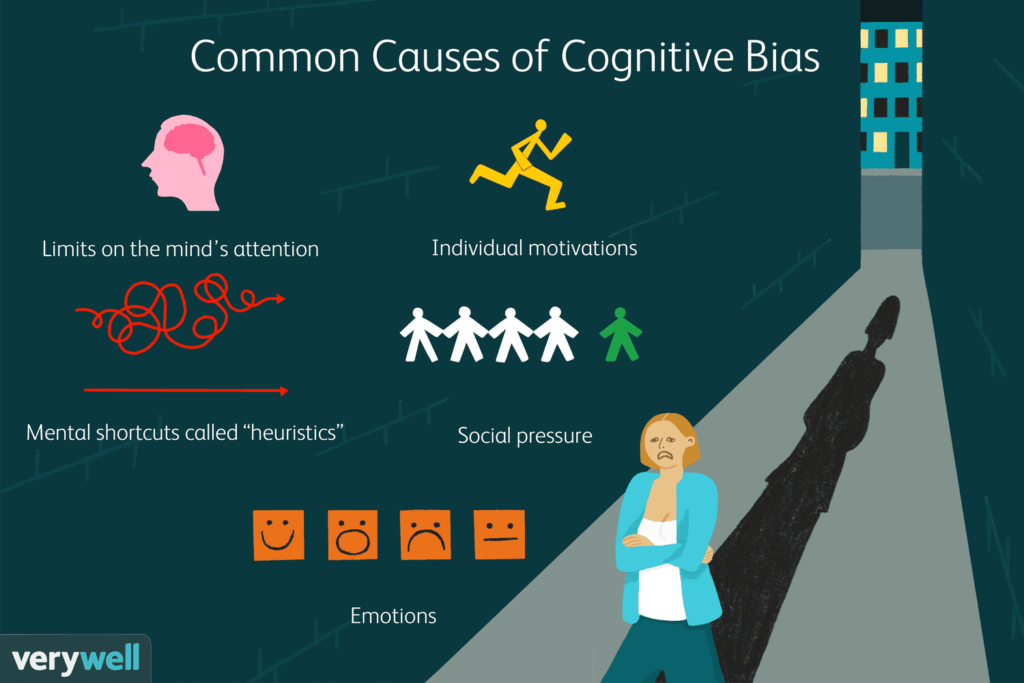
What is a Cognitive Bias?
1. Status Quo Bias: Why We Prefer the Familiar
People tend to prefer stability over uncertainty, even when the familiar option is outdated or inefficient. This is known as status quo bias—the tendency to stick with what we know, simply because it feels safe.
For example, employees may resist new software, even when it is more efficient than outdated tools, simply because they are used to the old system.
One way to counteract this bias is by gradually introducing change, allowing employees to adjust in stages rather than forcing an abrupt shift.
2. Loss Aversion: The Fear of Losing More Than Gaining
People dislike losing twice as much as they enjoy winning—a principle known as loss aversion. When faced with change, employees often focus on what they might lose (familiar routines, job security) rather than what they might gain (efficiency, career growth).
A well-known example of this is Kodak. Kodak invented digital photography but resisted transitioning from film because executives feared losing their profitable film business, even though digital was the future. As a result, Kodak collapsed while other companies embraced the change they feared.
To counter loss aversion, leaders should frame change as a gain rather than a loss. Demonstrating tangible benefits early on and reinforcing how the change improves employees’ work and career can help shift their perspective.
3. The Endowment Effect: Overvaluing What We Already Have
People tend to overvalue things they already own—whether it is a physical product or an outdated work process. This bias makes it harder to let go of inefficient systems, policies, or habits.
Companies often struggle to retire legacy systems because employees feel an emotional attachment to the way things have always been done.
Encouraging employees to test new methods risk-free can help address this challenge. Small pilot programs allow teams to experience the benefits firsthand, making it easier to transition.
The Science of Habits & Behavioral Change
Change psychology is not just about understanding resistance—it is also about creating new habits that make change sustainable.
Behavioral science shows that change only sticks when it becomes habitual. This follows the Habit Loop, a three-step neurological cycle that drives human behavior:
1. Cue (Trigger) – The signal that prompts action.
2. Routine (Behavior) – The action taken in response.
3. Reward (Positive Reinforcement) – The benefit received, reinforcing the behavior.
Companies like Google and Apple apply behavioral design to ease users into new features. Instead of forcing people to adopt radically different interfaces, they introduce gradual updates, making the transition feel seamless rather than disruptive.
Organizations should integrate change into existing routines, making it feel like a natural progression rather than a forced shift.
Managing the Psychological Impact of Uncertainty
One of the biggest barriers to resilience is uncertainty. Studies in behavioral economics and neuroscience reveal that uncertainty is more stressful than a known negative outcome because the brain dislikes ambiguity.
The Paradox of Choice: Too Many Change Options Create Paralysis
Ironically, people do not just fear a lack of control—they also struggle when given too many choices during a change initiative.
A company implementing too many new systems at once without clear prioritization can leave employees feeling overwhelmed, leading to inaction and frustration.
Reducing choice overload by implementing one change at a time helps prevent this issue. Prioritizing clarity over complexity, giving employees simple, actionable steps rather than bombarding them with multiple changes simultaneously, can significantly improve adaptability.
The Role of Mindfulness & Reframing in Navigating Change
Psychologists have found that mindfulness techniques help reduce resistance to change by increasing cognitive flexibility—the ability to see challenges from different perspectives.
Encouraging employees to reframe change as an experiment rather than a threat can help shift their perspective. When people see change as something temporary and exploratory, they feel less resistance because failure is not final.

Case Study: Change Psychology in High-Stakes Environments – NASA’s Apollo 13
Change psychology is not just relevant to business settings—it plays a crucial role in life-or-death scenarios.
One of the best examples of adaptability under pressure is NASA’s Apollo 13 mission.
In 1970, an explosion aboard Apollo 13 threatened the lives of three astronauts. The planned moon landing was aborted, and NASA engineers had to rethink their entire approach to bringing the crew home safely.
NASA’s success lay in cognitive reframing and agile problem-solving. Instead of seeing the crisis as a failure, NASA engineers redefined it as a challenge, allowing them to remain focused under extreme pressure.
Lessons for organizational change:
• Reframing problems reduces fear and increases adaptability.
• Strong leadership and clear communication prevent panic.
• Rapid iteration (small experiments) leads to innovative solutions.
The Link Between Change Psychology & Stress Resilience
Change is not just a workplace challenge—it is also a biological one. Research shows that unmanaged change stress leads to burnout, decreased productivity, and employee disengagement.
Stress is not caused by change itself—it is caused by feeling unprepared for change.
How Resilience Training Helps Reduce Change-Induced Stress
1. Cognitive Reframing: Viewing change as an opportunity rather than a threat reduces stress responses.
2. Behavioral Conditioning: Small, frequent changes train the brain to handle uncertainty better.
3. Support Systems: Employees who have strong social support experience less change-related stress than those who feel isolated.
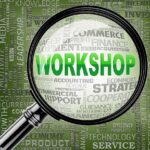
Icebreaker Exercise: “The Change Challenge”
Participants will complete a simple, familiar task but will be required to change how they do it partway through the activity. This will trigger real-time resistance, adaptation, and problem-solving, mirroring the psychological responses to change that will be explored in the workshop.
1. Split participants into pairs and give each pair a simple task to complete. Choose a familiar, low-stress task such as:
– Writing their full name on a piece of paper three times.
– Listing three of their favorite foods.
– Drawing a simple five-point star three times.
2. Instruct them to complete the task as quickly and accurately as possible.
1. Introduce an unexpected rule change. After they complete the task once, instruct them to:
– Write using their non-dominant hand.
– List foods in alphabetical order instead of personal preference.
– Draw the star without lifting their pen from the paper.
2. Observe the group’s reaction. Some participants may hesitate, complain, or feel frustrated. Others may embrace the challenge.
Bring everyone back together and lead a short discussion using these prompts:
• How did you feel when the rules changed?
• Did you initially resist the change? Why?
• What strategies helped you adapt?
• How does this reflect real-world workplace change?
• What could leaders do to make change easier?
• Change often comes unexpectedly and forces people out of their comfort zones.
• Resistance is natural—our brains prefer the familiar.
• Adaptation takes time but can be supported through guidance, practice, and collaboration.
• When people understand why a change is happening and receive support, they can navigate it more smoothly.
Executive Summary
Chapter 1: What is Change
Change is a continuous and inevitable process that affects individuals, organizations, and society. It can be driven by internal factors such as business growth and innovation or external factors like economic shifts and technological advancements. Change comes in various forms, including planned vs. unplanned, incremental vs. transformational, and personal vs. organizational change. Understanding the psychology behind change and the strategies for managing it effectively is essential for building adaptability and resilience.
Planned vs. Unplanned Change
Planned change is intentional and structured, with organizations implementing strategic shifts like business restructuring or technology upgrades to improve efficiency. It allows leaders to anticipate challenges, provide training, and minimize resistance. In contrast, unplanned change is sudden and often disruptive, such as economic downturns or leadership crises. Organizations must rely on agility, crisis management, and resilience to navigate these unexpected shifts successfully.
Incremental vs. Transformational Change
Incremental change involves gradual, continuous improvements, such as skill development and process optimization. It is low-risk and manageable but may not be sufficient in highly dynamic industries. Transformational change, on the other hand, is large-scale and radical, such as mergers, major technological disruptions, or shifts in business models. While it offers significant advantages, it also presents challenges, requiring strong leadership and clear communication to ensure smooth implementation.
Personal vs. Organizational Change
Individuals experience personal change in roles, responsibilities, and career paths, often requiring adaptability and skill-building. Organizational change affects the broader company structure, culture, and strategy, requiring well-managed transitions to avoid resistance. The two are interconnected—employees’ ability to adapt influences an organization’s success, and organizational policies impact individual experiences.
The Role of Leadership in Change Management
Effective leadership is critical in managing change. Leaders must establish trust, communicate openly, and create a culture of adaptability. Transparency helps employees understand the need for change and reduces uncertainty. Leaders must also foster a growth mindset, ensuring that employees see change as an opportunity rather than a threat. By modeling resilience and supporting employee well-being, leaders help teams navigate change successfully.
Organizations that integrate strategic change management practices can remain competitive, foster innovation, and ensure long-term success. By understanding change dynamics and fostering adaptability, both individuals and businesses can thrive in an evolving environment.

Chapter 2: Examples of Workplace Change
Workplace change is a fundamental aspect of organizational growth, adaptation, and long-term success. Companies must evolve to remain competitive, meet industry demands, and maintain operational efficiency. While change presents opportunities for innovation and progress, it also brings challenges that organizations must navigate carefully to ensure smooth transitions and sustain employee engagement.
Organizations experience different forms of change, each requiring distinct management strategies. Structural change involves modifications to an organization’s hierarchy, reporting lines, or framework, often prompted by company growth, downsizing, or mergers. A notable example is General Electric’s (GE) restructuring, which divided the company into three independent businesses to enhance efficiency and focus.
Technological change refers to adopting new tools, automation, or cloud computing to improve productivity. While these advancements can optimize operations, organizations must provide employees with proper training to ensure smooth adaptation. Cultural change, on the other hand, occurs when an organization shifts its values, behaviors, or workplace norms, such as prioritizing collaboration or Diversity, Equity, and Inclusion (DEI) initiatives. Employees must see these shifts reflected in daily operations for lasting impact.

Another significant transformation is workforce-related change, which includes transitions to remote or hybrid work models, leadership shifts, reskilling initiatives, and workforce expansion or reductions. A prime example is Microsoft’s transition to hybrid work during the COVID-19 pandemic. This shift required strong leadership communication, digital infrastructure updates, and flexible workplace policies to maintain productivity and employee satisfaction.
Both internal and external factors drive workplace change. Industry trends and market demands compel businesses to adapt to evolving consumer behaviors, competition, and emerging business models. For instance, the rise of e-commerce forced traditional retailers to invest in digital transformation to stay relevant.
Economic conditions also play a significant role. Recessions or inflation often lead to cost-cutting measures, layoffs, and restructuring, while economic growth encourages expansion, hiring, and investment in new markets. Additionally, technological advancements drive organizations to integrate artificial intelligence, automation, and cloud-based solutions to maintain a competitive edge. Businesses that fail to embrace new technology risk becoming obsolete.
Regulatory and compliance changes require businesses to adjust their policies and operations. For example, the introduction of data protection laws like GDPR forced organizations to enhance data security measures and ensure compliance. Similarly, evolving labor laws often require adjustments in wages, benefits, and workplace policies.
Internal strategic needs also contribute to workplace change. Leadership transitions, mergers, and performance improvement initiatives frequently reshape organizational culture and priorities. A new CEO, for instance, may implement a revised business strategy or restructure teams to align with new objectives.
Successfully managing workplace change requires clear communication, strong leadership, and active employee engagement. Organizations that cultivate adaptability and resilience create environments where transformation is embraced rather than feared. By understanding the different types of change and the factors that drive them, businesses can implement strategic change management approaches that enhance efficiency, foster innovation, and ensure long-term sustainability.

Chapter 3: Human Change Psychology
Change is an inevitable part of life and business, yet humans are naturally wired to resist it. This resistance stems from our evolutionary fight, flight, or freeze response, which was designed for survival but now influences how individuals and teams react to workplace changes. While modern changes—such as new leadership, restructuring, or technology adoption—are not life-threatening, the brain often perceives them as threats, triggering stress, fear, or resistance. Understanding the neuroscience behind change can help organizations manage transitions more effectively.
The brain is a prediction machine that thrives on stability and habit. The amygdala detects threats and triggers fear-based responses, making change feel risky. The basal ganglia control habit formation, meaning established routines are difficult to break. However, neuroplasticity allows the brain to form new connections, meaning that with repetition, learning, and reinforcement, people can adapt to change. Leaders can use this knowledge by minimizing uncertainty, breaking change into smaller steps, and reinforcing new behaviors through training and rewards.
Psychologically, individuals react to change through fight, flight, or freeze responses. The fight response results in resistance and defensiveness, where employees challenge or push back against changes. The flight response leads to avoidance, disengagement, or even seeking new job opportunities. The freeze response causes hesitation, inaction, or decision paralysis. Other reactions include denial, anxiety, and—less commonly—excitement. Organizations must recognize these responses and provide support through clear communication, reassurance, and involvement in the change process.
Building psychological safety is essential in helping employees navigate change successfully. Psychological safety, popularized by Harvard professor Amy Edmondson, refers to an environment where individuals feel secure in expressing concerns, asking questions, and taking risks without fear of punishment. If employees feel psychologically unsafe, they may resist or disengage from change efforts. Leaders can build psychological safety by fostering open communication, encouraging dialogue, normalizing vulnerability, and avoiding blame when mistakes occur.
Practical strategies for building psychological safety during change include creating a feedback culture, where employees can express concerns and share experiences. Providing training and resources reduces uncertainty, while recognizing and rewarding adaptability helps sustain motivation.
By understanding the psychological and neurological responses to change, leaders and organizations can create environments that reduce resistance, promote resilience, and encourage a culture of adaptability. When employees feel supported and psychologically safe, they are more likely to embrace change and contribute to its success.

Chapter 4: Why We Resist Change
Humans are inherently wired to resist change, not out of defiance but as a survival mechanism. The brain prioritizes stability and predictability because familiarity equates to safety. Even positive changes can trigger discomfort and hesitation because they disrupt established patterns. This instinctive resistance is rooted in the brain’s fear response, habitual behaviors, and aversion to uncertainty.
The brain functions as a prediction machine, constantly seeking patterns to minimize risk and conserve energy. When faced with change, the amygdala, the brain’s threat detector, perceives it as a potential danger, activating the fight, flight, or freeze response. People may react with resistance (fight), avoidance (flight), or indecision (freeze), making transitions difficult. These responses are not deliberate but deeply ingrained survival mechanisms.
Fear, loss aversion, and uncertainty are the biggest psychological barriers to change. Fear arises when people worry about their ability to adapt or their job security. Loss aversion makes individuals focus more on what they might lose rather than what they could gain. Uncertainty creates stress because the brain craves predictability, leading to disengagement when employees lack clear guidance.

The brain conserves energy by relying on habitual behaviors managed by the basal ganglia. Change disrupts these patterns, forcing the prefrontal cortex to work harder, leading to cognitive overload and resistance. Without repeated exposure and reinforcement, the brain defaults to familiar routines, even if they are outdated.
Yahoo’s acquisition of Tumblr in 2013 illustrates the dangers of uncertainty. Lack of clear communication created anxiety among employees and users, leading to disengagement and loss of platform appeal. Had Yahoo provided a clearer roadmap and open communication, resistance and uncertainty could have been mitigated.
Overcoming Resistance to Change
Leaders can ease resistance by:
1. Normalizing Resistance – Acknowledging that resistance is natural rather than dismissing concerns.
2. Clear Communication – Explaining the purpose and benefits of change.
3. Providing Psychological Safety – Encouraging open discussions and addressing fears.
4. Breaking Change into Smaller Steps – Introducing gradual, manageable adjustments.
5. Encouraging Employee Participation – Involving employees in decision-making to foster ownership.
6. Providing Ongoing Support – Offering training, mentorship, and reinforcement to ease transitions.
By recognizing and addressing these psychological barriers, organizations can shift resistance into resilience, fostering a culture that embraces change rather than fears it.

Chapter 5: What Change Resistance Looks Like
Change resistance in the workplace is a natural human response rooted in the brain’s preference for stability. It can manifest in various forms, from outright defiance to subtle disengagement. Understanding and addressing these behaviors is essential for leaders to successfully implement organizational change.
Resistance is not always vocal or visible; it often appears in passive ways, such as procrastination, disengagement, and poor communication. Employees may delay tasks, miss deadlines, or avoid learning new processes as a form of resistance. A lack of participation in meetings, silence in discussions, or failing to adopt new procedures can signal underlying concerns. Additionally, some employees may withhold critical information or engage in passive-aggressive behavior, such as making sarcastic remarks or subtly undermining change efforts. Leaders should remain alert to absenteeism and declining productivity, which often signal reluctance to embrace change.
Resistance to change generally falls into two categories: active and passive. Active resistance is vocal and confrontational, with employees expressing dissatisfaction, challenging decisions, or even protesting against changes. While disruptive, active resistance presents an opportunity for leaders to engage in dialogue and address concerns directly. Passive resistance, on the other hand, is harder to detect. Employees may appear compliant but quietly resist by avoiding tasks, minimizing effort, or finding workarounds to maintain old processes. This form of resistance can be more damaging as it slows progress without obvious confrontation.
Leaders play a critical role in identifying early signs of resistance before they escalate. Key indicators include shifts in employee behavior, such as decreased engagement in meetings, reluctance to participate in discussions, and avoidance of leadership interactions. Statements like, “We’ve always done it this way” or “This won’t work here” can signal hidden doubts. Leaders should also monitor performance metrics, such as missed deadlines or declining productivity, which may indicate resistance to new initiatives.
An example of poorly managed change resistance occurred during Yahoo’s acquisition of Tumblr in 2013. Employees and users were left uncertain about the platform’s future due to unclear communication from leadership. This uncertainty fueled skepticism, disengagement, and resistance, leading to declining innovation and a shrinking user base. Had Yahoo provided clearer guidance and reassurance, it could have mitigated uncertainty and improved alignment.
To reduce resistance, leaders should foster open communication, provide clear justifications for change, and ensure psychological safety. Encouraging employee participation, addressing concerns directly, and recognizing those who embrace change can help shift mindsets. By detecting resistance early and responding proactively, organizations can turn opposition into engagement, ensuring a smoother transition and long-term success.

Chapter 6: The Change Approach
Successfully managing change requires a structured approach that helps individuals accept, adapt to, and sustain new ways of working. The Change Approach follows the ADKAR model—Awareness, Desire, Knowledge, Ability, and Reinforcement—which provides a step-by-step framework for guiding employees through change while minimizing resistance and ensuring long-term adoption.
The first step in managing change is ensuring employees understand why it is happening. Many change efforts fail because employees do not see the necessity or urgency. Leaders must communicate a clear and compelling case for change, using data, real-world examples, and storytelling to highlight benefits. Multiple communication channels—such as meetings, emails, and one-on-one discussions—should be used to ensure clarity. Transparency is essential, and leaders should encourage open dialogue to address concerns and misconceptions early on.
Awareness alone is not enough—employees must also want to engage in the change. Resistance often stems from fear of job loss, uncertainty, or increased workload. Leaders should listen to employees, acknowledge concerns, and demonstrate the benefits of change at both the personal and organizational levels. Creating a sense of ownership by involving employees in the process, recognizing their contributions, and offering incentives can increase motivation and commitment.

For change to be successful, employees must be equipped with the necessary knowledge and skills. Training programs should be customized to different learning styles and job roles, offering hands-on practice, online courses, and coaching sessions. Organizations must clearly define expectations and provide continuous learning opportunities to help employees transition smoothly. Knowledge bases, FAQs, and follow-up Q&A sessions help reinforce understanding.
Understanding the change is one thing—successfully implementing it is another. Employees need ongoing support, access to the right tools, and opportunities to practice new skills in a safe environment. Pilot programs, mentorship, and real-world application help bridge the gap between learning and execution. Leaders should create a culture where mistakes are seen as learning opportunities, fostering confidence and adaptability.
The final stage ensures that change is embedded into the organization’s culture. Without reinforcement, employees may revert to old habits. Organizations must integrate change into performance metrics, recognize and reward adoption, and provide ongoing feedback and refresher training. Regular check-ins, surveys, and leadership support are crucial in ensuring long-term success.
By following this structured approach, organizations can create a smoother transition, reduce resistance, and sustain meaningful change over time.

Chapter 7: Change Awareness
Change awareness is a crucial first step in managing transitions effectively. People do not respond well to being blindsided, and resistance often stems from a lack of preparation or understanding. This chapter emphasizes that awareness begins the moment leadership recognizes that a change is coming—not when every detail is finalized. Since change is often fluid, waiting for “full” information before communicating can create confusion and speculation. Instead, early awareness allows employees to gradually process and engage with the transition, reducing uncertainty-driven resistance.
Employees who are informed about change early are more likely to adapt smoothly. When awareness is delayed, people fill in the gaps with assumptions, often leading to anxiety and disengagement. Transparency fosters trust and psychological safety, making employees feel valued rather than like passive recipients of a decision. Leaders who introduce change early can address concerns proactively, prevent misinformation, and encourage participation.
Leadership plays a critical role in shaping how employees perceive and respond to change. Transparent, clear, and consistent messaging helps build trust and credibility. Leaders should foster two-way communication by actively listening to employee concerns, responding with empathy, and ensuring alignment across all levels of management. Employees take cues from leadership behavior—if leaders embrace change with confidence and positivity, employees are more likely to do the same.
Change awareness is not a one-time announcement; it requires ongoing reinforcement. Organizations must create a strategy that maintains an open dialogue, providing updates as change evolves. Using multiple communication channels—such as town hall meetings, emails, and informal check-ins—ensures employees stay informed. Feedback loops should be in place to adjust messaging based on employee concerns and progress.
Many organizations make mistakes when rolling out change, leading to confusion and resistance. Delaying communication until every detail is finalized can make employees feel blindsided, while vague or inconsistent messaging creates uncertainty. A lack of engagement with employees’ concerns can lead to disengagement, and treating change awareness as a single event instead of a continuous process undermines adoption. Additionally, underestimating the emotional impact of change can lead to resistance if employees feel unsupported.
This chapter equips leaders with strategies to communicate change effectively, build trust, and maintain engagement. By prioritizing early awareness, transparent leadership, and continuous dialogue, organizations can foster a culture of adaptability and ensure smoother transitions.

Chapter 8: Change Desire
Awareness of change is just the first step—true commitment requires desire, the willingness to embrace and actively support change. Many employees understand that change is happening, but without a personal reason to engage, they may resist or remain passive. The key to fostering desire is showing employees what’s in it for them (WIIFM)—how the change will improve their daily work, job satisfaction, and career prospects. When employees see the benefits from their own perspective, they are more likely to commit to change rather than resist it.
This chapter explores the psychological factors behind change desire and how leaders can effectively communicate its benefits. The Psychology of Change Desire examines why people instinctively resist change, including fear of uncertainty, loss of control, and cognitive overload. Understanding these emotions allows leaders to address concerns and frame change as an opportunity rather than a disruption.
A critical tool for gaining buy-in is WIIFM: Communicating Personal Benefits. Employees need more than a generic business case—they need to see how change directly improves their work. Leaders must tailor messages to different groups, whether frontline employees, managers, or specialists, to highlight specific advantages like skill development, reduced workload, or career advancement. When change is linked to personal growth and long-term job security, employees are more likely to engage.

The Role of Change Champions is another essential element in fostering commitment. Change Champions are respected employees who embrace change early and help others navigate the transition. People often trust their peers more than leadership, making Change Champions effective in driving engagement. By sharing real success stories, offering hands-on guidance, and addressing concerns in relatable ways, these individuals help reduce fear and make change more approachable. Organizations should carefully select and support their Champions to maximize their influence.
To sustain engagement, leaders must maintain ongoing reinforcement of change benefits. Recognizing early adopters, celebrating small wins, and providing continuous support through coaching and training ensures that employees remain motivated beyond the initial rollout.
By addressing psychological resistance, framing change in a personally meaningful way, and leveraging peer influence, organizations can transform passive awareness into active commitment. Employees don’t just need to know about change—they need to want it. This chapter provides the strategies to make that shift happen.

Chapter 9: Change Knowledge
Understanding that a change is coming is not enough—employees need the right knowledge and resources to adapt successfully. Change Knowledge ensures that individuals know how to operate in the new environment by providing clear guidance, structured training, and accessible support materials. Without proper knowledge, even employees who are willing to change may struggle with uncertainty, leading to frustration, inefficiencies, and resistance.
This chapter explores how organizations can equip employees with the skills, tools, and clarity they need to transition effectively. It highlights the importance of clarifying roles and expectations, ensuring employees understand how their job responsibilities will shift and what will be required of them in the new system. Leaders must proactively communicate role changes, reporting structures, and performance expectations to minimize confusion and maintain productivity.
Effective training strategies are another key focus, as training is essential for building employees’ confidence and competence. A well-designed training program should be tailored to different learning styles, incorporate hands-on practice, and provide ongoing reinforcement. Training should not be a one-time event but an ongoing process that includes mentorship, peer support, and real-world application.
In addition to structured training, providing access to knowledge resources is crucial. Employees need easy access to FAQs, instructional guides, troubleshooting documents, and learning platforms that allow them to find answers when needed. A centralized knowledge base, multi-format learning materials, and real-time support channels—such as chat functions, office hours, or peer forums—help ensure employees feel supported throughout the transition.
This chapter emphasizes that continuous reinforcement and knowledge updates are necessary to prevent employees from reverting to old habits. Knowledge resources should be regularly updated based on employee feedback and evolving business needs. Leaders should also ensure that employees feel empowered to seek answers, contribute insights, and adapt proactively to the new system.
By investing in clear communication, effective training, and ongoing knowledge support, organizations create an environment where employees feel prepared, confident, and engaged. When people know exactly what to do and where to find help, change adoption becomes smoother, reducing resistance and enhancing overall success.

Chapter 10: Change Ability
Understanding that change is necessary is only the first step—employees must also have the ability to implement it successfully. Change Ability ensures that individuals are equipped with the necessary skills, confidence, and opportunities to apply new behaviors effectively. Without proper support, even the most motivated employees may struggle to adapt, leading to frustration, inefficiencies, and setbacks.
This chapter explores how organizations can bridge the gap between knowledge and action by creating a structured environment where employees feel supported as they transition to new ways of working. Many employees understand what needs to change, but without hands-on experience or reinforcement, they may hesitate to apply their knowledge. Providing structured learning opportunities through training, coaching, and real-world application helps employees build confidence and competence.
One of the biggest barriers to skill application is the fear of failure. Employees may resist change due to uncertainty, lack of confidence, or concerns about making mistakes. To overcome these challenges, organizations must create a culture of psychological safety, allowing employees to experiment, ask questions, and learn from their mistakes without fear of negative consequences. Ensuring access to necessary resources, such as training materials, mentors, and technical support, also plays a crucial role in reducing resistance and improving skill adoption.

Hands-on practice is essential to reinforcing learning and helping employees translate theory into action. Organizations can use simulation-based training, pilot programs, and on-the-job learning to provide employees with real-world application experiences. Role-playing exercises, team-based learning, and mentorship programs also enhance engagement and reinforce new behaviors. Encouraging knowledge-sharing within teams can strengthen the learning process and help employees feel more comfortable adapting to change.
To ensure long-term success, organizations must measure and reinforce skill development. Tracking progress through assessments, performance metrics, and regular feedback helps employees stay on course. Managers and mentors should provide constructive feedback, recognize employee achievements, and offer continuous support to reinforce learning. Ongoing training, refresher courses, and leadership modeling are critical to maintaining new skills and preventing employees from reverting to old habits.
By focusing on structured learning, practical application, ongoing reinforcement, and leadership support, organizations can ensure that employees not only understand change but can confidently implement it in their daily work. A workforce that is well-prepared, adaptable, and supported in skill-building is more likely to embrace change and contribute to long-term organizational success.

Chapter 11: Change Reinforcement
Successfully implementing change is only half the battle—ensuring that it lasts is the real challenge. Change Reinforcement is the final and crucial step in the change process, focusing on sustaining new behaviors, preventing reversion to old habits, and embedding change into the organization’s culture. Without reinforcement, employees may gradually revert to familiar ways of working, especially when facing pressure, lack of accountability, or leadership inconsistency.
To make change permanent, organizations must proactively monitor progress, provide recognition, and establish accountability structures. Employees need to understand that the change is not a temporary initiative but an essential part of the organization’s future. Leaders play a key role in maintaining momentum, supporting employees, and ensuring adherence to new ways of working.
This chapter covers five critical areas of Change Reinforcement:
1. Recognizing Signs of Reversion – Employees may slip back into old habits when they feel overwhelmed, unsupported, or unsure of expectations. Warning signs include declining adoption rates, workarounds that bypass new processes, disengagement, and complaints. By identifying and addressing these issues early, organizations can prevent setbacks.
2. Creating Accountability Structures – Accountability ensures that employees stay committed to the change. Clear expectations, performance tracking, and leadership reinforcement help sustain new behaviors. Managers must model the change themselves and use peer accountability, team check-ins, and structured follow-ups to maintain adherence.
3. Leveraging Recognition and Rewards – Positive reinforcement motivates employees to maintain new behaviors. Public recognition, incentives, peer-to-peer appreciation, and career development opportunities encourage commitment to change. Sharing success stories of employees who have successfully embraced change makes it more relatable and achievable.
4. Integrating Change into Daily Operations – For change to stick, it must become a natural part of everyday work. Organizations should align policies, processes, and workplace culture with the change. Leaders should continuously communicate its importance and ensure that employees are supported in applying new behaviors.
5. Sustaining Long-Term Commitment – Change reinforcement must be ongoing. Organizations should provide refresher training, maintain open feedback channels, and track performance over time. Leadership consistency, continuous improvement, and a culture of adaptability ensure that change remains embedded in the organization.
By reinforcing change through recognition, accountability, and continuous support, organizations can prevent backsliding and create a work environment where change is fully embraced. When employees see the long-term value and feel supported in maintaining new behaviors, change becomes a lasting and integral part of the organization’s success.

Chapter 12: Baseline for Change
Change is not just about understanding and implementing new behaviors—it’s about making them stick long after the initial transition. This final chapter focuses on assessing personal growth, tracking progress, and developing a concrete plan to sustain change beyond the program. Participants will reflect on their journey through the five key areas of change—Awareness, Desire, Knowledge, Ability, and Reinforcement—and establish a plan for continuous improvement.
The first step in this process is assessing change readiness through self-evaluation. By reflecting on how well they understand, accept, and apply the change, individuals gain insight into their strengths and areas needing further development. This assessment helps prevent complacency and encourages ownership of the change process at an individual level.
Next, participants will rate themselves across the five change areas using a structured self-assessment. By assigning scores from 1 to 5, they can measure their initial baseline and compare it with their final assessment at the end of the program. This structured reflection provides a clear picture of personal growth and identifies areas where additional support or reinforcement may be needed.

Tracking growth over time is essential for measuring success and identifying challenges that may still exist. By comparing initial and final assessments, individuals can see how their mindset, skills, and confidence have evolved. This exercise encourages self-awareness and reinforces the importance of continuous learning and adaptation.
To ensure lasting change, participants will develop a personalized action plan that outlines specific steps for sustaining progress. The action plan will focus on SMART goals (Specific, Measurable, Achievable, Relevant, and Time-bound), helping individuals create structured objectives that ensure long-term success. These goals may include ongoing learning, mentorship, peer support, and integrating new behaviors into daily routines.
Finally, the chapter emphasizes building accountability and support systems to prevent backsliding. Having mentors, colleagues, or accountability partners ensures that change remains a priority. Additionally, embedding change into work habits and performance expectations helps reinforce new behaviors until they become second nature.
By the end of this chapter, participants will have a clear roadmap for sustaining their growth beyond the program. With a structured self-assessment, progress tracking, and an action plan, they will be equipped to maintain long-term change, ensuring that their efforts lead to continuous personal and professional development.
Curriculum
Change Resilience – Workshop 1 – Change Psychology
- What is Change
- Examples of Workplace Change
- Human Change Psychology
- Why We Resist Change
- What Change Resistance Looks Like
- The Change Approach
- Change Awareness
- Change Desire
- Change Knowledge
- Change Ability
- Change Reinforcement
- Baseline for Change
Distance Learning
Introduction
Welcome to Appleton Greene and thank you for enrolling on the Change Resilience corporate training program. You will be learning through our unique facilitation via distance-learning method, which will enable you to practically implement everything that you learn academically. The methods and materials used in your program have been designed and developed to ensure that you derive the maximum benefits and enjoyment possible. We hope that you find the program challenging and fun to do. However, if you have never been a distance-learner before, you may be experiencing some trepidation at the task before you. So we will get you started by giving you some basic information and guidance on how you can make the best use of the modules, how you should manage the materials and what you should be doing as you work through them. This guide is designed to point you in the right direction and help you to become an effective distance-learner. Take a few hours or so to study this guide and your guide to tutorial support for students, while making notes, before you start to study in earnest.
Study environment
You will need to locate a quiet and private place to study, preferably a room where you can easily be isolated from external disturbances or distractions. Make sure the room is well-lit and incorporates a relaxed, pleasant feel. If you can spoil yourself within your study environment, you will have much more of a chance to ensure that you are always in the right frame of mind when you do devote time to study. For example, a nice fire, the ability to play soft soothing background music, soft but effective lighting, perhaps a nice view if possible and a good size desk with a comfortable chair. Make sure that your family know when you are studying and understand your study rules. Your study environment is very important. The ideal situation, if at all possible, is to have a separate study, which can be devoted to you. If this is not possible then you will need to pay a lot more attention to developing and managing your study schedule, because it will affect other people as well as yourself. The better your study environment, the more productive you will be.
Study tools & rules
Try and make sure that your study tools are sufficient and in good working order. You will need to have access to a computer, scanner and printer, with access to the internet. You will need a very comfortable chair, which supports your lower back, and you will need a good filing system. It can be very frustrating if you are spending valuable study time trying to fix study tools that are unreliable, or unsuitable for the task. Make sure that your study tools are up to date. You will also need to consider some study rules. Some of these rules will apply to you and will be intended to help you to be more disciplined about when and how you study. This distance-learning guide will help you and after you have read it you can put some thought into what your study rules should be. You will also need to negotiate some study rules for your family, friends or anyone who lives with you. They too will need to be disciplined in order to ensure that they can support you while you study. It is important to ensure that your family and friends are an integral part of your study team. Having their support and encouragement can prove to be a crucial contribution to your successful completion of the program. Involve them in as much as you can.
Successful distance-learning
Distance-learners are freed from the necessity of attending regular classes or workshops, since they can study in their own way, at their own pace and for their own purposes. But unlike traditional internal training courses, it is the student’s responsibility, with a distance-learning program, to ensure that they manage their own study contribution. This requires strong self-discipline and self-motivation skills and there must be a clear will to succeed. Those students who are used to managing themselves, are good at managing others and who enjoy working in isolation, are more likely to be good distance-learners. It is also important to be aware of the main reasons why you are studying and of the main objectives that you are hoping to achieve as a result. You will need to remind yourself of these objectives at times when you need to motivate yourself. Never lose sight of your long-term goals and your short-term objectives. There is nobody available here to pamper you, or to look after you, or to spoon-feed you with information, so you will need to find ways to encourage and appreciate yourself while you are studying. Make sure that you chart your study progress, so that you can be sure of your achievements and re-evaluate your goals and objectives regularly.
Self-assessment
Appleton Greene training programs are in all cases post-graduate programs. Consequently, you should already have obtained a business-related degree and be an experienced learner. You should therefore already be aware of your study strengths and weaknesses. For example, which time of the day are you at your most productive? Are you a lark or an owl? What study methods do you respond to the most? Are you a consistent learner? How do you discipline yourself? How do you ensure that you enjoy yourself while studying? It is important to understand yourself as a learner and so some self-assessment early on will be necessary if you are to apply yourself correctly. Perform a SWOT analysis on yourself as a student. List your internal strengths and weaknesses as a student and your external opportunities and threats. This will help you later on when you are creating a study plan. You can then incorporate features within your study plan that can ensure that you are playing to your strengths, while compensating for your weaknesses. You can also ensure that you make the most of your opportunities, while avoiding the potential threats to your success.
Accepting responsibility as a student
Training programs invariably require a significant investment, both in terms of what they cost and in the time that you need to contribute to study and the responsibility for successful completion of training programs rests entirely with the student. This is never more apparent than when a student is learning via distance-learning. Accepting responsibility as a student is an important step towards ensuring that you can successfully complete your training program. It is easy to instantly blame other people or factors when things go wrong. But the fact of the matter is that if a failure is your failure, then you have the power to do something about it, it is entirely in your own hands. If it is always someone else’s failure, then you are powerless to do anything about it. All students study in entirely different ways, this is because we are all individuals and what is right for one student, is not necessarily right for another. In order to succeed, you will have to accept personal responsibility for finding a way to plan, implement and manage a personal study plan that works for you. If you do not succeed, you only have yourself to blame.
Planning
By far the most critical contribution to stress, is the feeling of not being in control. In the absence of planning we tend to be reactive and can stumble from pillar to post in the hope that things will turn out fine in the end. Invariably they don’t! In order to be in control, we need to have firm ideas about how and when we want to do things. We also need to consider as many possible eventualities as we can, so that we are prepared for them when they happen. Prescriptive Change, is far easier to manage and control, than Emergent Change. The same is true with distance-learning. It is much easier and much more enjoyable, if you feel that you are in control and that things are going to plan. Even when things do go wrong, you are prepared for them and can act accordingly without any unnecessary stress. It is important therefore that you do take time to plan your studies properly.
Management
Once you have developed a clear study plan, it is of equal importance to ensure that you manage the implementation of it. Most of us usually enjoy planning, but it is usually during implementation when things go wrong. Targets are not met and we do not understand why. Sometimes we do not even know if targets are being met. It is not enough for us to conclude that the study plan just failed. If it is failing, you will need to understand what you can do about it. Similarly if your study plan is succeeding, it is still important to understand why, so that you can improve upon your success. You therefore need to have guidelines for self-assessment so that you can be consistent with performance improvement throughout the program. If you manage things correctly, then your performance should constantly improve throughout the program.
Study objectives & tasks
The first place to start is developing your program objectives. These should feature your reasons for undertaking the training program in order of priority. Keep them succinct and to the point in order to avoid confusion. Do not just write the first things that come into your head because they are likely to be too similar to each other. Make a list of possible departmental headings, such as: Customer Service; E-business; Finance; Globalization; Human Resources; Technology; Legal; Management; Marketing and Production. Then brainstorm for ideas by listing as many things that you want to achieve under each heading and later re-arrange these things in order of priority. Finally, select the top item from each department heading and choose these as your program objectives. Try and restrict yourself to five because it will enable you to focus clearly. It is likely that the other things that you listed will be achieved if each of the top objectives are achieved. If this does not prove to be the case, then simply work through the process again.
Study forecast
As a guide, the Appleton Greene Change Resilience corporate training program should take 12-18 months to complete, depending upon your availability and current commitments. The reason why there is such a variance in time estimates is because every student is an individual, with differing productivity levels and different commitments. These differentiations are then exaggerated by the fact that this is a distance-learning program, which incorporates the practical integration of academic theory as an as a part of the training program. Consequently all of the project studies are real, which means that important decisions and compromises need to be made. You will want to get things right and will need to be patient with your expectations in order to ensure that they are. We would always recommend that you are prudent with your own task and time forecasts, but you still need to develop them and have a clear indication of what are realistic expectations in your case. With reference to your time planning: consider the time that you can realistically dedicate towards study with the program every week; calculate how long it should take you to complete the program, using the guidelines featured here; then break the program down into logical modules and allocate a suitable proportion of time to each of them, these will be your milestones; you can create a time plan by using a spreadsheet on your computer, or a personal organizer such as MS Outlook, you could also use a financial forecasting software; break your time forecasts down into manageable chunks of time, the more specific you can be, the more productive and accurate your time management will be; finally, use formulas where possible to do your time calculations for you, because this will help later on when your forecasts need to change in line with actual performance. With reference to your task planning: refer to your list of tasks that need to be undertaken in order to achieve your program objectives; with reference to your time plan, calculate when each task should be implemented; remember that you are not estimating when your objectives will be achieved, but when you will need to focus upon implementing the corresponding tasks; you also need to ensure that each task is implemented in conjunction with the associated training modules which are relevant; then break each single task down into a list of specific to do’s, say approximately ten to do’s for each task and enter these into your study plan; once again you could use MS Outlook to incorporate both your time and task planning and this could constitute your study plan; you could also use a project management software like MS Project. You should now have a clear and realistic forecast detailing when you can expect to be able to do something about undertaking the tasks to achieve your program objectives.
Performance management
It is one thing to develop your study forecast, it is quite another to monitor your progress. Ultimately it is less important whether you achieve your original study forecast and more important that you update it so that it constantly remains realistic in line with your performance. As you begin to work through the program, you will begin to have more of an idea about your own personal performance and productivity levels as a distance-learner. Once you have completed your first study module, you should re-evaluate your study forecast for both time and tasks, so that they reflect your actual performance level achieved. In order to achieve this you must first time yourself while training by using an alarm clock. Set the alarm for hourly intervals and make a note of how far you have come within that time. You can then make a note of your actual performance on your study plan and then compare your performance against your forecast. Then consider the reasons that have contributed towards your performance level, whether they are positive or negative and make a considered adjustment to your future forecasts as a result. Given time, you should start achieving your forecasts regularly.
With reference to time management: time yourself while you are studying and make a note of the actual time taken in your study plan; consider your successes with time-efficiency and the reasons for the success in each case and take this into consideration when reviewing future time planning; consider your failures with time-efficiency and the reasons for the failures in each case and take this into consideration when reviewing future time planning; re-evaluate your study forecast in relation to time planning for the remainder of your training program to ensure that you continue to be realistic about your time expectations. You need to be consistent with your time management, otherwise you will never complete your studies. This will either be because you are not contributing enough time to your studies, or you will become less efficient with the time that you do allocate to your studies. Remember, if you are not in control of your studies, they can just become yet another cause of stress for you.
With reference to your task management: time yourself while you are studying and make a note of the actual tasks that you have undertaken in your study plan; consider your successes with task-efficiency and the reasons for the success in each case; take this into consideration when reviewing future task planning; consider your failures with task-efficiency and the reasons for the failures in each case and take this into consideration when reviewing future task planning; re-evaluate your study forecast in relation to task planning for the remainder of your training program to ensure that you continue to be realistic about your task expectations. You need to be consistent with your task management, otherwise you will never know whether you are achieving your program objectives or not.
Keeping in touch
You will have access to qualified and experienced professors and tutors who are responsible for providing tutorial support for your particular training program. So don’t be shy about letting them know how you are getting on. We keep electronic records of all tutorial support emails so that professors and tutors can review previous correspondence before considering an individual response. It also means that there is a record of all communications between you and your professors and tutors and this helps to avoid any unnecessary duplication, misunderstanding, or misinterpretation. If you have a problem relating to the program, share it with them via email. It is likely that they have come across the same problem before and are usually able to make helpful suggestions and steer you in the right direction. To learn more about when and how to use tutorial support, please refer to the Tutorial Support section of this student information guide. This will help you to ensure that you are making the most of tutorial support that is available to you and will ultimately contribute towards your success and enjoyment with your training program.
Work colleagues and family
You should certainly discuss your program study progress with your colleagues, friends and your family. Appleton Greene training programs are very practical. They require you to seek information from other people, to plan, develop and implement processes with other people and to achieve feedback from other people in relation to viability and productivity. You will therefore have plenty of opportunities to test your ideas and enlist the views of others. People tend to be sympathetic towards distance-learners, so don’t bottle it all up in yourself. Get out there and share it! It is also likely that your family and colleagues are going to benefit from your labors with the program, so they are likely to be much more interested in being involved than you might think. Be bold about delegating work to those who might benefit themselves. This is a great way to achieve understanding and commitment from people who you may later rely upon for process implementation. Share your experiences with your friends and family.
Making it relevant
The key to successful learning is to make it relevant to your own individual circumstances. At all times you should be trying to make bridges between the content of the program and your own situation. Whether you achieve this through quiet reflection or through interactive discussion with your colleagues, client partners or your family, remember that it is the most important and rewarding aspect of translating your studies into real self-improvement. You should be clear about how you want the program to benefit you. This involves setting clear study objectives in relation to the content of the course in terms of understanding, concepts, completing research or reviewing activities and relating the content of the modules to your own situation. Your objectives may understandably change as you work through the program, in which case you should enter the revised objectives on your study plan so that you have a permanent reminder of what you are trying to achieve, when and why.
Distance-learning check-list
Prepare your study environment, your study tools and rules.
Undertake detailed self-assessment in terms of your ability as a learner.
Create a format for your study plan.
Consider your study objectives and tasks.
Create a study forecast.
Assess your study performance.
Re-evaluate your study forecast.
Be consistent when managing your study plan.
Use your Appleton Greene Certified Learning Provider (CLP) for tutorial support.
Make sure you keep in touch with those around you.

Tutorial Support
Programs
Appleton Greene uses standard and bespoke corporate training programs as vessels to transfer business process improvement knowledge into the heart of our clients’ organizations. Each individual program focuses upon the implementation of a specific business process, which enables clients to easily quantify their return on investment. There are hundreds of established Appleton Greene corporate training products now available to clients within customer services, e-business, finance, globalization, human resources, information technology, legal, management, marketing and production. It does not matter whether a client’s employees are located within one office, or an unlimited number of international offices, we can still bring them together to learn and implement specific business processes collectively. Our approach to global localization enables us to provide clients with a truly international service with that all important personal touch. Appleton Greene corporate training programs can be provided virtually or locally and they are all unique in that they individually focus upon a specific business function. They are implemented over a sustainable period of time and professional support is consistently provided by qualified learning providers and specialist consultants.
Support available
You will have a designated Certified Learning Provider (CLP) and an Accredited Consultant and we encourage you to communicate with them as much as possible. In all cases tutorial support is provided online because we can then keep a record of all communications to ensure that tutorial support remains consistent. You would also be forwarding your work to the tutorial support unit for evaluation and assessment. You will receive individual feedback on all of the work that you undertake on a one-to-one basis, together with specific recommendations for anything that may need to be changed in order to achieve a pass with merit or a pass with distinction and you then have as many opportunities as you may need to re-submit project studies until they meet with the required standard. Consequently the only reason that you should really fail (CLP) is if you do not do the work. It makes no difference to us whether a student takes 12 months or 18 months to complete the program, what matters is that in all cases the same quality standard will have been achieved.
Support Process
Please forward all of your future emails to the designated (CLP) Tutorial Support Unit email address that has been provided and please do not duplicate or copy your emails to other AGC email accounts as this will just cause unnecessary administration. Please note that emails are always answered as quickly as possible but you will need to allow a period of up to 20 business days for responses to general tutorial support emails during busy periods, because emails are answered strictly within the order in which they are received. You will also need to allow a period of up to 30 business days for the evaluation and assessment of project studies. This does not include weekends or public holidays. Please therefore kindly allow for this within your time planning. All communications are managed online via email because it enables tutorial service support managers to review other communications which have been received before responding and it ensures that there is a copy of all communications retained on file for future reference. All communications will be stored within your personal (CLP) study file here at Appleton Greene throughout your designated study period. If you need any assistance or clarification at any time, please do not hesitate to contact us by forwarding an email and remember that we are here to help. If you have any questions, please list and number your questions succinctly and you can then be sure of receiving specific answers to each and every query.
Time Management
It takes approximately 1 Year to complete the Change Resilience corporate training program, incorporating 12 x 6-hour monthly workshops. Each student will also need to contribute approximately 4 hours per week over 1 Year of their personal time. Students can study from home or work at their own pace and are responsible for managing their own study plan. There are no formal examinations and students are evaluated and assessed based upon their project study submissions, together with the quality of their internal analysis and supporting documents. They can contribute more time towards study when they have the time to do so and can contribute less time when they are busy. All students tend to be in full time employment while studying and the Change Resilience program is purposely designed to accommodate this, so there is plenty of flexibility in terms of time management. It makes no difference to us at Appleton Greene, whether individuals take 12-18 months to complete this program. What matters is that in all cases the same standard of quality will have been achieved with the standard and bespoke programs that have been developed.
Distance Learning Guide
The distance learning guide should be your first port of call when starting your training program. It will help you when you are planning how and when to study, how to create the right environment and how to establish the right frame of mind. If you can lay the foundations properly during the planning stage, then it will contribute to your enjoyment and productivity while training later. The guide helps to change your lifestyle in order to accommodate time for study and to cultivate good study habits. It helps you to chart your progress so that you can measure your performance and achieve your goals. It explains the tools that you will need for study and how to make them work. It also explains how to translate academic theory into practical reality. Spend some time now working through your distance learning guide and make sure that you have firm foundations in place so that you can make the most of your distance learning program. There is no requirement for you to attend training workshops or classes at Appleton Greene offices. The entire program is undertaken online, program course manuals and project studies are administered via the Appleton Greene web site and via email, so you are able to study at your own pace and in the comfort of your own home or office as long as you have a computer and access to the internet.
How To Study
The how to study guide provides students with a clear understanding of the Appleton Greene facilitation via distance learning training methods and enables students to obtain a clear overview of the training program content. It enables students to understand the step-by-step training methods used by Appleton Greene and how course manuals are integrated with project studies. It explains the research and development that is required and the need to provide evidence and references to support your statements. It also enables students to understand precisely what will be required of them in order to achieve a pass with merit and a pass with distinction for individual project studies and provides useful guidance on how to be innovative and creative when developing your Unique Program Proposition (UPP).
Tutorial Support
Tutorial support for the Appleton Greene Change Resilience corporate training program is provided online either through the Appleton Greene Client Support Portal (CSP), or via email. All tutorial support requests are facilitated by a designated Program Administration Manager (PAM). They are responsible for deciding which professor or tutor is the most appropriate option relating to the support required and then the tutorial support request is forwarded onto them. Once the professor or tutor has completed the tutorial support request and answered any questions that have been asked, this communication is then returned to the student via email by the designated Program Administration Manager (PAM). This enables all tutorial support, between students, professors and tutors, to be facilitated by the designated Program Administration Manager (PAM) efficiently and securely through the email account. You will therefore need to allow a period of up to 20 business days for responses to general support queries and up to 30 business days for the evaluation and assessment of project studies, because all tutorial support requests are answered strictly within the order in which they are received. This does not include weekends or public holidays. Consequently you need to put some thought into the management of your tutorial support procedure in order to ensure that your study plan is feasible and to obtain the maximum possible benefit from tutorial support during your period of study. Please retain copies of your tutorial support emails for future reference. Please ensure that ALL of your tutorial support emails are set out using the format as suggested within your guide to tutorial support. Your tutorial support emails need to be referenced clearly to the specific part of the course manual or project study which you are working on at any given time. You also need to list and number any questions that you would like to ask, up to a maximum of five questions within each tutorial support email. Remember the more specific you can be with your questions the more specific your answers will be too and this will help you to avoid any unnecessary misunderstanding, misinterpretation, or duplication. The guide to tutorial support is intended to help you to understand how and when to use support in order to ensure that you get the most out of your training program. Appleton Greene training programs are designed to enable you to do things for yourself. They provide you with a structure or a framework and we use tutorial support to facilitate students while they practically implement what they learn. In other words, we are enabling students to do things for themselves. The benefits of distance learning via facilitation are considerable and are much more sustainable in the long-term than traditional short-term knowledge sharing programs. Consequently you should learn how and when to use tutorial support so that you can maximize the benefits from your learning experience with Appleton Greene. This guide describes the purpose of each training function and how to use them and how to use tutorial support in relation to each aspect of the training program. It also provides useful tips and guidance with regard to best practice.
Tutorial Support Tips
Students are often unsure about how and when to use tutorial support with Appleton Greene. This Tip List will help you to understand more about how to achieve the most from using tutorial support. Refer to it regularly to ensure that you are continuing to use the service properly. Tutorial support is critical to the success of your training experience, but it is important to understand when and how to use it in order to maximize the benefit that you receive. It is no coincidence that those students who succeed are those that learn how to be positive, proactive and productive when using tutorial support.
Be positive and friendly with your tutorial support emails
Remember that if you forward an email to the tutorial support unit, you are dealing with real people. “Do unto others as you would expect others to do unto you”. If you are positive, complimentary and generally friendly in your emails, you will generate a similar response in return. This will be more enjoyable, productive and rewarding for you in the long-term.
Think about the impression that you want to create
Every time that you communicate, you create an impression, which can be either positive or negative, so put some thought into the impression that you want to create. Remember that copies of all tutorial support emails are stored electronically and tutors will always refer to prior correspondence before responding to any current emails. Over a period of time, a general opinion will be arrived at in relation to your character, attitude and ability. Try to manage your own frustrations, mood swings and temperament professionally, without involving the tutorial support team. Demonstrating frustration or a lack of patience is a weakness and will be interpreted as such. The good thing about communicating in writing, is that you will have the time to consider your content carefully, you can review it and proof-read it before sending your email to Appleton Greene and this should help you to communicate more professionally, consistently and to avoid any unnecessary knee-jerk reactions to individual situations as and when they may arise. Please also remember that the CLP Tutorial Support Unit will not just be responsible for evaluating and assessing the quality of your work, they will also be responsible for providing recommendations to other learning providers and to client contacts within the Appleton Greene global client network, so do be in control of your own emotions and try to create a good impression.
Remember that quality is preferred to quantity
Please remember that when you send an email to the tutorial support team, you are not using Twitter or Text Messaging. Try not to forward an email every time that you have a thought. This will not prove to be productive either for you or for the tutorial support team. Take time to prepare your communications properly, as if you were writing a professional letter to a business colleague and make a list of queries that you are likely to have and then incorporate them within one email, say once every month, so that the tutorial support team can understand more about context, application and your methodology for study. Get yourself into a consistent routine with your tutorial support requests and use the tutorial support template provided with ALL of your emails. The (CLP) Tutorial Support Unit will not spoon-feed you with information. They need to be able to evaluate and assess your tutorial support requests carefully and professionally.
Be specific about your questions in order to receive specific answers
Try not to write essays by thinking as you are writing tutorial support emails. The tutorial support unit can be unclear about what in fact you are asking, or what you are looking to achieve. Be specific about asking questions that you want answers to. Number your questions. You will then receive specific answers to each and every question. This is the main purpose of tutorial support via email.
Keep a record of your tutorial support emails
It is important that you keep a record of all tutorial support emails that are forwarded to you. You can then refer to them when necessary and it avoids any unnecessary duplication, misunderstanding, or misinterpretation.
Individual training workshops or telephone support
Please be advised that Appleton Greene does not provide separate or individual tutorial support meetings, workshops, or provide telephone support for individual students. Appleton Greene is an equal opportunities learning and service provider and we are therefore understandably bound to treat all students equally. We cannot therefore broker special financial or study arrangements with individual students regardless of the circumstances. All tutorial support is provided online and this enables Appleton Greene to keep a record of all communications between students, professors and tutors on file for future reference, in accordance with our quality management procedure and your terms and conditions of enrolment. All tutorial support is provided online via email because it enables us to have time to consider support content carefully, it ensures that you receive a considered and detailed response to your queries. You can number questions that you would like to ask, which relate to things that you do not understand or where clarification may be required. You can then be sure of receiving specific answers to each individual query. You will also then have a record of these communications and of all tutorial support, which has been provided to you. This makes tutorial support administration more productive by avoiding any unnecessary duplication, misunderstanding, or misinterpretation.
Tutorial Support Email Format
You should use this tutorial support format if you need to request clarification or assistance while studying with your training program. Please note that ALL of your tutorial support request emails should use the same format. You should therefore set up a standard email template, which you can then use as and when you need to. Emails that are forwarded to Appleton Greene, which do not use the following format, may be rejected and returned to you by the (CLP) Program Administration Manager. A detailed response will then be forwarded to you via email usually within 20 business days of receipt for general support queries and 30 business days for the evaluation and assessment of project studies. This does not include weekends or public holidays. Your tutorial support request, together with the corresponding TSU reply, will then be saved and stored within your electronic TSU file at Appleton Greene for future reference.
Subject line of your email
Please insert: Appleton Greene (CLP) Tutorial Support Request: (Your Full Name) (Date), within the subject line of your email.
Main body of your email
Please insert:
1. Appleton Greene Certified Learning Provider (CLP) Tutorial Support Request
2. Your Full Name
3. Date of TS request
4. Preferred email address
5. Backup email address
6. Course manual page name or number (reference)
7. Project study page name or number (reference)
Subject of enquiry
Please insert a maximum of 50 words (please be succinct)
Briefly outline the subject matter of your inquiry, or what your questions relate to.
Question 1
Maximum of 50 words (please be succinct)
Maximum of 50 words (please be succinct)
Question 3
Maximum of 50 words (please be succinct)
Question 4
Maximum of 50 words (please be succinct)
Question 5
Maximum of 50 words (please be succinct)
Please note that a maximum of 5 questions is permitted with each individual tutorial support request email.
Procedure
* List the questions that you want to ask first, then re-arrange them in order of priority. Make sure that you reference them, where necessary, to the course manuals or project studies.
* Make sure that you are specific about your questions and number them. Try to plan the content within your emails to make sure that it is relevant.
* Make sure that your tutorial support emails are set out correctly, using the Tutorial Support Email Format provided here.
* Save a copy of your email and incorporate the date sent after the subject title. Keep your tutorial support emails within the same file and in date order for easy reference.
* Allow up to 20 business days for a response to general tutorial support emails and up to 30 business days for the evaluation and assessment of project studies, because detailed individual responses will be made in all cases and tutorial support emails are answered strictly within the order in which they are received.
* Emails can and do get lost. So if you have not received a reply within the appropriate time, forward another copy or a reminder to the tutorial support unit to be sure that it has been received but do not forward reminders unless the appropriate time has elapsed.
* When you receive a reply, save it immediately featuring the date of receipt after the subject heading for easy reference. In most cases the tutorial support unit replies to your questions individually, so you will have a record of the questions that you asked as well as the answers offered. With project studies however, separate emails are usually forwarded by the tutorial support unit, so do keep a record of your own original emails as well.
* Remember to be positive and friendly in your emails. You are dealing with real people who will respond to the same things that you respond to.
* Try not to repeat questions that have already been asked in previous emails. If this happens the tutorial support unit will probably just refer you to the appropriate answers that have already been provided within previous emails.
* If you lose your tutorial support email records you can write to Appleton Greene to receive a copy of your tutorial support file, but a separate administration charge may be levied for this service.

How To Study
Your Certified Learning Provider (CLP) and Accredited Consultant can help you to plan a task list for getting started so that you can be clear about your direction and your priorities in relation to your training program. It is also a good way to introduce yourself to the tutorial support team.
Planning your study environment
Your study conditions are of great importance and will have a direct effect on how much you enjoy your training program. Consider how much space you will have, whether it is comfortable and private and whether you are likely to be disturbed. The study tools and facilities at your disposal are also important to the success of your distance-learning experience. Your tutorial support unit can help with useful tips and guidance, regardless of your starting position. It is important to get this right before you start working on your training program.
Planning your program objectives
It is important that you have a clear list of study objectives, in order of priority, before you start working on your training program. Your tutorial support unit can offer assistance here to ensure that your study objectives have been afforded due consideration and priority.
Planning how and when to study
Distance-learners are freed from the necessity of attending regular classes, since they can study in their own way, at their own pace and for their own purposes. This approach is designed to let you study efficiently away from the traditional classroom environment. It is important however, that you plan how and when to study, so that you are making the most of your natural attributes, strengths and opportunities. Your tutorial support unit can offer assistance and useful tips to ensure that you are playing to your strengths.
Planning your study tasks
You should have a clear understanding of the study tasks that you should be undertaking and the priority associated with each task. These tasks should also be integrated with your program objectives. The distance learning guide and the guide to tutorial support for students should help you here, but if you need any clarification or assistance, please contact your tutorial support unit.
Planning your time
You will need to allocate specific times during your calendar when you intend to study if you are to have a realistic chance of completing your program on time. You are responsible for planning and managing your own study time, so it is important that you are successful with this. Your tutorial support unit can help you with this if your time plan is not working.
Keeping in touch
Consistency is the key here. If you communicate too frequently in short bursts, or too infrequently with no pattern, then your management ability with your studies will be questioned, both by you and by your tutorial support unit. It is obvious when a student is in control and when one is not and this will depend how able you are at sticking with your study plan. Inconsistency invariably leads to in-completion.
Charting your progress
Your tutorial support team can help you to chart your own study progress. Refer to your distance learning guide for further details.
Making it work
To succeed, all that you will need to do is apply yourself to undertaking your training program and interpreting it correctly. Success or failure lies in your hands and your hands alone, so be sure that you have a strategy for making it work. Your Certified Learning Provider (CLP) and Accredited Consultant can guide you through the process of program planning, development and implementation.
Reading methods
Interpretation is often unique to the individual but it can be improved and even quantified by implementing consistent interpretation methods. Interpretation can be affected by outside interference such as family members, TV, or the Internet, or simply by other thoughts which are demanding priority in our minds. One thing that can improve our productivity is using recognized reading methods. This helps us to focus and to be more structured when reading information for reasons of importance, rather than relaxation.
Speed reading
When reading through course manuals for the first time, subconsciously set your reading speed to be just fast enough that you cannot dwell on individual words or tables. With practice, you should be able to read an A4 sheet of paper in one minute. You will not achieve much in the way of a detailed understanding, but your brain will retain a useful overview. This overview will be important later on and will enable you to keep individual issues in perspective with a more generic picture because speed reading appeals to the memory part of the brain. Do not worry about what you do or do not remember at this stage.
Content reading
Once you have speed read everything, you can then start work in earnest. You now need to read a particular section of your course manual thoroughly, by making detailed notes while you read. This process is called Content Reading and it will help to consolidate your understanding and interpretation of the information that has been provided.
Making structured notes on the course manuals
When you are content reading, you should be making detailed notes, which are both structured and informative. Make these notes in a MS Word document on your computer, because you can then amend and update these as and when you deem it to be necessary. List your notes under three headings: 1. Interpretation – 2. Questions – 3. Tasks. The purpose of the 1st section is to clarify your interpretation by writing it down. The purpose of the 2nd section is to list any questions that the issue raises for you. The purpose of the 3rd section is to list any tasks that you should undertake as a result. Anyone who has graduated with a business-related degree should already be familiar with this process.
Organizing structured notes separately
You should then transfer your notes to a separate study notebook, preferably one that enables easy referencing, such as a MS Word Document, a MS Excel Spreadsheet, a MS Access Database, or a personal organizer on your cell phone. Transferring your notes allows you to have the opportunity of cross-checking and verifying them, which assists considerably with understanding and interpretation. You will also find that the better you are at doing this, the more chance you will have of ensuring that you achieve your study objectives.
Question your understanding
Do challenge your understanding. Explain things to yourself in your own words by writing things down.
Clarifying your understanding
If you are at all unsure, forward an email to your tutorial support unit and they will help to clarify your understanding.
Question your interpretation
Do challenge your interpretation. Qualify your interpretation by writing it down.
Clarifying your interpretation
If you are at all unsure, forward an email to your tutorial support unit and they will help to clarify your interpretation.
Qualification Requirements
The student will need to successfully complete the project study and all of the exercises relating to the Change Resilience corporate training program, achieving a pass with merit or distinction in each case, in order to qualify as an Accredited Change Resilience Specialist (APTS). All monthly workshops need to be tried and tested within your company. These project studies can be completed in your own time and at your own pace and in the comfort of your own home or office. There are no formal examinations, assessment is based upon the successful completion of the project studies. They are called project studies because, unlike case studies, these projects are not theoretical, they incorporate real program processes that need to be properly researched and developed. The project studies assist us in measuring your understanding and interpretation of the training program and enable us to assess qualification merits. All of the project studies are based entirely upon the content within the training program and they enable you to integrate what you have learnt into your corporate training practice.
Change Resilience – Grading Contribution
Project Study – Grading Contribution
Customer Service – 10%
E-business – 05%
Finance – 10%
Globalization – 10%
Human Resources – 10%
Information Technology – 10%
Legal – 05%
Management – 10%
Marketing – 10%
Production – 10%
Education – 05%
Logistics – 05%
TOTAL GRADING – 100%
Qualification grades
A mark of 90% = Pass with Distinction.
A mark of 75% = Pass with Merit.
A mark of less than 75% = Fail.
If you fail to achieve a mark of 75% with a project study, you will receive detailed feedback from the Certified Learning Provider (CLP) and/or Accredited Consultant, together with a list of tasks which you will need to complete, in order to ensure that your project study meets with the minimum quality standard that is required by Appleton Greene. You can then re-submit your project study for further evaluation and assessment. Indeed you can re-submit as many drafts of your project studies as you need to, until such a time as they eventually meet with the required standard by Appleton Greene, so you need not worry about this, it is all part of the learning process.
When marking project studies, Appleton Greene is looking for sufficient evidence of the following:
Pass with merit
A satisfactory level of program understanding
A satisfactory level of program interpretation
A satisfactory level of project study content presentation
A satisfactory level of Unique Program Proposition (UPP) quality
A satisfactory level of the practical integration of academic theory
Pass with distinction
An exceptional level of program understanding
An exceptional level of program interpretation
An exceptional level of project study content presentation
An exceptional level of Unique Program Proposition (UPP) quality
An exceptional level of the practical integration of academic theory
Preliminary Analysis
Books
‘The Human Element: Overcoming the Resistance That Awaits New Ideas’ by Loran Nordgren and David Schonthal
This book delves into the psychological forces that hinder the acceptance of new ideas and offers strategies to overcome resistance, making it essential for understanding and managing change within organizations.
‘An Everyone Culture: Becoming a Deliberately Developmental Organization’ by Robert Kegan and Lisa Laskow Lahey
Kegan and Lahey present a framework for building organizations that prioritize continuous employee development, addressing the psychological aspects of change resistance and fostering a culture of adaptability.
‘Emergent Strategy: Shaping Change, Changing Worlds’ by Adrienne Maree Brown
Brown draws from complex science, social justice, and cultural movements to explore adaptive strategies for change, emphasizing the importance of resilience and responsiveness in the face of resistance.
‘The Science of Organizational Change: How Leaders Set Strategy, Change Behavior, and Create an Agile Culture’ by Paul Gibbons
Gibbons integrates insights from psychology and neuroscience to provide a comprehensive guide on leading change, addressing common resistances and strategies to foster an agile organizational culture.
‘The Psychology of Organizational Change: Viewing Change from the Employee’s Perspective’ edited by Shaul Oreg, Alexandra Michel, and Rune Todnem
This edited volume offers a collection of research on how employees perceive and react to organizational change, providing valuable insights into the psychological underpinnings of resistance and acceptance.

Online Article
By Daisy Auger-Domínguez,
HBR,
March 25, 2025.
“How to Build Career Resilience in Uncertain Times
A senior executive I worked with—let’s call her Marisol—had spent years building trust, driving impact, and delivering results, only to find her role suddenly eliminated during a company restructuring. There was no discussion, no transition plan. Just a few polite reassurances, a severance package, and a carefully worded email later, and that was it.
But instead of being paralyzed by uncertainty, Marisol took control. She reached out to trusted mentors, tapped into her network, and worked with an executive coach while giving herself space to breathe for the first time in years. Then, with a clearer sense of what she wanted next, she rebranded her expertise and pivoted into a broader HR role that recognized the full range of skills she had spent years honing.
Her story is not unique. Layoffs, stagnant wages, AI-driven automation, shifting labor laws, and evolving workplace expectations have made job security a moving target these days. Even the most dedicated professionals aren’t immune to job instability, and salaried workers feel it, too.
The real challenge today isn’t just holding onto a job or making it through another quarter—it’s building a career that won’t crumble in the face of disruption. That takes career resilience: the ability to adapt, take initiative, and stay grounded, even when the ground is shifting beneath you, much like Marisol did.”
If you would like to know more, Click Here

Online Journal
By Groulx et al.,
frontiers,
March 11, 2024.
“The ripple effect of strain in times of change: how manager emotional exhaustion affects team psychological safety and readiness to change
Introduction
The role of managers’ leadership in supporting their teams through organizational change has garnered significant attention (Decoster et al., 2023; Harvey and Kudesia, 2023; Potosky and Azan, 2023). Research shows that certain types of leadership (e.g., transformational leadership) enhance followers’ attitudes and behavior during change (Eisenbach et al., 1999; Faupel and Süß, 2019; Oreg and Berson, 2019; Potosky and Azan, 2023). Other scholars have looked at the dynamic managerial capabilities of managers throughout the organization, emphasizing their cognitive makeup (Helfat and Peteraf, 2015; Harvey and Kudesia, 2023). They have shown, for instance, that managers’ mindful attention can stimulate experimentation in teams and make them more receptive to change.
However, research has scantly considered managers’ psychological resources during change, despite the fact that they are likely to influence teams’ adaptive capabilities (Oreg and Berson, 2019). Specifically, managers are at risk of experiencing emotional exhaustion during change due to the increase of their roles and responsibilities (Balogun and Johnson, 2004; Decoster et al., 2023), and the heightened ambiguity they grapple with (Bordia et al., 2004; Johnson, 2016; Harvey and Kudesia, 2023). Managers who are lacking psychological resources may be less suited to invest time and energy into leadership behavior (Hobfoll et al., 2018), and these likely limit teams’ capabilities to change. These relationships have yet to be tested empirically, and the pathway through which managers’ psychological resources, or lack thereof, affect teams’ capabilities for change remains a black box.”
If you would like to know more, Click Here

Online Article
By Brassey et al.,
McKinsey Quarterly,
December 6, 2024.
“Developing a resilient, adaptable workforce for an uncertain future
Unexpected crises, volatility, and a generally accelerated pace of change have increasingly become the norm. But it doesn’t feel normal. For many, it feels stressful and exhausting.
Think of all the very large disruptions on leaders’ agendas these days—widespread use of automation, artificial intelligence, and other technologies at work; geopolitical and global economic shifts; impacts from climate change; genomic editing and other scientific and bioengineering innovations; social justice trends; and evolving workforce demographics and employee expectations.
It’s unprecedented.
To successfully move their business strategies forward in this environment, 21st-century leaders need an engaged and innovative workforce that can change course quickly, effectively, and fluidly. Employees must be open to developing new capabilities, adopting new norms, and reconsidering long-held mindsets and behaviors. Leaders must be willing to do the same.
Achieving such resilience and adaptability at individual and organizational levels is easier said than done, however. Human beings have a natural affinity for order, predictability, and control. They will do everything they can to avoid chaos, uncertainty, and volatility. Research shows that when the path forward is unclear, and time and performance pressures are the same (or increasing), teams and individuals often default to what they already know—regardless of whether that approach is appropriate for the given situation.”
If you would like to know more, Click Here

Online Journal
By Sipondo & Terblanche,
Frontiers,
November 6, 2024.
“Organisational coaching to improve workplace resilience: a scoping review and agenda for future research
In an increasingly demanding and pressured work environment, employee resilience is acknowledged as a critical element to navigate adversity. There has been increased focus and interest in studying the nature of resilience in the workplace, however the mechanisms of developing and sustaining resilience are still under debate. Coaching is a promising method organisations use to improve employee resilience and provides employees with support to deal with the challenging working environment. There has been significant interest in coaching for resilience in recent years, however there is no overarching, consolidated view on the nature and dynamics of resilience coaching. This scoping review seeks to fill this gap by making three contributions. Firstly, we present details on various types of coaching approaches used to improve resilience. Secondly, we review the specific coaching elements and processes that lead to improved resilience and finally, we provide an overview on the efficacy of resilience coaching interventions. We conclude this scoping review with a roadmap for future research to help position and strengthen organisational coaching as a pillar of resilience development. This scoping review followed a five-stage PRISMA-ScR methodology which entails formulating research questions; identifying studies; choosing studies; extracting and charting data; and summarising the findings.”
If you would like to know more, Click Here
Course Manuals 1-12
Course Manual 1: What is Change
Change is the process of transformation, transition, or modification from one state to another. It can occur at various levels—individual, organizational, societal—and can be driven by internal or external factors. Change is an inevitable and continuous aspect of life, shaping how people, businesses, and systems evolve over time.
From a psychological and business perspective, change can be classified into different categories:
• Planned vs. Unplanned Change – Some changes are deliberate and strategic, such as business restructuring or career shifts, while others are unexpected, such as economic downturns or sudden leadership changes.
• Incremental vs. Transformational Change – Some changes happen gradually over time, like skill development or process improvements, while others are radical shifts, such as mergers, technological innovations, or industry disruptions.
• Personal vs. Organizational Change – Individuals experience change in personal habits, roles, and responsibilities, while organizations undergo change in culture, strategy, policies, or structures.
Regardless of its type, change always induces a psychological response. Humans are naturally wired to seek stability and predictability, meaning change can evoke emotions ranging from excitement and anticipation to fear and resistance. Understanding change psychology helps individuals and organizations navigate transitions effectively, fostering resilience, adaptability, and long-term success.
Planned vs. Unplanned Change – Understanding the Dynamics of Change
Change is a constant force in both personal and professional environments. However, the way change occurs can vary significantly, influencing how individuals and organizations respond to it. Change can be broadly categorized into planned and unplanned change, each requiring different strategies for adaptation and management.
Planned Change – Strategic and Intentional Transformations
Planned change is deliberate, structured, and implemented with a clear vision and strategic objectives. It often arises from an organization’s need to improve operations, respond to market demands, or achieve long-term growth. Since planned change is anticipated, leaders and stakeholders have the opportunity to develop strategies that mitigate resistance and facilitate smooth transitions.
Examples of planned change include business restructuring, where companies reorganize departments or merge divisions to enhance efficiency. Similarly, the implementation of new technologies, such as automation or digital tools, is a common planned change aimed at improving performance and innovation. Other examples include cultural shifts within a company, such as the introduction of diversity and inclusion initiatives, and career transitions, where employees pursue leadership roles or acquire new skills.
One of the key advantages of planned change is proactive control—leaders can anticipate challenges, communicate objectives clearly, and provide training and support to ease transitions. Change management models, such as Kotter’s 8-Step Process or Lewin’s Change Management Model, are commonly used to guide structured implementation and ensure employees are aligned with the vision.
However, even with careful planning, resistance to change is common. Employees may fear job displacement, increased workloads, or uncertainty in new roles. To overcome this, effective leadership, transparent communication, and active employee involvement in the change process are crucial for success.
Unplanned Change – Unexpected Disruptions and Reactive Adjustments
Unplanned change occurs suddenly and without prior warning, often forcing individuals and organizations to react quickly. This type of change may stem from external factors such as economic downturns, regulatory changes, or technological disruptions, as well as internal crises like leadership turnover or operational failures.
Examples of unplanned change include sudden financial recessions that force companies to implement layoffs or budget cuts. Crisis management situations, such as cybersecurity breaches or supply chain disruptions, require immediate action to minimize damage. Similarly, unexpected leadership changes—whether due to resignation, termination, or loss—can impact company morale, strategy, and operational stability. Additionally, global events like pandemics or geopolitical conflicts can reshape entire industries, requiring businesses to pivot their strategies rapidly.
Unlike planned change, unplanned change is often reactionary, leaving little time for preparation. Organizations must rely on agility, resilience, and crisis management strategies to navigate these disruptions effectively. Businesses that cultivate adaptive cultures and maintain strong contingency plans are better equipped to handle sudden changes.

Case Study: Unplanned Change – Airbnb’s Response to the COVID-19 Pandemic
The COVID-19 pandemic was an unplanned change that had a severe impact on the travel and hospitality industries. Airbnb, a company reliant on tourism and short-term rentals, saw an immediate decline in bookings. Instead of shutting down, Airbnb pivoted quickly by promoting long-term stays and remote work-friendly accommodations. The company also implemented cost-cutting measures, including layoffs, while ensuring former employees received financial support and career transition services. By responding with agility and transparency, Airbnb was able to recover and thrive in the post-pandemic travel industry.
Balancing Planned and Unplanned Change
While planned and unplanned change differ in execution, they share a common need for adaptability. Businesses and individuals must develop a mindset that embraces change, recognizing that rigid structures can hinder progress. By integrating proactive change management practices, fostering innovation, and preparing for contingencies, organizations can create a culture of continuous learning and resilience.
Planned change allows businesses to shape the future, while unplanned change challenges them to navigate the unexpected. A successful organization is one that not only strategizes for growth but also adapts swiftly to uncertainty, ensuring long-term sustainability in an ever-evolving world.
Incremental vs. Transformational Change – Understanding the Spectrum of Change
Change in organizations and personal development can take different forms, varying in scale, impact, and implementation speed. Some changes unfold gradually over time, allowing individuals and businesses to adjust progressively. Others occur as radical shifts, requiring immediate adaptation and strategic overhauls. These two broad categories of change—incremental change and transformational change—are essential to understand, as each demands a different approach to management and execution.
Incremental Change – Continuous, Gradual Progress
Incremental change refers to small, steady improvements that build upon existing processes, strategies, or skills over time. This type of change is often predictable, controlled, and lower risk, allowing organizations and individuals to adjust and refine their approach gradually. It typically aligns with long-term goals and enhances efficiency without causing major disruptions.
A common example of incremental change is skill development. Employees continuously improve their abilities through ongoing training, mentorship, or experience, gradually increasing their expertise and value within an organization. Similarly, process improvements—such as streamlining workflow operations, adopting lean management techniques, or refining customer service protocols—represent incremental changes that enhance productivity without overhauling the system.
Organizations often implement incremental change through frameworks like Kaizen, a Japanese philosophy focused on continuous improvement. By making minor adjustments regularly, businesses can stay competitive and innovative while avoiding the resistance that often accompanies drastic change.
However, incremental change has its limitations. While it ensures stability and gradual progress, it may not be sufficient in situations where an organization needs a rapid and significant shift to stay relevant. In rapidly evolving industries, companies that rely solely on incremental change risk falling behind competitors that adopt more transformative approaches.
Transformational Change – Large-Scale, Radical Shifts
Transformational change occurs when an organization undergoes a major shift that fundamentally alters its strategy, structure, or operations. Unlike incremental change, transformational change is often sudden, high-risk, and requires significant investment in time, resources, and leadership commitment.
One of the most common examples of transformational change is mergers and acquisitions. When two companies merge, they must integrate cultures, systems, leadership structures, and operational models—often requiring extensive restructuring and change management efforts. Another example is technological innovation, such as the adoption of artificial intelligence, automation, or cloud computing, which can disrupt traditional business models and require significant workforce adaptation.
Industry disruptions, such as the shift from brick-and-mortar retail to e-commerce or the rise of remote work due to global events, also fall under transformational change. These shifts demand agility, strategic foresight, and effective leadership to ensure successful adaptation.
While transformational change often leads to breakthrough innovations and competitive advantages, it also poses significant challenges. Resistance from employees, uncertainty in execution, and potential operational disruptions can create barriers to successful implementation. Change leadership, transparent communication, and structured transition plans are crucial for organizations undergoing transformational shifts.

Case Study: Transformational Change – Netflix’s Shift from DVD Rentals to Streaming
When Netflix started in 1997, it operated as a DVD rental-by-mail service. Recognizing the decline of physical media and the rise of digital streaming, the company made a transformational shift to online streaming services. This decision required significant technological investment, strategic leadership, and market repositioning. Today, Netflix is a global leader in digital entertainment, demonstrating how businesses can successfully embrace transformational change to stay ahead of industry disruptions.
Balancing Incremental and Transformational Change
While incremental and transformational change differ in scope and execution, they are not mutually exclusive. Organizations often need a combination of both—leveraging incremental change for continuous improvement while embracing transformational change when necessary to stay competitive.
A business that consistently adopts new technologies incrementally can avoid the shock of sudden digital transformation. Similarly, an organization undergoing a major shift can integrate incremental steps to ensure smoother transitions.
Understanding when to apply gradual improvements versus when to make bold strategic shifts is key to maintaining organizational resilience and long-term success. By embracing both types of change, businesses can remain adaptable, innovative, and well-prepared for an ever-evolving future.
Personal vs. Organizational Change – Navigating Shifts at Different Levels
Change is a constant in both personal and professional settings, but it manifests differently at the individual level and within organizations. Personal change often involves shifts in habits, responsibilities, and personal development, while organizational change affects culture, strategy, policies, and structures. Although these types of change differ in scope and impact, they are interconnected—personal change can influence organizational change, and vice versa.
Personal Change – Growth and Adaptation at the Individual Level
Personal change occurs when individuals adjust their behaviors, mindsets, or circumstances to adapt to new challenges and opportunities. It may be self-initiated or externally driven, requiring individuals to develop new skills, change habits, or shift perspectives.
For example, a professional seeking career growth may pursue continuous learning, such as taking courses, earning certifications, or developing leadership skills. Similarly, an employee transitioning into a new role must adapt to new responsibilities, expectations, and workplace dynamics. In some cases, personal change is triggered by external forces, such as economic shifts, company restructuring, or unexpected life events, requiring individuals to build resilience and adaptability.
Personal change often follows a psychological process, where individuals experience initial resistance, uncertainty, and stress before eventually adjusting to the new reality. The Kubler-Ross Change Curve, originally developed to describe the emotional stages of grief, is often applied to personal change, illustrating the journey from denial and resistance to acceptance and growth.
However, successful personal change requires self-awareness, motivation, and support. Individuals must recognize the need for change, actively seek improvement, and develop coping mechanisms to navigate transitions effectively. Mentorship, coaching, and personal goal-setting can help individuals embrace change and integrate it into their lives.
Organizational Change – Adapting Strategies, Structures, and Culture
While personal change focuses on individuals, organizational change refers to large-scale shifts in policies, operations, leadership, or culture that impact an entire company. These changes can be strategic, structural, or cultural, often driven by external factors such as market trends, technological advancements, or regulatory requirements.
Strategic change involves shifts in business direction—for example, a company expanding into new markets, adopting a new business model, or implementing a digital transformation strategy. Structural change affects the hierarchy and workflow within an organization, such as merging departments, flattening leadership structures, or reorganizing teams to improve efficiency.
Cultural change is often the most challenging type of organizational change, as it involves shifting mindsets, values, and behaviors across an entire workforce. Companies seeking to foster inclusivity, innovation, or collaboration must actively reshape their workplace culture through leadership commitment, training programs, and engagement initiatives.
However, resistance to organizational change is common, as employees often fear job insecurity, increased workload, or loss of familiarity. Organizations must implement change management strategies, including clear communication, stakeholder involvement, and continuous feedback loops, to ensure a smooth transition. Models such as Kotter’s 8-Step Change Model and Lewin’s Change Management Framework help businesses navigate complex changes effectively.
The Connection Between Personal and Organizational Change
Although personal and organizational change occur at different levels, they are closely linked. Employees experiencing personal growth and adaptability contribute to a company’s ability to navigate change successfully. Conversely, organizations that prioritize employee engagement and professional development create a workforce that is more resilient and receptive to change.
For example, when a company shifts to a remote work model, employees must undergo personal adaptation by learning new digital tools, managing remote collaboration, and adjusting work habits. If individuals resist change, the organization may struggle with productivity and morale. However, if employees embrace the transition, the organization benefits from greater flexibility, efficiency, and engagement.
Balancing Personal and Organizational Change for Success
Organizations thrive when personal and organizational change align. Encouraging employees to develop growth mindsets, adaptability, and resilience supports smoother transitions during company-wide changes. Similarly, businesses that provide resources, mentorship, and leadership support empower individuals to embrace change with confidence.
By understanding the relationship between individual transformation and organizational evolution, both employees and businesses can foster a culture of continuous improvement, agility, and long-term success.
The Role of Leadership in Change Management
Change is inevitable in any organization, but how it is managed determines whether it leads to growth or disruption. Effective leadership is crucial in guiding teams through change, building trust, and fostering a culture of adaptability and resilience. Leaders who navigate change successfully create environments where employees feel supported, motivated, and equipped to handle uncertainty.
Building Trust and Transparency
One of the most significant responsibilities of leaders during change is to establish and maintain trust. Employees often experience fear and uncertainty when faced with change, particularly if they feel uninformed or excluded from the decision-making process. Leaders must communicate openly about the reasons for change, the expected impact, and the steps being taken to support employees through the transition. Transparency reduces speculation, builds confidence, and reassures teams that leadership has a clear vision.
Trust is also built through consistency. Leaders who demonstrate integrity, follow through on commitments, and address concerns in a timely manner foster a sense of security among their teams. When employees believe that leadership is acting in their best interest, they are more likely to embrace change rather than resist it.
Effective Communication During Change
Clear and frequent communication is essential for successful change management. Leaders must articulate the purpose and benefits of change in a way that resonates with employees. This involves more than just providing information—it requires listening, addressing concerns, and encouraging two-way dialogue.
Using multiple communication channels, such as town hall meetings, email updates, and one-on-one conversations, ensures that employees receive information in ways that suit their preferences. Leaders should also be mindful of how they frame change, emphasizing opportunities for growth and improvement rather than just the challenges it presents.
Creating a Culture of Adaptability
An organization’s ability to adapt to change starts with its leadership. Leaders who model adaptability set the tone for their teams. When employees see their leaders embracing change with confidence and a problem-solving mindset, they are more likely to adopt a similar approach.
Encouraging a growth mindset within the workplace helps employees view change as an opportunity to develop new skills and innovate. Leaders can foster adaptability by providing resources for learning, offering training programs, and promoting collaboration among team members to navigate change collectively.
Supporting Resilience and Employee Well-Being
Change can be stressful, and leaders must be proactive in supporting employee well-being. Acknowledging the emotional impact of change and offering support—whether through counseling, team discussions, or wellness initiatives—ensures employees feel valued and heard.
By guiding teams through change with trust, communication, and resilience, leaders can turn uncertainty into progress, strengthening both individuals and the organization as a whole.

Exercise 1.1: Individual Reflection Exercise – Understanding Your Response to Change
Take 10–15 minutes to reflect on and answer the following questions in writing:
1. Think of a recent change in your personal or professional life.
• Was it planned or unplanned? Incremental or transformational?
• How did you initially react to the change—were you excited, resistant, anxious, or neutral?
• What specific emotions did you experience, and why do you think you felt that way?
2. How did you adapt to the change over time?
• What strategies helped you navigate the change? (e.g., seeking support, learning new skills, shifting mindset)
• Were there any challenges you faced in adjusting to the change? How did you address them?
3. Looking ahead, how can you improve your change resilience?
• What lessons did you learn from this experience?
• What is one actionable step you can take to become more adaptable to future changes?
After writing your responses, take a few moments to reflect on any patterns you notice in how you respond to change. If you’re comfortable, consider sharing one insight with a colleague or mentor. Developing change resilience is an ongoing process, and self-awareness is the first step in strengthening your ability to navigate transitions effectively.

Course Manual 2: Examples of Workplace Change
Workplace change is an inevitable part of organizational growth and adaptation. Companies must evolve to remain competitive, meet market demands, and enhance efficiency. Change in the workplace can take many forms, from transitioning to remote or hybrid work models, implementing new technologies, and restructuring teams to large-scale transformations such as mergers and acquisitions. While change can drive innovation and progress, it also presents challenges, particularly in how employees and leadership respond to it.
Understanding workplace change involves recognizing the different types of transitions organizations experience, the factors that drive change, and the psychological and operational impact on employees. Effective change management is crucial to ensuring a smooth transition, minimizing resistance, and fostering a culture of adaptability and resilience.
This lesson explores key aspects of workplace change, including common types of organizational change, the role of leadership in facilitating transitions, employee responses to change, and strategies for successful implementation. By developing a structured approach to workplace change, organizations can create a more resilient workforce that embraces transformation rather than fears it.
Types of Workplace Change
Workplace change is an essential aspect of organizational growth and adaptation. Companies must continuously evolve to remain competitive, meet industry demands, and respond to internal and external pressures. Workplace change can be categorized into several types, including structural change, technological change, cultural change, and workforce-related change. Understanding these different types helps organizations anticipate challenges, implement effective strategies, and foster a culture of adaptability.
Structural Change
Structural change involves modifications to an organization’s hierarchy, reporting lines, or operational framework. These changes are often driven by factors such as company growth, downsizing, mergers, acquisitions, or the need for greater efficiency. By restructuring, organizations can improve decision-making processes, enhance collaboration, and better align teams with business goals.
A common example of structural change is a company shifting from a traditional, hierarchical model to a flatter management structure. This transition reduces layers of middle management, encouraging direct communication between employees and senior leadership. While this can streamline decision-making and increase agility, it also requires employees to adapt to new levels of autonomy and accountability.
Another example is departmental reorganization, where companies merge or split teams based on evolving business needs. For instance, a company expanding into digital services may create a new technology division or integrate existing IT and marketing teams to improve digital strategy execution. While this restructuring can boost efficiency, it may also disrupt existing workflows and create uncertainty among employees about their roles and responsibilities.
Mergers and acquisitions also bring significant structural changes, often requiring companies to integrate leadership teams, redefine job roles, and align corporate cultures. Without careful planning, such transitions can lead to redundancies, resistance, and decreased morale.
To ensure a successful structural change, organizations must prioritize clear communication, leadership support, and employee engagement. Leaders should provide transparency about the reasons for change, address concerns, and offer guidance on new expectations. Additionally, training programs and transition plans can help employees navigate new structures with confidence.
When managed effectively, structural change enhances organizational efficiency, promotes innovation, and positions businesses for long-term success. However, without proper planning and support, it can lead to confusion, resistance, and productivity declines. Organizations that embrace a people-centered approach during transitions can mitigate risks and create a positive change experience.

Case Study: Structural Change at General Electric (GE) – Breaking Up into Three Companies
One of the most significant structural changes in recent years was General Electric’s (GE) decision to break up into three separate companies in 2021. This shift was a response to ongoing financial struggles, shifting market demands, and the need for a more streamlined operational structure.
For decades, GE operated as a massive conglomerate with business units spanning aviation, healthcare, energy, finance, and more. However, as industries evolved and specialized, GE struggled to manage its vast operations efficiently. The company faced financial difficulties, stock underperformance, and declining investor confidence. To enhance focus and improve efficiency, GE announced a bold restructuring plan: splitting the company into three independent businesses.
GE’s structural change involved dividing the company into three separate publicly traded entities, each focused on a core sector:
1. GE Aviation – Dedicated to aerospace and defense manufacturing.
2. GE Healthcare – Specializing in medical technology and pharmaceutical diagnostics.
3. GE Vernova – A clean energy company focusing on power and renewable energy solutions.
By restructuring, GE aimed to eliminate operational redundancies, increase agility, and allow each business unit to specialize without being burdened by unrelated industries.
Structural change of this magnitude required redefining leadership roles, modifying reporting lines, and restructuring corporate governance. Employees had to adjust to new hierarchies, business strategies, and organizational cultures. While the restructuring was positioned as a growth opportunity, it also resulted in job eliminations, role reassignments, and uncertainty among GE’s workforce.
To mitigate resistance, GE’s leadership emphasized transparent communication, outlining how the breakup would create stronger, more competitive companies. They also provided transition support, internal job placement programs, and strategic roadmaps to help employees navigate the shift.
GE’s structural change enabled its business units to become more agile, customer-focused, and financially independent. The restructuring allowed each company to attract specialized investors, innovate faster, and compete effectively in their respective markets. While the transition was complex, it demonstrated how strategic structural changes can rejuvenate legacy businesses, improve decision-making, and enhance long-term sustainability.
This case highlights the importance of clear planning, leadership involvement, and employee engagement in navigating structural changes successfully.
Technological Change
Technological change occurs when organizations introduce new tools, systems, or software to enhance productivity, efficiency, or security. As technology evolves rapidly, businesses must continuously adapt to maintain a competitive edge. These changes often streamline operations, improve decision-making, and increase customer engagement, but they also require thoughtful implementation to ensure a smooth transition.
One common example of technological change is migrating to cloud-based systems. Cloud computing allows businesses to store and access data remotely, improving flexibility and collaboration while reducing reliance on physical servers. Similarly, organizations often implement cybersecurity measures to protect sensitive information from data breaches and cyber threats, which may involve adopting multi-factor authentication, encryption tools, or advanced threat detection software.
Automation is another major driver of technological change. Companies frequently integrate artificial intelligence (AI) and robotic process automation (RPA) to handle repetitive tasks, such as data entry, customer service inquiries, and supply chain management. These innovations enhance efficiency and allow employees to focus on more strategic, high-value activities. Additionally, businesses often adopt customer relationship management (CRM) software to improve sales tracking, customer interactions, and marketing efforts, ensuring better data-driven decision-making.
Despite the benefits, technological change can lead to employee resistance, particularly when workers fear job displacement or struggle to learn new systems. Without proper support, frustration and disengagement may arise, reducing the effectiveness of the change initiative.
To ensure a successful transition, organizations should implement structured training programs, provide hands-on support, and adopt a phased rollout approach. Encouraging open communication and addressing employee concerns early can help ease resistance and foster a culture of adaptability. When managed effectively, technological change boosts innovation, enhances security, and positions businesses for long-term growth in an increasingly digital landscape.
Cultural Change
Cultural change occurs when an organization undergoes shifts in its values, behaviors, or workplace norms to align with evolving business goals, leadership priorities, or employee expectations. Unlike structural or technological changes, cultural transformation is often gradual and requires consistent reinforcement to be effective. Organizations may undergo cultural change to foster innovation, strengthen collaboration, or build a more inclusive work environment.
One example of cultural change is a shift from individual performance to team collaboration. A company that once prioritized personal achievements and competitive rankings may transition to a team-based approach, encouraging cross-functional collaboration and shared accountability. This can improve communication between departments, enhance problem-solving, and promote a more supportive work environment.
Another common cultural shift is the adoption of Diversity, Equity, and Inclusion (DEI) initiatives. Companies increasingly recognize the importance of fostering diverse and inclusive workplaces where all employees feel valued. This type of cultural change might involve revising hiring practices, implementing bias training, and ensuring leadership reflects a wide range of backgrounds and perspectives.
Successful cultural change requires strong leadership, clear communication, and ongoing reinforcement. Employees must see cultural values reflected in daily operations, company policies, and leadership behavior—not just in mission statements or corporate messaging. For example, a company that promotes a culture of work-life balance should reinforce this value by offering flexible work schedules, encouraging employees to unplug after work hours, and recognizing teams that prioritize well-being.
To embed cultural change effectively, organizations should use internal communication channels, recognition programs, and feedback loops that allow employees to participate in shaping the new culture. When leaders actively model the desired behaviors and provide consistent reinforcement, cultural transformation can take root, fostering a more engaged and motivated workforce.
Workforce-Related Change
Workforce-related change occurs when organizations modify employee roles, team structures, or work models in response to business needs, industry trends, or external factors. These changes can include remote and hybrid work transitions, leadership shifts, workforce expansion or reductions, and reskilling initiatives. Managing workforce-related change effectively is crucial to maintaining employee engagement, productivity, and organizational stability.
One of the most significant workforce-related changes in recent years was the transition to remote and hybrid work. During the COVID-19 pandemic, many companies shifted to fully remote work, requiring employees to adopt virtual collaboration tools and adjust to new methods of communication. As businesses adapted, hybrid work models emerged, allowing employees to split time between the office and remote locations. This shift not only impacted how teams function but also required companies to rethink performance management, employee engagement, and digital infrastructure.
Leadership changes also represent a major workforce-related shift. When a company appoints a new CEO, department head, or team leader, employees often experience uncertainty regarding strategic direction, workplace culture, and expectations. Effective communication and clear transition plans help mitigate disruptions and build trust among employees during leadership transitions.
Workforce-related change also involves reskilling and upskilling initiatives. As industries evolve and new technologies emerge, employees must develop new skills to stay relevant in their roles. Companies investing in training programs, mentorship opportunities, and professional development ensure their workforce remains agile and competitive.
Additionally, workforce expansion or reduction can reshape team structures and responsibilities. Hiring surges in growing companies require rapid onboarding and integration strategies, while downsizing can create stress and uncertainty among remaining employees. Transparent communication, support programs, and leadership guidance play a vital role in managing these transitions effectively.
By proactively addressing workforce-related change, organizations can foster adaptability, resilience, and a strong workplace culture that supports long-term success.

Case Study: Workforce-Related Change at Microsoft During the COVID-19 Pandemic
One of the most notable examples of workforce-related change in recent years was Microsoft’s transition to hybrid work in response to the COVID-19 pandemic. Like many companies, Microsoft initially implemented remote work policies to ensure employee safety. However, as the pandemic reshaped workplace expectations, the company recognized the need for a long-term hybrid work strategy that balanced flexibility with productivity.
Before the pandemic, Microsoft primarily operated with an in-office work culture. However, in early 2020, the company swiftly transitioned its global workforce to remote work, equipping employees with digital collaboration tools such as Microsoft Teams, Azure, and cloud-based productivity suites. This change required new management strategies, employee engagement initiatives, and IT security enhancements to maintain operational efficiency.
As workplaces reopened, Microsoft adopted a permanent hybrid work model, allowing employees to choose remote or in-office work based on their roles. The company introduced new workplace guidelines, flexible work schedules, and digital collaboration frameworks to ensure smooth team operations. Microsoft also reconfigured office spaces to support hybrid meetings, investing in technology that enabled seamless interaction between remote and in-office employees.
Recognizing that the shift to hybrid work required different skills, Microsoft launched reskilling and upskilling programs to help employees adapt. Initiatives such as LinkedIn Learning, AI training programs, and digital literacy courses were introduced to ensure that employees remained productive in a technology-driven work environment.
To reinforce a culture of trust, flexibility, and inclusion, Microsoft leaders adopted transparent communication strategies, regular employee feedback sessions, and mental health support initiatives. CEO Satya Nadella emphasized the importance of empathy in leadership, ensuring that employees felt supported during uncertain times.
By embracing workforce-related change, Microsoft successfully navigated the challenges of remote and hybrid work, setting a precedent for workplace flexibility and digital transformation. This real-world example illustrates how organizations can proactively adapt to workforce shifts, support employees through transitions, and create sustainable work models for the future.
Conclusion
Organizational change takes many forms, each requiring careful planning, communication, and execution. Structural, technological, cultural, and workforce-related changes all present challenges and opportunities for growth. Organizations that embrace change and prioritize employee engagement can navigate transitions successfully, ensuring long-term success and sustainability. By understanding the different types of workplace change, leaders can implement proactive strategies that minimize resistance and maximize positive outcomes.
Drivers of Workplace Change
Workplace change is inevitable, driven by a variety of internal and external factors that shape how organizations operate. Understanding these drivers is essential for leaders and employees to navigate transitions effectively and remain competitive in a constantly evolving business environment. Workplace change can be triggered by industry trends, economic conditions, technological advancements, regulatory shifts, and internal organizational needs.
1. Industry Trends and Market Demands
Industries continuously evolve due to shifts in consumer preferences, competition, and emerging business models. Companies must adapt to stay relevant by adjusting their strategies, products, and services to meet changing market demands. For instance, the rise of e-commerce and digital payments forced traditional retail businesses to invest in online platforms and customer-centric digital experiences. Similarly, growing awareness of sustainability and ethical business practices has pushed companies to implement environmentally friendly policies, such as reducing carbon footprints and sourcing ethically produced materials.
Industry trends also influence how businesses recruit, retain, and manage talent. The rise of the gig economy and remote work models has changed workforce expectations, prompting organizations to adopt flexible work policies and reconsider traditional employment structures.
2. Economic Conditions and Financial Pressures
Economic fluctuations significantly impact workplace change. Recessions, inflation, and shifts in consumer spending can lead to cost-cutting measures, layoffs, or restructuring efforts. Conversely, economic booms create opportunities for expansion, hiring surges, and new market investments.
For example, during economic downturns, companies may streamline operations, reduce expenses, or diversify revenue streams to remain financially stable. In contrast, during periods of economic growth, businesses may focus on expanding into new markets, launching new products, or investing in workforce development to capitalize on increased consumer demand.
Additionally, global economic events—such as the COVID-19 pandemic, supply chain disruptions, and geopolitical conflicts—can create sudden and unexpected shifts in workplace strategies. Organizations that remain agile and develop contingency plans are better equipped to weather economic challenges and seize opportunities.
3. Technological Advancements and Digital Transformation
Technology is one of the most influential drivers of workplace change. Innovations in artificial intelligence (AI), automation, cloud computing, and data analytics are reshaping industries, streamlining operations, and enhancing decision-making processes. Organizations that fail to adopt new technologies risk falling behind competitors who leverage these tools for efficiency and innovation.
For instance, automation and AI-powered chatbots are transforming customer service operations, reducing the need for manual processes while improving response times. Similarly, cloud-based collaboration tools have revolutionized remote work by enabling seamless communication and project management across distributed teams.
However, implementing new technology often requires cultural and structural adjustments, including employee training, process redesign, and investment in IT infrastructure. Businesses that successfully integrate technological advancements prioritize change management strategies to help employees transition smoothly.
4. Regulatory and Compliance Changes
Government regulations, industry standards, and legal requirements frequently change, requiring organizations to adapt their policies, practices, and operations to remain compliant. Regulatory shifts can impact data privacy, workplace safety, employment laws, environmental regulations, and financial reporting.
For example, the introduction of data protection laws like GDPR and CCPA forced businesses to overhaul their data privacy policies and ensure compliance with stricter security measures. Similarly, evolving labor laws may require companies to adjust wages, benefits, and workplace conditions to align with new legal standards.
Failure to comply with regulatory changes can result in fines, legal consequences, and reputational damage, making it essential for organizations to monitor and proactively respond to legislative updates.
5. Internal Organizational Needs and Strategic Initiatives
In addition to external forces, workplace change is often driven by internal business priorities, leadership decisions, and workforce dynamics. Companies must adapt their structures, processes, and cultures to align with evolving business goals.
Internal drivers of change include:
• Leadership transitions – A new CEO or executive team may introduce new strategic priorities, cultural shifts, or operational changes.
• Mergers and acquisitions – Combining two companies requires structural realignment, process integration, and cultural adaptation.
• Workforce expansion or downsizing – Hiring new talent or restructuring teams influences company culture, productivity, and overall workplace dynamics.
• Performance improvements – Organizations may implement new training programs, workflow optimizations, or efficiency measures to enhance productivity and innovation.
For example, a company undergoing digital transformation may need to reskill employees, update business processes, and restructure teams to maximize the benefits of new technology. Similarly, a company striving to improve employee engagement and workplace culture might implement DEI initiatives, mental health programs, or flexible work arrangements.
Workplace change is driven by a combination of external and internal factors, each requiring strategic planning, adaptability, and leadership support. Whether influenced by industry trends, economic conditions, technology, regulations, or internal business needs, organizations must remain agile and proactive in managing change. By recognizing and understanding these drivers, businesses can develop resilient, future-ready strategies that support sustainable growth and success.

Exercise 1.2: Group Discussion
• Discuss the role of leadership in managing workplace change. What leadership qualities are essential for guiding teams through transition?
• Consider real-life examples of companies that have successfully—or unsuccessfully—managed organizational change. What factors contributed to their success or failure?
• How can leaders create a culture of adaptability and resilience to ensure that employees remain engaged and motivated during periods of change?

Course Manual 3: Human Change Psychology
Change is an inevitable part of life and business, yet humans are naturally wired to resist it. Our psychological and physiological responses to change are deeply rooted in our evolutionary history. In early human survival, encountering unexpected threats triggered an automatic fight, flight, or freeze response—an instinct designed to protect us from danger. While modern workplace changes are far from life-threatening, our brains still react as if they are. Uncertainty, disruption, and ambiguity trigger stress responses that can lead to resistance, fear, or avoidance.
Understanding human change psychology is essential for leaders and organizations aiming to implement successful transitions. Change resistance is not simply stubbornness or negativity—it is a deeply ingrained response that must be acknowledged and managed. By recognizing how the brain processes change, individuals and teams can develop strategies to reduce resistance, build adaptability, and foster resilience.
This lesson explores the science behind why people resist change, the emotional and cognitive responses involved, and how to navigate these challenges effectively. By understanding these psychological dynamics, organizations can create environments where employees embrace change rather than fear it.
The Neuroscience of Change – How the Brain Perceives and Processes Change
Change is an unavoidable aspect of life, yet humans often resist it instinctively. This resistance is not merely a matter of preference but is deeply rooted in the brain’s wiring. Understanding the neuroscience behind change—how the brain perceives, processes, and reacts to new situations—can help individuals and organizations navigate transitions more effectively.
The brain is a prediction machine, constantly analyzing patterns and anticipating future events based on past experiences. When things remain predictable, the brain conserves energy and operates efficiently. However, when faced with change, the brain perceives it as a disruption to stability, often triggering fear and resistance. Three key neurological factors play a crucial role in how we respond to change: fear response (threat detection), habit formation, and neuroplasticity.
The brain’s primary function is survival, and the amygdala—a key structure within the limbic system—plays a critical role in detecting threats. Historically, this response was essential for survival; if an early human encountered a predator, the amygdala would trigger a fight, flight, or freeze reaction, allowing them to respond instantly without conscious thought.
Even in modern environments, the brain treats uncertainty as a potential threat. Workplace changes such as leadership shifts, organizational restructuring, or new technology implementation can activate this threat detection system. The fear of the unknown can cause employees to feel anxious, leading to defensive behaviors, withdrawal, or resistance. This is why many people instinctively reject change even when it offers potential benefits.
When the amygdala is triggered, it suppresses activity in the prefrontal cortex, which is responsible for rational thinking, decision-making, and problem-solving. This means that when people are fearful of change, they struggle to think clearly, adapt, or embrace new ways of working. If leaders fail to acknowledge and address this emotional response, employees may react with skepticism, disengagement, or outright opposition to change initiatives.
Habit Formation and the Brain’s Preference for Routine
Another critical factor in change resistance is habit formation. The brain is designed to favor efficiency, which means it relies on well-established neural pathways to automate tasks and behaviors. The basal ganglia, a structure deep within the brain, is responsible for habit formation. Once a habit is ingrained, the brain conserves energy by running it on autopilot rather than engaging in active decision-making.
When change occurs, the brain must override these established neural pathways and create new ones. This requires additional cognitive effort, which the brain perceives as uncomfortable or inefficient. For example, when a company implements a new software system, employees who have used the old system for years may struggle with the transition—not because the new system is inherently difficult, but because their brains are wired to operate using familiar patterns.
The resistance to changing habits is further reinforced by dopamine, a neurotransmitter associated with pleasure and reward. When people complete routine tasks successfully, the brain releases dopamine, reinforcing the behavior. Change disrupts this reward system, creating a temporary sense of discomfort and dissatisfaction. If organizations fail to provide adequate support, employees may revert to old habits or resist the new process altogether.
Neuroplasticity: The Brain’s Ability to Adapt to Change
While the brain initially resists change, it is also remarkably adaptable. Neuroplasticity—the brain’s ability to reorganize itself by forming new neural connections—enables individuals to learn, grow, and adjust to new situations over time. This plasticity is what allows people to develop new skills, change behaviors, and ultimately embrace change.
However, neuroplasticity does not happen instantly. It requires repeated exposure, practice, and reinforcement. The more often a person engages in a new behavior, the stronger the neural connections become, eventually making the new behavior feel natural. This is why structured change management approaches that emphasize repetition, reinforcement, and positive feedback are essential for successful transitions.
For example, when organizations introduce new workflows, they should provide ongoing training, coaching, and opportunities for employees to practice. By reinforcing new habits through repetition and reward, leaders can accelerate neuroplasticity and help employees transition more smoothly.

Case Study: Neuroplasticity in Action – The U.S. Army’s Adaptive Mindset Training
The U.S. Army has long recognized the importance of mental agility and resilience in high-stress environments. Soldiers often encounter uncertain and rapidly changing situations, requiring them to process new information quickly, make sound decisions under pressure, and adapt to evolving threats. To enhance adaptability, the Army introduced neuroplasticity-based training programs designed to reshape soldiers’ cognitive responses to stress and uncertainty.
One key element of this training involves reframing stress as a challenge rather than a threat. Traditionally, stress is seen as something to be avoided, but soldiers are taught to reprogram their thinking by associating high-pressure situations with an opportunity for growth. This mental shift reduces fear-based responses and helps them stay focused during critical moments.
Another important strategy is exposure to simulated high-stress scenarios. By repeatedly practicing decision-making in controlled but stressful environments, soldiers develop new neural pathways that make adaptability a habit. Over time, their brains learn to process fear and uncertainty more efficiently, allowing them to remain calm and effective in real-world situations.
Additionally, leadership plays a crucial role in this transformation. Psychological safety is emphasized, ensuring that soldiers feel comfortable discussing their mental resilience challenges without fear of stigma. Open conversations about stress management, emotional regulation, and cognitive flexibility foster a culture where adaptability is valued and continuously developed.
The outcome of these training programs has been significant. Soldiers trained in adaptive mindset techniques demonstrate greater resilience, faster decision-making, and improved performance in unpredictable situations. This real-world application of neuroplasticity highlights the power of habit formation, showing that anyone—whether in military, business, or personal life—can train their brain to become more adaptable to change.
How Leaders Can Use Neuroscience to Facilitate Change
Understanding the brain’s response to change can help leaders implement strategies that reduce fear, support habit formation, and enhance neuroplasticity. Here are some key techniques:
1. Minimize Uncertainty by Providing Clarity
Since uncertainty triggers the brain’s threat response, leaders should communicate clearly and consistently about change initiatives. Providing employees with a roadmap, timelines, and expected outcomes reduces ambiguity and helps the brain process change more comfortably.
2. Address Emotional Responses
Change should not be framed as merely a logical or operational shift—leaders must also address the emotional impact. Acknowledging concerns, encouraging open discussions, and demonstrating empathy help reduce anxiety and resistance.
3. Encourage Small, Incremental Changes
Since the brain resists large, sudden shifts, breaking change into smaller, manageable steps can make the transition easier. Gradual exposure helps employees adapt without overwhelming their neural processing systems.
4. Reinforce New Habits Through Repetition and Reward
Since habits form through repetition, leaders should encourage employees to engage with new systems or processes regularly. Recognizing and rewarding progress helps reinforce positive behaviors and motivates employees to embrace change.
5. Foster Psychological Safety
Creating a culture where employees feel safe to experiment, make mistakes, and learn from failures promotes adaptability. When employees trust that they won’t be punished for struggling with change, they are more likely to embrace it.
6. Leverage Peer Influence and Social Learning
Humans are social learners, meaning that seeing others successfully adapt to change can reduce resistance. Organizations can use change champions—employees who model enthusiasm and competence—to help others feel more comfortable.
The brain’s natural resistance to change is rooted in fear response, habit formation, and energy conservation. While change initially triggers discomfort, the brain is also capable of adapting through neuroplasticity. Leaders who understand these neurological mechanisms can implement strategies to reduce fear, support habit development, and encourage learning.
By minimizing uncertainty, providing clear communication, breaking change into smaller steps, and reinforcing new behaviors through positive feedback, organizations can help employees navigate transitions more effectively. Ultimately, harnessing the power of neuroscience in change management enables businesses to build more adaptable, resilient, and forward-thinking teams.
Common Psychological Responses to Change – Exploring Fight, Flight, Freeze, and Other Emotional Reactions
Change is inherently unsettling for most individuals because it disrupts familiar patterns, introduces uncertainty, and often requires adaptation. While some people embrace change, many experience resistance due to deep-rooted psychological responses. These responses are instinctive and tied to the brain’s survival mechanisms, primarily governed by the fight, flight, or freeze reactions. Understanding these reactions can help individuals and organizations manage change more effectively and foster resilience.
1. The Fight Response – Resistance and Defensiveness
The fight response is triggered when an individual perceives change as a direct threat to their stability, control, or professional identity. Instead of embracing the shift, they may resist aggressively, challenge leadership decisions, or criticize new initiatives.
In workplace settings, this resistance might manifest as vocal opposition, active pushback, refusal to adopt new processes, or negative attitudes toward change leaders. Employees in fight mode often fear job security, loss of status, or increased workloads. If not managed properly, this response can lead to conflict, morale issues, and decreased productivity.
Leaders can mitigate the fight response by acknowledging concerns, providing clear rationale for change, involving employees in decision-making, and ensuring they feel heard.
2. The Flight Response – Avoidance and Withdrawal
The flight response occurs when individuals attempt to escape or avoid change rather than confront it. Employees experiencing flight may disengage, ignore change initiatives, procrastinate on new tasks, or even seek opportunities elsewhere.
In some cases, this response is subtle—employees might physically remain in their roles but mentally disengage from meetings, training, or conversations related to the change. In other cases, they may choose to leave the organization entirely, particularly if they perceive the change as misaligned with their career goals or values.
To address the flight response, organizations must create a safe, open space for discussion, provide reassurance, and offer practical support such as additional training and mentorship.
3. The Freeze Response – Indecision and Inaction
The freeze response happens when individuals feel overwhelmed by change and become paralyzed by uncertainty. Instead of fighting or fleeing, they struggle to make decisions, hesitate to take action, and wait passively for further instructions.
Freeze responses can create bottlenecks in projects, delays in implementation, and widespread uncertainty within teams. Employees experiencing this reaction often need extra guidance, reassurance, and structured plans to help them move forward. Leaders should offer clear, step-by-step instructions, check in frequently, and provide coaching to ease the transition.
4. Other Emotional Reactions to Change
Beyond fight, flight, and freeze, individuals may experience other emotional responses, including:
• Denial: Some employees refuse to acknowledge the change, insisting that things will return to normal.
• Anxiety: Change creates uncertainty, which can trigger stress, worry, and self-doubt about one’s ability to adapt.
• Excitement: Not all reactions are negative—some individuals thrive on change and see it as an opportunity for growth, innovation, and advancement.
By recognizing these psychological responses, organizations can develop targeted strategies to help employees manage change effectively, fostering a culture of resilience and adaptability.
Building Psychological Safety During Change
Change, whether in the workplace or personal life, often triggers uncertainty, fear, and resistance. People naturally seek stability, and when that stability is disrupted, they may react with anxiety, hesitation, or disengagement. One of the most effective ways to support individuals through change is by fostering psychological safety—an environment where people feel secure in expressing concerns, asking questions, and taking risks without fear of punishment or embarrassment.
Psychological safety, a term popularized by Harvard professor Amy Edmondson, refers to an environment in which individuals feel safe to voice their opinions, share ideas, and admit mistakes without fear of judgment or negative consequences. In the context of change, this means employees should feel empowered to express concerns, ask for clarification, and experiment with new ways of working without fear of failure.
When employees do not feel psychologically safe, they are more likely to resist change, disengage, or make decisions based on fear rather than logic. However, in a safe and supportive workplace, individuals are more likely to embrace change, offer creative solutions, and collaborate effectively.
Leaders play a crucial role in creating an environment that encourages trust, transparency, and open communication. To build psychological safety during change, leaders should communicate openly and frequently, ensuring employees receive clear, honest updates about the change, including its purpose, potential challenges, and expected outcomes. Transparency reduces uncertainty and builds trust.
Additionally, leaders should encourage dialogue by inviting questions, feedback, and discussions about the change. Employees need to feel that their voices are heard and valued. Leaders who model vulnerability by acknowledging their own uncertainties or challenges with change help normalize the experience and encourage employees to be open about their own concerns. Furthermore, organizations should avoid blame and punishment, ensuring that employees feel safe to experiment, make mistakes, and learn from them without fear of retaliation. A culture that views setbacks as learning opportunities fosters innovation and adaptability.
Practical Strategies to Build Psychological Safety
Creating psychological safety requires ongoing effort and intentional actions. Organizations can establish a feedback culture where employees are encouraged to share their experiences with change and provide suggestions for improvement. Regular feedback sessions help identify challenges early and refine the change process.
Providing training and resources is another key strategy. Fear often arises from uncertainty, so structured learning opportunities can help employees gain confidence in navigating new processes or systems. Additionally, recognizing and rewarding adaptability by acknowledging employees who embrace change, contribute new ideas, or support their colleagues through transitions reinforces positive behaviors and helps sustain engagement.
When organizations cultivate psychological safety, they create an environment where employees feel valued, resilient, and motivated to contribute. This not only facilitates smoother transitions during change but also enhances innovation, teamwork, and long-term organizational success. A culture of trust and openness ensures that individuals adapt more quickly, collaborate effectively, and remain engaged in the face of uncertainty.

Exercise 1.3: Pairs Exercise – Rewiring for Change
Help participants recognize and reframe their automatic responses to change using principles of neuroplasticity.
1. Pair Up: Participants pair up with a colleague. One will take the role of the “Change Initiator,” and the other will be the “Responder.”
2. Scenario Discussion:
• The Change Initiator describes a workplace change scenario (e.g., new leadership, a shift to remote work, adoption of AI tools).
• The Responder shares their initial reaction—whether it’s resistance, excitement, or uncertainty.
3. Reframing the Response:
• The Change Initiator helps the Responder reframe their reaction using neuroplasticity principles.
• Instead of viewing the change as a threat, they discuss how it can be seen as a challenge or opportunity (e.g., learning new skills, increasing career flexibility).
• The Responder then verbalizes a new, more positive perspective on the change.
4. Switch Roles & Repeat:
• The roles switch, and they repeat the process with a new scenario.
5. Group Reflection:
• What was it like to reframe a challenging change?
• Did looking at it differently shift how you feel about it now?
• How can you apply this approach in future situations?
By actively reframing difficult experiences, we reinforce neural pathways that help us embrace change with a growth mindset—just as neuroplasticity training does in high-pressure environments like the U.S. Army.

Course Manual 4: Why We Resist Change
Humans are inherently wired to resist change, not out of defiance, but as a survival mechanism. Our brains prioritize stability and predictability because, from an evolutionary standpoint, familiarity equates to safety. If something has kept us alive so far, our instincts push us to maintain that status quo. This is why change—even positive change—can trigger discomfort, hesitation, or anxiety.
For example, even an exciting life event like a long-awaited vacation can bring last-minute nervousness. The mind prefers known patterns, and any deviation, even desirable ones, can activate stress responses. In the workplace, employees who resist change are not being difficult—they are simply responding in a way that is natural and deeply ingrained.
Understanding the reasons behind resistance is crucial for leaders aiming to implement successful organizational change. Change resistance is not about opposition for the sake of it; it is about fear, uncertainty, and the challenge of rewiring ingrained habits. Leaders who acknowledge this can foster smoother transitions by providing clarity, reassurance, and gradual adaptation.
This section explores the psychological roots of change resistance, the role of uncertainty, emotional and cognitive responses, strategies to ease resistance, and ways to reframe change as an opportunity rather than a threat.
The Psychology of Resistance
Change is an inevitable part of life, yet humans are instinctively wired to resist it. This resistance is not a conscious act of defiance but rather an automatic response deeply embedded in our brains. The same neural mechanisms that helped early humans survive in unpredictable environments continue to influence our reactions today. The human brain perceives change—especially unexpected or unfamiliar change—as a potential threat, triggering defensive survival responses. Understanding the psychology behind resistance to change can help individuals and organizations navigate transitions more effectively, minimizing fear and fostering adaptability.
The human brain is fundamentally a prediction machine. It constantly scans the environment, looks for patterns, and anticipates what will happen next based on past experiences. When our expectations align with reality, the brain operates efficiently, conserving energy and reinforcing existing behaviors. However, when faced with unexpected changes, this sense of predictability is disrupted, leading to discomfort and stress.
This preference for stability is largely governed by the brain’s limbic system, which processes emotions and regulates responses to perceived threats. The amygdala, a small almond-shaped structure within the limbic system, plays a critical role in detecting and responding to danger. While it once helped early humans react swiftly to life-threatening situations—such as encountering a predator—it now reacts similarly to modern uncertainties, including workplace changes, career shifts, or new technologies.
The Fight, Flight, or Freeze Response to Change
When the brain perceives change as a potential threat, it activates the fight, flight, or freeze response. This is an automatic survival mechanism designed to protect us in moments of perceived danger:
• Fight Response – Some individuals react to change with resistance, criticism, or pushback. In workplace settings, this may manifest as vocal opposition, defensiveness, or skepticism about new policies, leadership changes, or structural shifts. Employees may argue against the change, question leadership decisions, or refuse to adapt their habits.
• Flight Response – Others respond to change by avoiding it altogether. Employees may disengage from conversations about change, avoid responsibilities tied to new processes, or even leave the organization if the transition feels too overwhelming.
• Freeze Response – Some individuals become paralyzed by uncertainty. They feel stuck, unsure of how to proceed, and struggle to make decisions or take action. This response can lead to procrastination, inaction, or a passive approach to change.
These responses are not a sign of weakness or stubbornness—they are deeply ingrained survival instincts. Recognizing them allows leaders and organizations to address resistance with empathy and strategic communication.
The Role of Loss Aversion in Resistance
One of the most powerful psychological factors contributing to change resistance is loss aversion—a concept from behavioral economics that suggests people fear loss more than they value gains. In other words, the pain of losing something is felt more intensely than the pleasure of gaining something new.
When employees face change, they often focus on what they might lose rather than what they could gain. This could include:
• Loss of competence – Feeling unskilled or inadequate in learning new processes or technologies.
• Loss of control – Fear of uncertainty and the inability to influence outcomes.
• Loss of identity – Changes that challenge one’s sense of expertise, seniority, or role in an organization.
• Loss of stability – Concerns about job security, salary changes, or workplace culture shifts.
For change to be successful, leaders must acknowledge these fears and provide reassurance, clarity, and support.
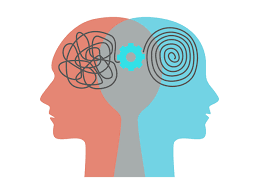
Why the Brain Struggles to Unlearn Old Habits
Another reason humans resist change is that the brain is wired to conserve energy. Established habits and routines are managed by the basal ganglia, a part of the brain responsible for automatic behaviors. Once a habit is formed, it becomes effortless and requires minimal cognitive effort.
Change disrupts these patterns, requiring the brain to work harder to establish new habits. This is why learning new systems, adopting new leadership styles, or adjusting to a new organizational structure can feel mentally exhausting. The prefrontal cortex, which handles complex thinking and decision-making, has to exert extra effort to override ingrained behaviors.
Without repeated exposure and reinforcement, the brain prefers to revert to familiar routines, even if those routines are outdated or inefficient. This is why effective change management involves gradual adjustments, consistent reinforcement, and ongoing training to help individuals internalize new behaviors.
The Fear of the Unknown and Psychological Safety
The brain is also deeply influenced by uncertainty. When individuals do not have enough information about a change—such as why it is happening, how it will affect them, or what their future will look like—the amygdala interprets this uncertainty as a threat. The unknown can be more frightening than a known negative outcome.
For example, an employee facing an organizational restructure may fear that they will lose their job, even if leadership has provided no indication of layoffs. This uncertainty fuels stress, anxiety, and resistance.
To counteract this, leaders must create psychological safety—an environment where employees feel comfortable asking questions, expressing concerns, and making mistakes without fear of judgment. Clear, transparent communication reduces uncertainty and reassures individuals that change is being managed with their well-being in mind.
Strategies to Overcome Psychological Resistance to Change
While the brain’s natural tendency is to resist change, it is also capable of adapting, learning, and growing. Understanding how resistance works allows leaders and organizations to implement strategies that make transitions smoother and more successful.
1. Acknowledge and Normalize Resistance – Leaders should recognize that resistance is a natural reaction and not a sign of failure. Validating employees’ concerns fosters trust and openness.
2. Communicate the “Why” Behind Change – People are more likely to accept change when they understand its purpose. Leaders should clearly articulate the benefits, vision, and long-term impact of the change.
3. Provide Psychological Safety – Encouraging open dialogue, addressing concerns, and fostering a culture where employees feel safe expressing their doubts can help reduce fear-driven resistance.
4. Break Change into Small Steps – Gradual, incremental changes are easier for the brain to process than abrupt, large-scale transformations. Leaders should introduce change in manageable phases.
5. Encourage Participation and Ownership – When employees feel involved in shaping change, they are more likely to embrace it. Seeking input, allowing employees to contribute ideas, and involving them in decision-making reduces resistance.
6. Use Repetition and Positive Reinforcement – Change must be reinforced over time through practice, recognition, and reward. The more often individuals engage with new behaviors, the stronger the neural pathways supporting them become.
7. Leverage Peer Influence – People are more likely to accept change when they see others embracing it successfully. Change champions and early adopters can serve as role models within the organization.
The human brain perceives change as a disruption to stability, often activating survival responses such as fight, flight, or freeze. This instinctive resistance is rooted in the brain’s need for predictability, its reliance on habitual behaviors, and its aversion to uncertainty and perceived loss. Understanding the neuroscience behind change resistance allows leaders to approach transitions with empathy, clarity, and strategy.
By fostering psychological safety, communicating effectively, reinforcing new habits, and involving employees in the change process, organizations can help individuals move past fear and embrace adaptability. The key to successful change is not eliminating resistance but understanding and managing it in a way that transforms fear into opportunity.
Emotional and Cognitive Barriers to Change
Change is often met with resistance, not because people dislike improvement, but because it disrupts their sense of stability and control. Emotional and cognitive barriers make adapting to change difficult, even when the change is beneficial. Among these barriers, fear, loss aversion, and uncertainty are the most significant, shaping how individuals perceive and respond to new situations. Understanding these blockers is crucial for leaders and organizations aiming to implement successful transitions.
Fear: The Emotional Resistance to Change
Fear is a natural response to change because the brain perceives it as a potential threat. Even in non-threatening situations, such as workplace transformations, the brain treats uncertainty as something to be wary of. This response is primarily driven by the amygdala, which triggers the fight, flight, or freeze mechanism when faced with the unknown.
Many employees experience fear in response to change because they worry about failing to adapt or meeting new expectations. Others fear that their expertise may no longer be relevant, especially when new technologies or systems replace long-standing methods. Some individuals fear job loss, particularly when restructuring or automation is involved. Fear-based resistance can manifest as defensive behaviors, disengagement, or active opposition to change. Leaders must acknowledge and address these fears through clear communication, reassurance, and structured support systems to help employees feel secure during transitions.
Loss Aversion: Why People Cling to the Familiar
Loss aversion is a psychological principle stating that people feel the pain of loss more intensely than they feel the joy of gain. This principle explains why individuals instinctively resist change and hold on to the familiar. When organizations introduce a new process, employees may focus on what they are losing—whether it’s a familiar system, a comfortable routine, or a sense of control—rather than what they might gain. Even if the change leads to improved efficiency or reduced workload, the brain initially perceives it as a loss rather than a benefit.
Resistance often stems from a perceived loss of control, particularly when change is imposed rather than collaboratively introduced. Employees may also struggle with losing workplace relationships if restructuring alters team dynamics. Additionally, the disruption of well-established routines can create a sense of instability, making people hesitant to embrace new ways of working. To counter loss aversion, organizations must emphasize what employees stand to gain. Leaders should communicate the long-term advantages of the change and create opportunities for employees to see tangible benefits early in the transition process.
Uncertainty: The Paralysis of the Unknown
Uncertainty is one of the biggest cognitive barriers to change. The brain craves predictability, and when faced with ambiguous outcomes, it struggles to process information effectively. As a result, many people prefer to stick with a known but imperfect system rather than adopt an unfamiliar one, even if it holds potential advantages.
Uncertainty becomes particularly problematic in organizations when employees are unclear about how the change will affect their roles. When communication about change is vague or inconsistent, speculation and anxiety increase, leading to disengagement. Additionally, when organizations fail to provide a clear roadmap for implementation, employees may become hesitant to take initiative, unsure of what steps to follow. This often results in inaction and delays, as individuals wait for more clarity before committing to the transition.
To mitigate uncertainty, leaders should prioritize open and transparent communication. Providing employees with clear and frequent updates prevents speculation and reduces anxiety. Offering detailed expectations and step-by-step processes can help employees regain a sense of control and direction. Encouraging open dialogue, where employees feel comfortable asking questions and expressing concerns, fosters trust and engagement in the process.

Case Study: The Uncertainty of the Yahoo-Tumblr Acquisition
A notable example of uncertainty leading to disengagement and resistance occurred during Yahoo’s acquisition of Tumblr in 2013. At the time, Tumblr was a popular social media and blogging platform with a strong, loyal user base and a distinct culture. When Yahoo acquired the company for $1.1 billion, employees and users alike were left uncertain about the platform’s future.
One of the biggest sources of uncertainty was the lack of clear communication from leadership regarding Tumblr’s direction under Yahoo. Employees were unsure whether Yahoo would maintain Tumblr’s independent identity or integrate it into its existing ecosystem. The absence of a transparent transition plan created anxiety and resistance among both Tumblr employees and its user community, many of whom feared Yahoo would commercialize the platform in a way that undermined its core values.
The uncertainty surrounding Tumblr’s future also hindered innovation and decision-making within the company. Employees became hesitant to take risks or push forward new initiatives, as they were unsure whether their projects would be relevant under Yahoo’s leadership. Users, meanwhile, disengaged from the platform, worried that Yahoo’s influence would lead to unwanted changes.
Ultimately, poorly managed uncertainty contributed to Tumblr’s decline. The platform lost its appeal to advertisers, its user base shrank, and Yahoo failed to capitalize on the acquisition. Verizon eventually acquired Yahoo (and Tumblr along with it) in 2017, but by then, Tumblr had lost much of its influence in the social media landscape.
This case highlights how uncertainty can create disengagement, hesitation, and resistance to change. Had Yahoo provided a clearer roadmap, openly communicated its vision, and addressed employee and user concerns, it might have mitigated uncertainty and fostered greater alignment. This serves as a crucial lesson for leaders—change itself is not the problem, but a lack of clarity and communication can cause it to fail.
Overcoming Emotional and Cognitive Barriers
While fear, loss aversion, and uncertainty are natural responses to change, they can be managed with intentional leadership, structured communication, and employee involvement. One effective approach is to normalize resistance by acknowledging that it is a normal psychological reaction rather than a sign of negativity. Leaders who validate employee concerns rather than dismissing them can build stronger trust and cooperation.
Another important strategy is to frame change positively. Rather than focusing on what is being taken away, leaders should highlight the benefits and opportunities that come with the change. Using real-world success stories and testimonials from employees who have successfully adapted can help make transitions feel less intimidating.
Providing stability during times of change is also essential. Even as organizations undergo transformation, employees need some level of predictability to maintain their confidence. Keeping certain familiar structures in place, offering training, and ensuring leadership remains accessible can help ease the transition.
Encouraging employee participation in the change process can significantly reduce resistance. When employees feel they have a say in how changes are implemented, they are more likely to engage with the process rather than resist it. Leaders should seek feedback, involve employees in decision-making, and empower teams to take ownership of specific aspects of the transition.
Finally, offering continuous support is crucial. Change does not happen overnight, and employees need ongoing training, coaching, and mentorship to develop confidence in their new roles. Organizations that provide consistent guidance and reinforcement help employees adapt at their own pace, making transitions smoother and more successful.
Conclusion
Fear, loss aversion, and uncertainty are natural emotional and cognitive barriers to change. These responses are deeply rooted in survival instincts and should not be mistaken for stubbornness or incompetence. Organizations that recognize these barriers and implement strategies to reduce fear, minimize perceived loss, and clarify uncertainty create environments where employees feel supported rather than threatened.
By fostering open communication, involving employees in decision-making, and framing transitions in a positive light, organizations can help individuals embrace change rather than resist it. The goal is not to eliminate fear but to manage it in a way that transforms resistance into resilience.

Exercise 1.4: Pairs Exercise -Identifying and Overcoming Resistance to Change
To help participants recognize psychological resistance to change in themselves and others and explore strategies for overcoming it.
1. Pair Up: Each participant pairs with a partner.
2. Personal Reflection: Each person recalls a time when they resisted change—this could be in the workplace, personal life, or a team environment. They should consider:
• What emotions did they experience? (Fear, frustration, uncertainty, etc.)
• What was their instinctive reaction? (Fight, flight, or freeze?)
• What eventually helped them adapt (or what could have helped)?
3. Discussion: Each partner takes turns sharing their experience while the other listens. After sharing, they discuss:
• Similarities and differences in their reactions.
• Common emotional and cognitive barriers they both experienced.
• What leadership or organizational support would have helped them adapt more easily?
4. Application: Each pair brainstorms two practical strategies that could help teams overcome resistance in a workplace setting. These could include clear communication techniques, ways to provide psychological safety, or small steps to make transitions smoother.
Participants gain a deeper awareness of their own responses to change, recognize common patterns of resistance, and leave with actionable strategies for supporting themselves and others through transitions.

Course Manual 5: What Change Resistance Looks Like
Change resistance is a natural human response that manifests in various ways within the workplace. When employees feel uncertain, overwhelmed, or disconnected from an organizational change, they often resist it—whether consciously or unconsciously. Resistance does not always appear as outright defiance; instead, it frequently takes the form of avoidance, disengagement, or passive opposition. Employees may miss deadlines, delay responses, take more sick days, or simply fail to implement the new processes.
Understanding what resistance looks like in a workplace setting is critical for leaders and managers. Resistance can stem from fear of the unknown, perceived loss of control, or skepticism about the benefits of change. However, rather than viewing resistance as an obstacle, organizations should see it as valuable feedback. When properly addressed, resistance can highlight gaps in communication, training, or leadership, ultimately leading to better change management strategies.
This lesson explores the different ways change resistance shows up in organizations, why employees resist change, and how leaders can recognize, address, and transform resistance into engagement. By identifying the subtle and overt signs of resistance, organizations can implement strategies that encourage adaptability, build trust, and support employees through transitions.
The Subtle Signs of Resistance – Identifying Passive Forms of Resistance
Resistance to change in the workplace is not always loud or confrontational. In fact, the most common and disruptive forms of resistance are often subtle and passive. Employees who resist change may not openly voice their objections but instead express their reluctance through procrastination, disengagement, and poor communication. These behaviors can significantly slow down the implementation of change initiatives, create workplace tension, and reduce overall productivity. Understanding these subtle signs is crucial for leaders who want to address resistance early and support employees through transitions effectively.
One of the earliest and most common signs of passive resistance is procrastination. Employees who are uncertain or uncomfortable with a change may delay taking action on tasks related to it. This can take the form of missed deadlines, incomplete work, or frequent requests for extensions. When people feel overwhelmed or skeptical about a change, they may put off engaging with it altogether.
For example, if a company implements a new software system, some employees might postpone learning how to use it, even when training sessions are readily available. Instead of actively refusing to comply, they simply delay, hoping that the change will either be reversed or that they can continue using old methods for as long as possible.
Leaders should pay attention to repeated delays in adopting new processes or systems. Addressing procrastination requires clear communication about why the change is necessary and providing employees with the training and support they need to feel confident in adapting to it.
Lack of Engagement: Disinterest or Withdrawal
When employees resist change, they often disengage from discussions, training, and team activities related to the transition. Lack of engagement can manifest in several ways, such as avoiding meetings, not contributing ideas, or appearing uninterested in change-related conversations.
For instance, during a company restructuring, some employees may remain silent in meetings where strategic shifts are discussed. Instead of raising concerns or asking questions, they withdraw, signaling that they are not fully committed to or accepting of the change. Others may reduce their participation in collaborative efforts, avoiding new responsibilities tied to the transition.
A disengaged workforce can slow down momentum and morale. Leaders should recognize disengagement as a sign that employees may feel uncertain or disconnected from the change initiative. Encouraging open dialogue, actively seeking employee feedback, and involving them in decision-making can help re-engage those who feel sidelined or resistant.
Poor Communication: Withholding Information and Passive-Aggressive Behaviors
Resistance often appears in the way employees communicate—or fail to communicate—about change. Some employees may withhold critical information, avoid responding to emails, or fail to update colleagues about project progress. This lack of communication can create confusion, slow productivity, and undermine the success of a change initiative.
In more extreme cases, resistance may take the form of passive-aggressive communication. Employees might agree to a change publicly but subtly undermine it through their actions. They may spread skepticism through offhand remarks, use sarcasm to express dissatisfaction, or make minimal effort when implementing the new process.
For example, if a company adopts a remote work policy, some managers may show their disapproval by being slow to approve remote work requests, insisting on unnecessary in-office meetings, or questioning the productivity of remote employees—even when evidence suggests the transition is working.
To combat communication-related resistance, leaders should foster a culture of transparency and openness. Encouraging employees to share their concerns and providing clear, honest responses can reduce uncertainty and help employees feel heard rather than dismissed.

Increased Absenteeism and Low Productivity
Another subtle indicator of change resistance is an increase in absenteeism. When employees feel stressed, anxious, or disengaged due to workplace changes, they may take more sick days or avoid the workplace altogether. This type of resistance can be particularly damaging because it affects overall team morale and disrupts workflows.
Additionally, some employees may remain physically present but mentally disengaged. They may appear distracted, complete tasks at a slower pace, or produce lower-quality work. This type of low productivity can be difficult to identify, as it often blends into the normal challenges of workplace operations. However, when multiple employees exhibit these signs following a major change initiative, it could indicate a deeper issue related to resistance.
Leaders should monitor patterns of absenteeism and declining performance, addressing concerns before they escalate. Offering support through one-on-one check-ins, wellness programs, or mental health resources can help employees navigate the stress of change and prevent disengagement from turning into full-scale resistance.
Workarounds and Quiet Noncompliance
Employees who resist change often find ways to work around new processes rather than openly refusing to follow them. This might involve using old systems instead of newly introduced ones, bypassing new policies, or finding loopholes to maintain familiar routines.
For example, if an organization introduces a digital project management tool, some employees may continue using emails or spreadsheets to track progress instead of embracing the new system. While they are not explicitly refusing to comply, their actions slow down adoption and reduce the effectiveness of the change.
Quiet noncompliance can be particularly frustrating for leaders because it is not overt rebellion—it is subtle sabotage. Employees may claim they “didn’t know” about the change or that they “forgot” to follow the new process. While these justifications may seem minor, when repeated across an organization, they create significant roadblocks to progress.
To address this, leaders should ensure that employees understand the purpose of the change and how it benefits them. Providing incentives, recognizing early adopters, and setting clear expectations can help prevent workarounds and encourage full participation.
Addressing Subtle Resistance in the Workplace
Identifying passive forms of resistance is only the first step—leaders must also take proactive measures to address and transform resistance into engagement. Here are a few key strategies:
Create a Safe Space for Open Dialogue – Employees may resist change because they do not feel heard. Creating opportunities for open discussions, anonymous feedback, and one-on-one meetings can help leaders uncover hidden concerns and address them effectively.
Clarify the “Why” Behind the Change – Employees are more likely to resist change when they do not understand its purpose. Clearly communicating the reasons for the transition and how it benefits employees can help build buy-in.
Provide Training and Support – Resistance often stems from fear of the unknown. Offering hands-on training, mentorship, and ongoing support can help employees feel more confident and prepared for change.
Recognize and Reward Adaptability – Positive reinforcement can help shift attitudes toward change. Recognizing employees who embrace change and rewarding early adopters can create momentum and encourage others to follow.
Monitor and Address Resistance Early – Leaders should be proactive in identifying resistance and addressing it before it becomes a widespread issue. Regular check-ins, surveys, and performance reviews can help gauge employee sentiment and adjust strategies accordingly.
By recognizing the subtle signs of change resistance and implementing proactive strategies, organizations can create a more adaptive and resilient workforce. Rather than viewing resistance as a roadblock, leaders should see it as an opportunity to engage employees, build trust, and foster a culture of continuous improvement.
Active vs. Passive Resistance – Understanding the Difference Between Vocal Opposition and Silent Disengagement
Resistance to change can take different forms, and understanding these variations is essential for leaders who aim to manage change effectively. Broadly speaking, resistance falls into two categories: active resistance, which is overt and vocal, and passive resistance, which is subtle and often unnoticed until it begins to impact productivity and morale. Both forms of resistance can hinder change efforts, but they require different approaches to resolution.
Active Resistance – Open and Vocal Opposition
Active resistance is the most visible and immediate form of pushback against change. Employees who engage in active resistance express their opposition openly through complaints, arguments, or outright refusal to comply with new processes. This type of resistance is typically fueled by strong emotions, such as fear, frustration, or distrust in leadership.
For example, when a company announces a major structural reorganization, employees demonstrating active resistance might openly question the decision in meetings, challenge leadership’s rationale, or express dissatisfaction through workplace forums or social media. Some might even organize petitions, protest against the changes, or directly refuse to implement new policies.
While active resistance can be disruptive, it is also an opportunity for dialogue. Since these employees are vocal about their concerns, leaders have the chance to engage with them, address misunderstandings, and involve them in refining the change process. When handled with empathy and transparency, active resistors can sometimes become change advocates if their concerns are acknowledged and resolved.
Passive Resistance – Silent Disengagement and Avoidance
Unlike active resistance, passive resistance is more difficult to detect because it manifests through subtle behaviors rather than open defiance. Employees who passively resist change may not outwardly oppose it, but they quietly disengage, delay implementation, or continue using old processes despite new policies being in place.
Common signs of passive resistance include:
• Procrastination – Avoiding tasks related to the change initiative.
• Low participation – Remaining silent in meetings or training sessions.
• Minimal effort – Doing the bare minimum to comply with new expectations.
• Absenteeism – Taking frequent sick days or avoiding the workplace altogether.
• Workarounds – Finding ways to maintain old habits rather than adopting the new system.
For example, if a company rolls out new project management software, employees engaging in passive resistance may nod in agreement during training but continue using outdated methods like spreadsheets or email instead of the designated platform.
Passive resistance is particularly harmful because it is harder to identify and address. Employees may appear compliant on the surface while undermining change efforts behind the scenes. Over time, this silent disengagement can create inefficiencies, lower morale, and slow down the organization’s ability to implement necessary changes.
Addressing Active and Passive Resistance
Because active and passive resistance stem from different concerns and behaviors, they require different leadership approaches:
For Active Resistance: Leaders should engage in open discussions, acknowledge concerns, and provide clear explanations for the change. Actively resistant employees often want their voices heard, and by addressing their concerns, leaders can reduce tension and create buy-in.
For Passive Resistance: Leaders must be proactive in identifying disengagement and re-engaging employees through direct communication, hands-on support, and incentives. Since passive resistors may not voice their concerns, leaders should create safe spaces for anonymous feedback and monitor employee behavior for early signs of withdrawal.
Both forms of resistance indicate that employees need reassurance, support, and a clear understanding of why the change is happening. By addressing these concerns head-on, organizations can reduce opposition, increase engagement, and create a culture where change is embraced rather than feared.
How Leaders Can Recognize Resistance Early
Resistance to change is natural, but when left unchecked, it can slow down progress, reduce productivity, and create a negative work culture. The key to effective change management is recognizing resistance early before it becomes a major obstacle. Leaders who can detect subtle signs of pushback can take proactive steps to address concerns, re-engage employees, and ensure smoother transitions.
One of the earliest indicators of resistance is a shift in employee behavior. Leaders should pay attention to changes in engagement, communication, and work habits. Employees who were previously active in meetings but suddenly become silent, or those who consistently meet deadlines but start missing them, may be showing signs of disengagement. Increased absenteeism, reluctance to participate in discussions, or avoiding leadership interactions can also signal resistance.
For example, if a company introduces a new performance evaluation system and some employees start skipping one-on-one meetings or delay completing self-assessments, it may indicate discomfort with the change. Addressing this early by encouraging open dialogue can prevent deeper resistance.
Resistance often surfaces in workplace conversations before it manifests in actions. Leaders should actively listen for concerns, skepticism, or negative sentiments regarding change. Employees might express doubts subtly, using phrases like:
• “This won’t work here.”
• “We’ve always done it this way.”
• “I don’t see why we need to change.”
These statements, even if casually made, can indicate underlying fears or frustrations. Engaging employees in follow-up discussions allows leaders to clarify misconceptions, provide reassurance, and involve them in the change process.
Resistance often leads to decreased performance, whether through passive disengagement or active opposition. Leaders should monitor key performance indicators (KPIs) such as project completion rates, meeting attendance, and overall team morale. A sudden drop in productivity after announcing a change could indicate resistance.
For example, if a company rolls out new software and sees a decline in task completion, it may suggest employees are hesitant to use the new system. Offering additional training, resources, or incentives can help ease the transition.
Employees may not always voice their concerns openly, especially if they fear retaliation or believe their input won’t matter. Leaders should create safe spaces for honest feedback through anonymous surveys, one-on-one check-ins, and open forums. When employees feel heard, they are more likely to express concerns early, allowing leaders to address issues before resistance escalates.
By recognizing early warning signs and fostering open communication, leaders can intervene before resistance becomes a roadblock. Proactive engagement, active listening, and a supportive culture can turn resistance into an opportunity for collaboration and improvement.

Case Study: Resistance to Change at Ford Motor Company
A well-documented example of leaders recognizing and addressing early resistance to change comes from Ford Motor Company during its major restructuring efforts in the early 2000s. When Alan Mulally took over as CEO in 2006, Ford was struggling financially, facing declining market share, and dealing with inefficiencies across its operations. Mulally introduced One Ford, a cultural and strategic transformation designed to unify global operations, improve efficiency, and change the way leadership engaged with employees.
One of the biggest challenges Mulally faced was internal resistance, particularly from senior executives and managers who were accustomed to Ford’s old way of doing business. He quickly noticed that leaders would sit through meetings in silence, avoid difficult conversations, and push back against new reporting and accountability structures. Employees were hesitant to change long-standing processes, fearing job security, loss of influence, or failure.
For example, early in the transition, senior executives were reluctant to admit mistakes or challenges in their departments. When Mulally introduced mandatory weekly Business Plan Review (BPR) meetings, where leaders had to provide honest assessments of their divisions, he noticed that all reports were initially marked as “green” (indicating no issues). However, Ford was losing billions of dollars at the time—clearly, things weren’t fine.
Rather than penalizing or forcing immediate compliance, Mulally took a collaborative and open approach:
• He publicly praised transparency when an executive, Mark Fields, finally reported a problem in his department. Instead of reprimanding him, Mulally thanked him, showing the leadership team that honesty would be met with support rather than blame.
• He actively listened to concerns, encouraging leaders to discuss the challenges of adopting new accountability measures.
• He implemented a safe space for feedback, where employees could voice concerns without fear of retaliation.
• Recognizing that many employees feared the unknown, he provided clear roadmaps, outlining exactly how Ford would return to profitability and what role each employee played in that journey.
As a result of these proactive strategies, resistance decreased over time, and Ford’s leadership culture shifted to one of greater collaboration and transparency. Employees became more engaged in problem-solving rather than avoiding accountability. Ultimately, Mulally’s change strategy helped turn Ford around, making it one of the only major U.S. automakers to avoid bankruptcy during the 2008 financial crisis.
This example illustrates how recognizing subtle resistance early—like disengagement and reluctance to communicate—can help leaders implement strategies to re-engage employees and drive successful transformation.

Exercise 1.5: Change in Action
Help participants recognize different forms of resistance to change and reflect on how they typically respond in workplace scenarios.
1. Divide into Small Groups:
Each group will discuss a workplace change scenario and identify potential resistance behaviors.
2. Scenario Assignment:
Each group picks (or is assigned) one of the following workplace change scenarios:
• A new project management software is introduced, replacing an older system.
• Leadership announces a company-wide restructuring and role realignments.
• A long-standing policy, such as flexible work hours, is removed or changed.
• The company transitions to remote or hybrid work after years of an office-only culture.
3. Discussion Questions:
• What are some subtle and active ways employees might resist this change?
• How would a disengaged vs. vocal resistor behave in this scenario?
• What early signs might leaders notice that indicate resistance?
• What could leadership do to address concerns before resistance escalates?
4. Group Sharing:
After 10 minutes of discussion, each group shares their findings with the larger group.
By recognizing resistance early and discussing ways to manage it, participants gain a deeper understanding of how they and their colleagues react to change, fostering a more adaptable and engaged work culture.

Course Manual 6: The Change Approach
Successfully navigating change requires more than just implementing new policies or procedures—it involves guiding individuals through a structured process that helps them accept, adapt to, and sustain the change. The Change Approach provides a framework for understanding how people move through transformation, ensuring that resistance is minimized and adoption is maximized.
This model is built around five key stages: Awareness, Desire, Knowledge, Ability, and Reinforcement (often abbreviated as ADKAR). Each stage represents a critical component of individual and organizational change, from recognizing the need for change to sustaining long-term behavioral shifts. By understanding these phases, leaders can create strategies that help employees move through change with greater ease and commitment.
Organizations often struggle with change when employees are unaware of its necessity, lack motivation, or feel unprepared for new expectations. Without reinforcement, even well-adopted changes can regress over time. The Change Approach ensures that transformation efforts address these challenges at every stage, increasing the likelihood of successful and lasting change.
This lesson explores each stage in detail, providing insights into how leaders can guide their teams through the change process.
Building Awareness: Communicating the Need for Change
Change efforts often fail because employees do not fully understand why change is happening or how it affects them. Building awareness is the foundation of any successful change initiative, ensuring that individuals recognize the need for transformation and understand its purpose. Without awareness, resistance is likely, and engagement will be minimal.
The first step in creating awareness is to communicate a clear and compelling case for change. Employees need to understand not just what is changing but why. This includes addressing external factors such as market trends, competition, or regulatory changes, as well as internal drivers like performance gaps, inefficiencies, or cultural shifts. If employees perceive change as unnecessary or irrelevant, they will resist or disengage.
Leaders must frame change in a way that resonates with employees by linking it to their roles, values, and long-term goals. For example, rather than simply announcing a new technology system, leaders should explain how it will improve workflow efficiency, reduce manual tasks, or enhance job satisfaction. Using real-world examples, data, and storytelling can help make the case for change more relatable and urgent.
Successful change communication requires more than just a one-time announcement. It should be an ongoing conversation. Leaders should use multiple communication channels—including town hall meetings, email updates, team discussions, and video messages—to reinforce key messages and reach different learning styles. Visual aids like infographics, before-and-after scenarios, or short explainer videos can help simplify complex messages.
Additionally, transparency is key. Employees are more likely to trust the change process when leaders provide honest, timely information. If there are uncertainties, acknowledging them rather than avoiding difficult conversations builds credibility.
Building awareness is not just about telling employees about change—it is also about listening. Leaders should invite employees to ask questions, express concerns, and provide feedback. Holding Q&A sessions, surveys, or small-group discussions can help surface misconceptions and allow leaders to address them proactively.
When employees feel that their voices matter, they are more likely to engage with and accept the change process. Leaders should also identify early adopters or influential employees who can serve as change champions, reinforcing the message within their teams.
By ensuring employees fully understand the need for change, organizations lay the groundwork for a smoother transition. Clear communication, transparency, and engagement efforts help create a shared sense of purpose, reducing resistance and setting the stage for successful implementation.
Fostering Desire: Overcoming Resistance and Gaining Buy-In
Creating awareness about change is essential, but awareness alone is not enough—employees must also feel a genuine desire to support and engage in the change process. Without motivation, even the best-planned initiatives will face resistance. Desire is the emotional commitment to change, and fostering it requires addressing concerns, demonstrating benefits, and engaging employees at every level.
One of the biggest obstacles to change is resistance, which often stems from fear, uncertainty, or perceived loss. Employees may worry about job security, increased workloads, or their ability to adapt to new processes. To gain buy-in, organizations must first understand these concerns and address them transparently.
Leaders should engage employees in open discussions to uncover specific fears and barriers. Listening to concerns, acknowledging difficulties, and providing reassurances can help employees feel heard and valued. Resistance should not be dismissed as negativity; instead, it should be seen as an opportunity to clarify misunderstandings and improve the change process.
People are more likely to embrace change when they see personal and organizational benefits. Simply stating that change is necessary for the company is not enough—employees need to understand how it will positively impact them.
For example, if a company is implementing a new digital system, instead of just saying, “This will increase efficiency,” leaders should explain how it will reduce repetitive tasks, save time, and eliminate frustrations employees currently face. Real-world examples, testimonials from early adopters, and data-driven success stories can help employees connect emotionally with the change.
Employees are more motivated to support change when they feel involved in shaping it. Leaders should seek feedback, allow employees to voice their opinions, and incorporate their input when possible. Involvement fosters a sense of ownership, making employees feel like change is happening with them, not to them.
Organizations can also identify change champions—respected employees who support the change and can advocate for it within their teams. When employees see their peers embracing change, they are more likely to follow.
Motivation can be strengthened through positive reinforcement. Recognizing employees who actively support change, celebrating small wins, and offering incentives (such as professional development opportunities or flexible work benefits) can help reinforce why the change is worth embracing.
By addressing fears, showing tangible benefits, involving employees, and rewarding engagement, organizations can turn resistance into motivation, ensuring that change is not just accepted—but embraced.
Developing Knowledge: Providing the Right Information and Training
Once employees understand the need for change and have developed a desire to support it, the next critical step is knowledge acquisition. Without the right information and skills, even the most motivated employees will struggle to implement change effectively. Knowledge-building involves providing clear instructions, structured training, and ongoing learning opportunities to ensure a smooth transition.
Before training begins, organizations must ensure that employees have a clear understanding of what is changing, why it is happening, and what is expected of them. Uncertainty breeds resistance, so clear and concise communication is essential. Leaders should break down the change into specific objectives, outlining how employees’ roles will be affected and what new skills or knowledge they will need to succeed.
To make this process easier, organizations can provide FAQ documents, explainer videos, or interactive guides that answer common questions about the change. Regular check-ins and town hall meetings also help reinforce clarity.
Not all employees learn the same way, so training programs should be diverse and accessible. Some employees benefit from hands-on workshops, while others may prefer self-paced e-learning modules. Offering a mix of in-person training, online courses, video tutorials, and coaching sessions ensures that employees can learn in a way that suits them best.
Additionally, organizations should assess skill gaps before launching training initiatives. By identifying areas where employees need the most support, companies can customize learning programs to be more effective and relevant.
Knowledge alone is not enough—employees must apply what they’ve learned to build confidence and competence. Organizations should create opportunities for real-world application, such as pilot programs, role-playing exercises, or mentorship initiatives where experienced employees guide others through the transition.
For example, if a company introduces new software, employees should have a safe environment to practice using it before full implementation. Providing “sandbox” environments, where employees can experiment without consequences, helps ease anxiety and improves learning retention.
Providing Ongoing Support and Resources
Learning is an ongoing process, not a one-time event. Organizations should offer continuous support, including:
• Follow-up Q&A sessions to address lingering concerns.
• Online knowledge bases with step-by-step guides.
• Peer support groups or mentors to help employees adjust.
By equipping employees with the right knowledge, training, and hands-on experience, organizations empower them to confidently navigate change and contribute to a successful transition.

Case Study: Microsoft’s Transition to Cloud-Based Services
One of the most prominent examples of developing knowledge through structured training and support occurred during Microsoft’s transition from traditional software products to cloud-based services with Office 365 and Azure. This shift required both internal employees and customers to adapt to a new way of working, moving from licensed software installations to subscription-based cloud services.
When Microsoft introduced Office 365 and Azure, the company recognized that employees and clients needed clear guidance on how the shift would impact them. They developed comprehensive FAQ documents, webinars, and explainer videos that outlined the benefits of cloud computing, how it differed from previous models, and how it would enhance productivity and security.
Additionally, Microsoft held global town halls and interactive Q&A sessions to address concerns and provide transparency about the transition.
Understanding that users had different learning preferences, Microsoft developed a multi-faceted training approach, including:
• In-person workshops for enterprise clients and employees.
• E-learning modules on Microsoft Learn and LinkedIn Learning.
• Step-by-step tutorials and simulations to allow hands-on practice in a risk-free environment.
• Certification programs (such as Microsoft Azure Fundamentals) to help employees and IT professionals gain in-depth knowledge and credentials.
By providing diverse learning formats, Microsoft ensured that employees and customers could engage with training in a way that best suited their needs.
Microsoft adopted a “sandbox” approach, allowing employees and clients to experiment with Office 365 and Azure before full implementation. This provided a safe environment to explore cloud-based applications, reducing anxiety about making mistakes.
For example, companies transitioning to Azure were given trial accounts and guided labs to test cloud-based operations before migrating business-critical applications.
Ongoing Support and Continuous Learning
Recognizing that learning is an ongoing process, Microsoft established:
• 24/7 online knowledge bases with troubleshooting guides and user manuals.
• Community support forums where IT professionals could ask questions and share solutions.
• Dedicated account managers and Microsoft-certified trainers to assist organizations with large-scale adoption.
This continuous reinforcement ensured that employees and customers felt supported long after the initial transition.
Outcome:
By prioritizing structured knowledge-building, Microsoft successfully transitioned millions of users to its cloud-based ecosystem. The combination of clear expectations, tailored training, hands-on practice, and ongoing support ensured that both employees and clients were confident in adopting and sustaining the change.
Enhancing Ability: Supporting Employees in Applying Change
Understanding and training are only part of a successful change initiative—employees must also be able to apply new skills and behaviors effectively. Without proper support, even motivated and well-trained employees may struggle to implement changes confidently. Enhancing ability means providing the tools, resources, and opportunities employees need to practice and refine their new skills in a real-world setting.
Even when employees receive thorough training, they may lack the confidence to apply what they’ve learned immediately. Organizations should focus on helping employees transition from theory to practice by offering structured opportunities for hands-on application.
One way to achieve this is through pilot programs or phased rollouts, where employees can test the new processes in a controlled environment before full implementation. For example, if a company introduces a new CRM system, select teams can use it first, gathering feedback and refining their approach before company-wide adoption. This minimizes disruption and allows employees to gain comfort with the new system.
For employees to apply change effectively, they need access to the right tools, technology, and support systems. Organizations should evaluate whether employees have the necessary infrastructure—such as updated software, user guides, and troubleshooting resources—to carry out new tasks smoothly.
Additionally, ongoing coaching and mentorship play a crucial role in helping employees feel supported. Assigning mentors or “change champions” who have already mastered the new system can provide on-the-job guidance, reducing stress and improving adoption rates.
Fear of failure is one of the biggest obstacles to applying change. Leaders must create a psychologically safe workplace where employees feel comfortable experimenting, making mistakes, and learning from them. Encouraging a growth mindset, where setbacks are seen as learning opportunities rather than failures, helps employees embrace change with greater confidence.
Simulations, shadowing opportunities, and peer collaboration can all help employees develop practical experience in a low-risk setting before full implementation.
Ongoing feedback ensures that employees are making progress and feeling supported. Leaders should schedule regular check-ins, performance reviews, and feedback loops to track progress and address any obstacles employees face in implementing change. Recognizing progress—whether through formal recognition or informal encouragement—helps build momentum and confidence.
By equipping employees with the tools, confidence, and opportunities to practice new behaviors, organizations can reduce resistance, increase adoption rates, and create a culture of adaptability that ensures long-term success.
Reinforcing Change: Sustaining Momentum and Preventing Reversion
Implementing change is only the first step; ensuring it sticks long-term is the real challenge. Without reinforcement, employees may revert to old habits, diminishing the effectiveness of change initiatives. Sustaining momentum requires consistent follow-up, reinforcement strategies, and cultural integration so that change becomes a natural part of the organization’s operations rather than a temporary shift.
For change to last, it must become embedded in everyday routines, values, and behaviors. Leaders should ensure that new processes, expectations, and mindsets are woven into the company’s culture rather than treated as isolated initiatives.
One effective way to achieve this is by aligning change with organizational goals and performance metrics. For example, if a company transitions to a more data-driven decision-making process, leaders should incorporate data literacy into performance evaluations and encourage employees to use data-backed reasoning in meetings and reports.
People are more likely to embrace and sustain change when they see its benefits and receive recognition. Organizations should implement reward systems that acknowledge individuals and teams who actively adopt and champion the change. This can include:
• Public recognition in team meetings
• Performance-based incentives
• Career advancement opportunities for employees who lead by example
Leaders should also highlight success stories, showcasing how the change has led to measurable improvements in productivity, collaboration, or efficiency. This reinforces the idea that the change is valuable and worth sustaining.
Even after the initial implementation, organizations must continue monitoring progress to ensure employees remain engaged with the new ways of working. This can be done through:
• Regular performance reviews
• Employee surveys to gather feedback
• Check-ins with managers and team leaders to assess adoption rates
Providing ongoing training and refresher courses ensures that employees continue developing their skills and don’t fall back into old habits due to lack of confidence or understanding.
Some employees may attempt to revert to old processes, especially when faced with challenges. Leaders should actively identify resistance and address concerns through open conversations, mentorship, and additional support. Encouraging a growth mindset—where change is seen as an opportunity for improvement rather than a disruption—helps sustain engagement.
Reinforcing change requires consistent effort, leadership support, and cultural integration. By embedding new behaviors into the organization’s DNA, recognizing early adopters, providing continuous learning, and addressing resistance, organizations can prevent reversion and ensure that change becomes a lasting, successful transformation.

Exercise 1.6: Reflection Exercise – Personal Change Journey
This exercise encourages participants to reflect on their own experiences with change, helping them connect the ADKAR model to real-life situations and recognize strategies that support successful transitions.
1. Think of a Change Experience
• Reflect on a personal or professional change you have experienced. This could be a workplace transition (e.g., adopting new technology, a leadership shift) or a personal change (e.g., moving to a new city, taking on a new role).
• Briefly describe what the change was and how you initially felt about it.
2. Map Your Experience to the ADKAR Model
• Awareness: Did you understand why the change was happening? How was it communicated to you?
• Desire: Were you motivated to embrace the change? What factors influenced your willingness (or resistance)?
• Knowledge: Were you given the right training and information to adapt? What helped or hindered your learning process?
• Ability: Did you feel confident in applying the change? What support or resources were provided to help you succeed?
• Reinforcement: Was the change sustained? What strategies helped make the change last (or what led to a reversion to old habits)?
3. Identify Key Takeaways
• What made the transition easier or more difficult for you?
• If you could go back, what would you have done differently to improve your adaptation?
• How can you apply these insights to help your team navigate change more effectively in the future?

Course Manual 7: Change Awareness
Change awareness is the foundation of successful transitions in any organization. People do not respond well to being blindsided by unexpected shifts, and resistance often stems from a lack of preparation or understanding. Effective change management starts the moment leaders recognize that a change is coming—not when every detail has been finalized. Waiting for “full” information before communicating a change is a mistake, as change itself is often fluid, with evolving circumstances. Instead, creating awareness early allows employees to process, adapt, and engage with the change gradually rather than react with shock or uncertainty.
Change awareness helps mitigate fear and speculation by providing employees with context and clarity about why the change is happening and what it means for them. Transparency builds trust, reduces misinformation, and sets the stage for acceptance and collaboration. Organizations that prioritize early awareness create a culture where employees feel included in the process rather than subjected to it.
This lesson explores key aspects of Change Awareness, including the role of leadership in communication, strategies for creating an open dialogue, common pitfalls to avoid, and how to build trust throughout transitions. By fostering awareness early, organizations can drive smoother, more successful change initiatives.
Why Early Awareness Matters
Change is inevitable in any organization, but how it is introduced plays a crucial role in determining its success. Early awareness of change is not just about informing employees—it is about preparing them mentally, emotionally, and practically for what is to come. When change is communicated proactively, employees have time to process, ask questions, and gradually adapt to the new reality. Without early awareness, employees may feel blindsided, leading to confusion, resistance, and disengagement.
Waiting until every detail of a change is finalized before communicating it is a common mistake. In reality, full information may never be available because change is often fluid, with adjustments occurring along the way. Leaders who share information early—even when all details are not yet confirmed—help build trust and prevent fear-driven resistance. Employees appreciate honesty, and providing them with timely insights fosters a culture of transparency and collaboration rather than secrecy and uncertainty.
One of the most significant challenges in change management is overcoming resistance. People instinctively resist what they do not understand, and when employees feel left in the dark, they often fill the gaps with speculation, misinformation, and worst-case scenarios. This fear of the unknown can create unnecessary anxiety, reducing productivity and morale.
By introducing change early, leaders can provide context and clarity, reducing the likelihood of emotional resistance. When employees have time to understand the reasons behind a change, they are more likely to accept it rather than push back against it. Transparency also gives leaders the opportunity to address concerns before they escalate, allowing employees to feel heard and involved in the process.
For example, if an organization plans to implement a new project management software, early awareness ensures that employees can mentally prepare, ask questions, and even contribute ideas on how the transition can be made smoother. In contrast, a last-minute rollout without warning would likely lead to frustration, confusion, and reluctance to embrace the new system.
Trust is a critical component of any successful change initiative. When leaders communicate change early, it signals to employees that they are valued and respected. Keeping employees informed fosters psychological safety, which encourages open communication and collaboration. Employees are more likely to support change when they feel like trusted stakeholders rather than passive recipients of a decision made without their input.
A culture of trust also means that employees are more likely to share their concerns and feedback openly, giving leaders the opportunity to refine their approach. Early awareness allows leaders to create a two-way conversation, where employees feel engaged rather than dictated to. This approach strengthens team cohesion and helps ensure that change efforts are met with cooperation rather than resistance.
Change that is introduced abruptly often results in operational disruptions. Employees who are caught off guard may struggle to adapt, leading to reduced productivity, errors, and inefficiencies. However, when employees are made aware of upcoming changes in advance, they can plan accordingly, adjust their workflows, and gradually integrate new processes into their routines.
For instance, if a company is shifting to a hybrid work model, employees who are informed early can prepare their schedules, communicate with their teams, and set up the necessary technology. Without early awareness, last-minute adjustments can cause logistical chaos, leading to stress and a decline in overall performance.
Employees are more likely to embrace change when they feel they are part of the process. Early awareness creates opportunities for employees to participate in discussions, provide input, and even influence the direction of change. This sense of ownership increases engagement and reduces resistance because employees feel a personal stake in making the change successful.
For example, when a company is planning a major restructuring, engaging employees early allows them to voice their concerns, ask for clarifications, and offer insights that leadership may not have considered. Employees who feel included in decision-making are more likely to champion the change rather than oppose it.
Most changes require employees to develop new skills, learn new technologies, or adjust to different ways of working. Early awareness provides them with the time needed to prepare. Whether it’s training for a new software system, adjusting to a new leadership structure, or learning new customer service protocols, employees who are given advance notice can begin the learning process gradually, reducing stress and ensuring a smoother transition.
For example, if a company is implementing a new AI-driven customer service tool, employees who are informed months in advance can participate in training sessions, practice using the tool, and gain confidence before the official launch. If they were only informed days before the rollout, they would likely feel overwhelmed and frustrated.

Case Study: Adobe’s Transition from Perpetual Licensing to Subscription-Based Model
One of the most significant corporate transitions in recent years was Adobe’s shift from selling perpetual software licenses to a cloud-based subscription model (Adobe Creative Cloud). This was a massive change for both customers and employees, requiring early awareness and strategic communication to ensure a smooth transition.
How Early Awareness Was Implemented
1. Gradual Announcement and Market Preparation:
Instead of abruptly switching from perpetual licenses to subscriptions, Adobe introduced the concept over time. They started hinting at the benefits of a cloud-based system in product updates and marketing materials before formally announcing the transition.
2. Internal Employee Alignment and Training:
Employees—especially those in sales, customer support, and product development—needed to understand the new business model and how to communicate it effectively. Adobe provided internal training sessions, ensuring employees could answer customer concerns confidently and advocate for the change.
3. Customer and Stakeholder Engagement:
Adobe anticipated resistance, as many long-term customers were accustomed to one-time software purchases. They addressed concerns early by:
• Hosting webinars and Q&A sessions to explain the benefits of the subscription model.
• Providing a transition period where customers could still purchase perpetual licenses while learning about Creative Cloud.
• Offering discounted pricing and incentives to encourage adoption.
The Outcome
By building early awareness, Adobe avoided a massive backlash and positioned its customers and employees for success. The transition ultimately became a game-changer for Adobe, leading to consistent revenue growth, a more engaged customer base, and stronger adoption of cloud-based features.
This case demonstrates that introducing change early, addressing concerns proactively, and ensuring employees are prepared can significantly increase the chances of a successful transformation.
Conclusion: Setting the Stage for Success
Early awareness is a crucial factor in successful change management. By preparing employees in advance, organizations can reduce uncertainty, prevent resistance, and create a culture of trust and engagement. Employees who are given time to process change are more likely to accept and adapt to it, rather than react with fear or pushback.
Leaders should prioritize open, honest, and continuous communication, even when they don’t have all the details. Transparency builds trust, fosters psychological safety, and encourages collaboration, ultimately leading to a smoother and more successful change process. Organizations that invest in early awareness set themselves up for long-term success by ensuring that employees feel prepared, supported, and engaged every step of the way.
The Role of Leadership in Change Communication
Effective change communication begins with leadership. Leaders play a critical role in shaping how employees perceive and respond to change. The way change is introduced, discussed, and reinforced determines whether employees embrace it with confidence or resist it out of fear and uncertainty. When leaders communicate with transparency, consistency, and empathy, they set the tone for a smoother transition, fostering trust and engagement.
Building Trust Through Transparency
One of the most important factors in successful change communication is transparency. Employees want to understand why change is happening, how it will impact them, and what the future holds. When leaders provide clear and honest information, they establish credibility and reduce speculation. Conversely, vague messaging or withholding details can lead to uncertainty, rumors, and resistance.
Transparency does not mean having all the answers at once. In many cases, change unfolds gradually, and some details may not be finalized. However, leaders can still communicate openly by acknowledging uncertainties, sharing what they do know, and committing to keeping employees informed as new information becomes available. This approach reassures employees that leadership is being upfront and values their trust.
Creating a Two-Way Communication Channel
Change communication should not be a one-way directive. Employees need opportunities to voice concerns, ask questions, and provide feedback. Leaders who actively listen and engage in dialogue demonstrate that they respect employees’ perspectives and are willing to address their concerns.
Holding Q&A sessions, town hall meetings, or feedback forums allows employees to express their thoughts and receive clarity on issues that matter to them. Even if employees do not agree with every decision, knowing that their voices are heard fosters a sense of inclusion and reduces resistance.
Delivering Consistent Messaging Across All Levels
Conflicting messages create confusion and weaken trust. When different leaders communicate change in inconsistent ways, employees may question the credibility of the initiative. To prevent this, organizations should ensure that all leaders are aligned on messaging before communicating with employees.
Providing leaders with clear guidelines, FAQs, and key talking points helps maintain consistency. When employees hear the same message from multiple sources, they gain confidence in the reliability of the information. Consistency also reduces misinformation and speculation, which can derail change efforts.
Leading by Example
Employees look to their leaders for guidance on how to navigate change. If leaders appear resistant, uncertain, or disengaged, employees will mirror those behaviors. On the other hand, leaders who embrace change, model adaptability, and maintain a positive outlook set an example for their teams.
For instance, if a company is transitioning to a digital work environment, leaders should actively use the new tools, participate in training, and demonstrate enthusiasm for the change. When employees see leaders fully engaged, they are more likely to follow suit.
Addressing Emotional Responses with Empathy
Change often triggers emotional responses, ranging from excitement to fear and frustration. Leaders must acknowledge these emotions rather than dismiss them. Employees need reassurance that their concerns are valid and that they will be supported throughout the transition.
Using empathetic language, recognizing employee anxieties, and providing emotional support create a psychologically safe environment. Leaders who acknowledge challenges while offering encouragement help employees feel valued and more willing to embrace change.
Providing Continuous Updates and Reinforcement
Change communication should not be a one-time event. Employees need regular updates to stay informed and engaged. Leaders should provide ongoing communication through multiple channels, such as emails, team meetings, internal newsletters, and one-on-one check-ins.
Regular updates help reinforce the change message, clarify any evolving details, and keep momentum going. When leaders maintain consistent communication, employees remain engaged and are less likely to revert to old habits.
Effective leadership in change communication sets the foundation for trust, engagement, and successful transitions. By being transparent, fostering two-way dialogue, maintaining consistency, leading by example, showing empathy, and providing continuous updates, leaders can guide employees through change with confidence. Trust is built through honest and frequent communication, ensuring that employees feel informed, heard, and supported every step of the way.
Common Pitfalls in Change Awareness
Building awareness is one of the most critical steps in managing change, yet many organizations fall into common pitfalls that create confusion, resistance, and disengagement. Effective change awareness requires strategic communication, transparency, and continuous engagement. Without these elements, employees may feel blindsided, frustrated, or resistant to the transition. Below are some of the most common mistakes organizations make when rolling out change and how to avoid them.
1. Delaying Communication Until Everything is Finalized
One of the biggest mistakes organizations make is waiting until they have every detail figured out before informing employees. While it may seem logical to have all the answers before making an announcement, this often leads to employees feeling blindsided when the change is finally introduced.
How to Avoid It:
Begin communication as soon as leadership knows the change is coming. Even if all the details are not yet available, keeping employees informed fosters trust and reduces speculation. Leaders can acknowledge uncertainty while assuring employees that updates will be provided as more information becomes available.
2. Providing Vague or Inconsistent Messaging
Unclear messaging creates confusion, uncertainty, and fear. When employees receive mixed messages about why the change is happening, how it will impact them, or what is expected, they are more likely to resist or disengage.
How to Avoid It:
Ensure that messaging is clear, consistent, and aligned across all communication channels. Leaders should prepare key messages in advance and provide talking points for managers so that employees receive uniform information. Using multiple communication methods, such as town hall meetings, emails, and team discussions, reinforces the message and prevents misinterpretation.
3. Failing to Address Employee Concerns
Resistance often arises when employees feel their concerns are not acknowledged. If leadership assumes that simply announcing a change is enough, employees may feel disregarded and become disengaged.
How to Avoid It:
Create opportunities for employees to ask questions, share concerns, and provide feedback. Hold Q&A sessions, conduct surveys, and establish open forums where employees feel heard. Leaders should acknowledge concerns honestly and provide reassurance where possible.
4. Treating Change Awareness as a One-Time Event
Many organizations make the mistake of assuming that a single announcement is sufficient for change awareness. However, employees need ongoing reminders, updates, and reinforcement to stay engaged.
How to Avoid It:
Develop a continuous awareness strategy with regular updates, progress reports, and reinforcement messaging. Leaders should communicate at multiple stages of the change process to ensure employees remain informed and engaged.
5. Underestimating the Emotional Impact of Change
Organizations often focus on the logistical aspects of change but overlook the emotional toll it can take on employees. Fear, anxiety, and uncertainty can lead to resistance if employees do not feel supported.
How to Avoid It:
Acknowledge the emotional side of change and offer support through leadership visibility, check-ins, and resources such as coaching or mentorship programs. Creating an environment of psychological safety allows employees to express concerns without fear of retaliation.
Avoiding these common pitfalls in change awareness helps organizations build trust, maintain engagement, and reduce resistance. By communicating early, providing clear and consistent messaging, addressing employee concerns, reinforcing awareness over time, and considering the emotional impact of change, organizations can create a smoother transition and ensure greater success in their change initiatives.

Exercise 1.7: Group Discussion
Change awareness is a critical factor in ensuring smooth transitions in the workplace. Organizations that communicate change early tend to experience less resistance and greater employee engagement. However, striking the right balance between transparency and uncertainty can be challenging.
This discussion will encourage participants to reflect on the importance of early change awareness, explore different communication strategies, and develop insights on how organizations can improve transparency while managing uncertainty effectively.

Course Manual 8: Change Desire
Awareness of change is the first step, but true commitment comes from desire—the willingness to embrace and actively support the change. Many employees understand that change is happening but may not feel motivated to adopt it. Desire is built when people see how the change benefits them personally rather than just the organization. Without this intrinsic motivation, resistance remains high, and adoption suffers.
One of the most effective ways to foster desire is by addressing WIIFM (What’s in it for me?) from the employees’ perspective. People are more likely to engage when they see positive outcomes for their roles, job satisfaction, workload, or career growth. Additionally, Change Champions—influential peers who support and advocate for the change—can play a crucial role in increasing buy-in.
This lesson explores the key strategies for cultivating desire, including aligning change with employee needs, leveraging influential leaders, and creating engagement opportunities. By actively addressing concerns, demonstrating benefits, and involving employees in the transition, organizations can transform passive awareness into genuine commitment.
The Psychology of Change Desire
Desire is a crucial factor in successful change management. While awareness of change is essential, it does not guarantee that people will actively support or embrace it. Desire represents the emotional and psychological willingness to engage with change rather than resist it. To foster genuine commitment, organizations must understand why people resist change, what motivates them, and how to create a positive emotional connection to the transition.
Resistance to change is deeply rooted in human psychology. People naturally seek stability and predictability, and change disrupts that sense of security. One of the main reasons for resistance is the fear of losing control. When change is imposed rather than introduced collaboratively, employees may feel powerless, making them less likely to embrace it.
Uncertainty also plays a significant role in resistance. People are more comfortable with familiar processes, even if they are inefficient, than with untested alternatives. Fear of the unknown leads to anxiety, making individuals hesitant to engage with the change. Additionally, the brain perceives loss—whether it be status, expertise, or routine—more intensely than the potential for gain. This concept, known as loss aversion, makes individuals reluctant to move away from what they know.
Another key factor is cognitive overload. Adapting to change requires mental effort to learn new behaviors, tools, or skills, which can feel overwhelming, especially when employees already have a full workload. Because resistance is often emotional rather than logical, organizations must engage employees’ intrinsic motivation to help them see change as an opportunity rather than a threat.
What Drives People to Embrace Change?
People are more likely to embrace change when they see personal value in it. This is where intrinsic motivation—the internal drive to do something because it is meaningful or rewarding—comes into play. Unlike extrinsic motivation, which relies on external rewards like promotions or salary increases, intrinsic motivation fosters long-term engagement and commitment.
Employees feel more willing to embrace change when they have autonomy over how they adapt to it. When given choices and a sense of control, they are more likely to approach change positively. Competence is another crucial factor; people are more open to change when they believe they have the necessary skills and knowledge to succeed. If they feel ill-equipped, they are likely to resist.
Additionally, a sense of purpose plays a vital role in motivation. Employees need to understand how the change contributes to a bigger mission or aligns with their personal goals. If they see the change as beneficial to their growth, they are more likely to engage. Social reinforcement also encourages change acceptance. When colleagues and leaders embrace change, it creates a sense of belonging and fosters a positive shift in workplace culture.
How to Foster Change Desire?
To move employees from resistance to desire, leaders must create a sense of personal relevance. One of the most effective ways to do this is by clearly communicating “What’s In It for Me?” (WIIFM). Employees need to see not just the organizational benefits of change but how it will improve their own work experience, make their jobs easier, or open new opportunities for growth.
Empowering employees by involving them in the change process can also increase their willingness to engage. When people feel that they have a voice and some level of control over how the transition unfolds, they are more likely to support it. Leaders can achieve this by encouraging feedback, involving employees in decision-making, and providing flexibility in how changes are implemented.
Recognizing and celebrating small wins is another essential factor in sustaining desire for change. When early adopters are acknowledged and their successes highlighted, it reinforces a positive message and encourages others to follow suit. By addressing resistance, engaging intrinsic motivators, and making change personally meaningful, organizations can shift employees from passive acceptance to active commitment, ensuring a smoother transition to new ways of working.
WIIFM: Communicating Personal Benefits
Change is often met with skepticism, not because employees are opposed to improvement, but because they need to understand what’s in it for them—also known as WIIFM (What’s In It For Me?). People are naturally more open to change when they see a direct personal benefit. While organizations may focus on the broader strategic advantages of a change, employees are primarily concerned with how it will impact their day-to-day work, responsibilities, and long-term career opportunities. To increase engagement and reduce resistance, leaders must communicate the personal benefits of change in a way that resonates with employees on an individual level.
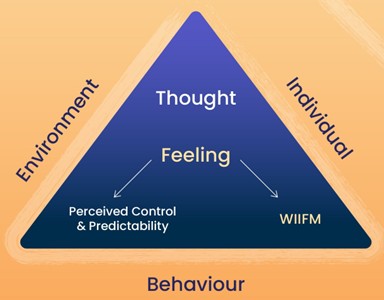
When employees hear about a new initiative, their first instinct is to assess how it will affect them personally. They may wonder:
• Will this make my job easier or harder?
• Will I need to learn new skills?
• Will my workload increase or decrease?
• Will this change create new opportunities for career growth?
• Will my job be at risk?
If leaders fail to address these concerns, employees may assume the worst, leading to fear, resistance, or disengagement. However, when change is framed in a way that highlights how it will improve employees’ daily work, productivity, job satisfaction, or career prospects, they are more likely to embrace it.
Tailoring Messages for Different Audiences
A one-size-fits-all message will not effectively communicate WIIFM to a diverse workforce. Employees at different levels and in different roles will perceive change differently. Leaders should tailor communication to address specific concerns and priorities of various employee groups:
• Frontline Employees: Focus on how the change will make their jobs easier, reduce manual work, improve processes, or provide better tools and technology.
• Managers and Team Leaders: Emphasize how the change will enhance team efficiency, provide clearer performance metrics, and support leadership development.
• Senior Employees or Specialists: Highlight how change will allow them to apply their expertise in new ways, work on innovative projects, or contribute more strategically.
• New Hires or Junior Employees: Show how change can accelerate learning, provide mentorship opportunities, or open career advancement pathways.
By framing change in a way that directly speaks to the unique needs and motivations of each group, leaders can make it feel more relevant and valuable.
Linking Change to Career Growth
One of the most effective ways to gain buy-in is by showing employees how change can support their career development. People are more willing to embrace change when they see it as an opportunity for growth rather than an inconvenience or disruption. Leaders should highlight:
• Skill Development: How the change will introduce new skills that will enhance employees’ marketability and career prospects.
• Career Advancement: How adopting change can lead to promotions, leadership opportunities, or increased responsibility.
• Job Security: How change positions the company for long-term success, ensuring stability and reducing risks of layoffs or downsizing.
For example, if a company is adopting a new project management system, rather than simply saying, “This will improve efficiency,” leaders should communicate, “This tool will streamline workflows, reducing redundant tasks and giving you more time to focus on higher-impact work. It will also allow you to develop in-demand digital skills, making you a stronger candidate for leadership roles.”
Using Change Champions to Reinforce WIIFM
Change Champions—respected employees who support and advocate for change—can play a vital role in reinforcing WIIFM. When employees see their peers embracing change and experiencing real benefits, they are more likely to follow suit. Champions can share personal success stories, demonstrating how the change has positively impacted their work and careers. These real-life testimonials make the benefits of change more tangible and relatable.
Even after initial communication, leaders should continue reinforcing WIIFM through regular updates, success stories, and recognition. Acknowledging employees who successfully adapt to change and showcasing early wins keeps motivation high. Additionally, providing training, coaching, and one-on-one discussions helps employees see how the change can work in their favor.
By clearly communicating personal benefits, tailoring messages to different groups, linking change to career growth, and leveraging peer influence, organizations can shift employees’ mindset from resistance to engagement. When people understand what’s in it for them, they don’t just accept change—they embrace it.

Case Study: WIIFM in Fitness and Lifestyle Change – Couch to 5K Program
A great example of the WIIFM (What’s In It For Me?) approach outside of business is the Couch to 5K running program, which has helped thousands of non-runners transition from a sedentary lifestyle to completing a 5-kilometer run. Many people resist starting an exercise routine because they fear failure, believe they don’t have time, or don’t see immediate benefits. To overcome these barriers, the program communicates the personal benefits of change in a way that resonates with different participants.
Couch to 5K tailors its messaging to appeal to a variety of individuals. For beginners or non-athletes, it highlights an easy, gradual approach, ensuring that even those with no prior running experience can participate. People struggling with motivation are encouraged by the challenge’s structure, which includes measurable progress and small wins along the way. Busy individuals are reassured that the program requires only 20–30 minutes a few times a week, making it manageable within a packed schedule. For those seeking weight loss or improved fitness, it promotes the efficiency of running in burning calories and building endurance. Others interested in mental well-being are drawn to the stress-relieving and mood-boosting effects of regular running.
One of the biggest challenges in fitness is seeing immediate results. Couch to 5K overcomes this by structuring the program around small, achievable goals, making progress feel attainable from day one. In the first week, participants jog for only short intervals, alternating with walking. By week three, they are running for three minutes straight—an accomplishment that previously seemed difficult. By week six, they have built stamina and confidence, proving to themselves that they are capable of more than they initially believed. This steady progression ensures that participants experience tangible improvements early, reinforcing the value of sticking with the program.
Beyond physical benefits, Couch to 5K highlights how small lifestyle changes lead to long-term improvements. Many participants report increased daily energy, a sense of achievement after each run, and improved overall well-being. Rather than focusing solely on weight loss or fitness goals, the program helps people recognize the positive changes they feel in their everyday lives.
A key factor in Couch to 5K’s success is its community-driven approach. Peer support plays a significant role in reinforcing the WIIFM message. Online forums and social media groups provide a space where participants share experiences, encourage one another, and celebrate progress. Success stories from past runners showcase real-life transformations, inspiring new participants to believe in their ability to succeed. Seeing people of all backgrounds embrace the challenge makes the change feel more attainable and worthwhile.
Even after completing the program, Couch to 5K sustains motivation by encouraging participants to set new goals. Many go on to train for longer races, join running clubs, or track their progress using fitness apps. The transition from beginner to committed runner is reinforced through continued goal-setting, community involvement, and self-improvement.
By focusing on personal benefits, structured progression, and community support, Couch to 5K helps people overcome initial resistance and embrace running as a lifelong habit. The program demonstrates how effectively communicating “What’s In It For Me?” can increase motivation and make change not just acceptable, but desirable.
The Role of Change Champions
Organizational change is most successful when employees feel motivated and supported throughout the transition. While leadership plays a key role in setting the direction for change, peer influencers—also known as Change Champions—are often the ones who truly drive momentum. Change Champions are employees who embrace change early, advocate for it among their colleagues, and serve as role models for adoption. By leveraging these individuals, organizations can create enthusiasm, reduce resistance, and foster a culture of collaboration during transformation efforts.
Employees are often more receptive to messages from their peers than from top management. When leadership announces a major change, employees may view it with skepticism, questioning its impact on their workload, job security, or daily responsibilities. However, when they hear directly from colleagues who are navigating the change successfully and see real benefits, they are more likely to engage positively. Change Champions help close this gap by making change relatable and demonstrating its advantages in real-world settings. They also provide reassurance by sharing their experiences, offering hands-on guidance, and addressing concerns in ways that resonate with their peers. This peer-driven support system helps employees feel less overwhelmed and more willing to embrace change.
Not every employee is suited to be a Change Champion. The most effective advocates are those who are respected by their colleagues, have strong communication skills, and demonstrate a positive attitude toward change. They do not necessarily have to be managers or senior employees—what matters most is their ability to influence others through trust and credibility. Employees who are approachable, proactive, and enthusiastic about the transition tend to be the best Champions. They also need to be patient and willing to support others through the learning curve of the new processes.
Change Champions play a critical role in making change feel more personal and manageable. Their influence extends across several areas, including building awareness, encouraging participation, addressing concerns, providing hands-on support, and celebrating wins. They help communicate why the change is happening, breaking down complex messages into simple, relatable terms. By actively engaging employees in discussions, seeking feedback, and involving them in decision-making where possible, they foster a sense of ownership and inclusion. They also act as a bridge between employees and leadership, ensuring that concerns are heard and addressed, while also demonstrating practical applications of the change in daily work.
For example, if a company introduces a new digital workflow system, Change Champions might hold informal sessions to demonstrate how they use the system effectively. They could share real examples of how the tool has streamlined their work, making it easier for hesitant employees to see the benefits. These Champions ensure that learning is an ongoing process, offering additional support and reinforcing the use of new systems through continuous engagement.
The role of Change Champions does not end once the initial rollout is complete. They continue to reinforce adoption by providing ongoing support, helping employees stay engaged, and identifying areas where additional training or adjustments are needed. Organizations should recognize and reward Change Champions for their contributions—whether through formal acknowledgment, leadership opportunities, or professional development incentives. By empowering and supporting Change Champions, organizations can create a more positive and inclusive approach to change, ensuring that employees feel guided, heard, and motivated throughout the process. When employees see their peers embracing change with confidence, they are far more likely to follow suit.

Exercise 1.8: Group Discussion
Many employees resist change not because they oppose improvement, but because they struggle to see how it benefits them personally. How can organizations better communicate WIIFM (What’s In It For Me?) to different employee groups?
1. How can leaders tailor change messages to different employee groups (frontline staff, managers, senior specialists) to make the benefits feel more relevant?
2. Change Champions play a key role in reducing resistance—what qualities make an effective Change Champion, and how can organizations support them?
3. If employees see a change as more work rather than an opportunity, how can leaders reframe it to create excitement and engagement?
Have small groups create a short “change announcement” tailored to a specific employee group, focusing on WIIFM. Each group presents their message, and the larger group discusses which elements were most effective.

Course Manual 9: Change Knowledge
Knowing that a change is coming is only the first step—true success depends on employees understanding exactly how to operate within the new environment. Change Knowledge is about ensuring that individuals not only recognize the shift but also have the necessary skills, information, and resources to navigate it effectively. Without proper knowledge, even motivated employees may struggle to adopt new processes, leading to frustration, inefficiencies, and potential resistance.
This stage often involves structured training, access to relevant materials, and clear guidance on how roles and responsibilities will evolve. Employees need clarity on what is expected of them, where to seek help, and how to apply new knowledge in real-world scenarios. Without a well-planned approach to knowledge transfer, change initiatives can stall, leaving employees feeling unsupported and uncertain.
Effective Change Knowledge strategies include tailored training programs, ongoing support systems, and clear documentation that answers employees’ most pressing questions. Organizations that prioritize knowledge-sharing create a culture of confidence and competence, allowing employees to transition smoothly and effectively into new ways of working.
This chapter explores the key elements of Change Knowledge, including the role of training, access to information, leadership support, and strategies for reinforcing learning.
Clarifying Roles and Expectations
When organizations undergo change, one of the biggest challenges employees face is uncertainty about their roles and responsibilities. Even the most motivated individuals can struggle if they do not clearly understand what is expected of them in the new system. Clarifying roles and expectations is crucial in ensuring a smooth transition, reducing confusion, and maintaining productivity. Without clear guidance, employees may experience frustration, disengagement, or even resistance to the change.
Employees derive confidence and motivation from knowing how their work fits into the bigger picture. When roles shift due to change—whether through a restructuring, new technology, or updated processes—lack of clarity can create fear and hesitation. People may wonder how their daily tasks will change, what new skills or tools they need to learn, how their performance will be evaluated, or whom they should report to. Leaders who proactively communicate these changes help employees transition with greater ease. The more employees understand their new responsibilities, the quicker they can adapt and contribute effectively.
Uncertainty thrives in silence, so leaders should communicate role expectations as early as possible, even if some details are still evolving. Employees appreciate transparency and updates rather than being left in the dark. Providing a clear roadmap for how roles will evolve helps alleviate anxiety. To do this effectively, leaders should define responsibilities in the new system by updating job descriptions, outlining new tasks and duties, and providing step-by-step guides on navigating new processes. When employees have clear examples of what success looks like in their roles, they are more likely to embrace the transition with confidence.
Organizational changes often impact reporting structures, leading to confusion about who employees should go to for support or decision-making. To prevent uncertainty, leaders should clarify new team structures, changes in leadership roles, and whom employees should contact for specific issues. By providing a structured framework, employees will feel more secure about their place in the organization. Personalized conversations also play a key role in clarifying expectations. While company-wide announcements are helpful, one-on-one discussions help employees fully grasp their new responsibilities. Managers should schedule individual check-ins to answer specific questions, address concerns, and discuss professional growth opportunities within the change.
People process information in different ways, so providing multiple formats for role clarification can enhance understanding. Visual tools such as role-mapping diagrams, task checklists, FAQs, and quick-reference guides help employees retain key details about their new responsibilities. These resources serve as ongoing references employees can revisit as they adjust to their new roles.
Clarity is not a one-time event; it requires reinforcement through training and feedback. As employees begin working within the new system, they will need ongoing support through on-the-job training, regular check-ins to assess their adaptation, and open feedback loops where they can voice concerns or suggest process improvements. Leaders should encourage employees to ask questions and provide feedback so adjustments can be made to support smoother role transitions.
Change can create uncertainty, but clear role definitions and expectations provide employees with a sense of direction. When people know what is expected of them and how they contribute to the organization’s success, they feel more engaged, confident, and prepared for transition. By communicating early, defining role-specific responsibilities, ensuring reporting clarity, offering personalized conversations, and reinforcing knowledge through training and feedback, organizations can help employees navigate change with greater ease. The key to success is not just telling employees that change is happening—it’s ensuring they fully understand their place within it.
Effective Training Strategies – Equipping Employees for a Smooth Transition
Change is only as successful as the employees’ ability to adapt to it. Even when individuals are aware of the change and willing to embrace it, they need the right training to navigate their new responsibilities effectively. Training is not just about providing information—it is about ensuring employees have the skills, confidence, and resources to perform well in the new environment. Poorly executed training programs can lead to confusion, frustration, and disengagement, ultimately slowing down the adoption of change. A well-designed training strategy ensures that employees feel supported and competent as they transition into new processes, technologies, or roles.
Assessing Training Needs
Before developing a training program, organizations must identify the skills and knowledge gaps that need to be addressed. This involves conducting a needs assessment to determine what employees already know and what they need to learn. Leaders can gather insights through employee surveys, focus groups, or direct manager feedback. Analyzing past performance data and identifying common mistakes in pilot implementations can also help pinpoint areas where training should be prioritized. A clear understanding of training needs allows organizations to tailor learning experiences to address the most pressing challenges employees will face.
Customizing Training for Different Learning Styles
Employees learn in different ways, so offering diverse training formats increases effectiveness. A mix of hands-on training, visual aids, interactive workshops, and digital resources ensures that employees with different learning styles can engage with the material. Some may benefit from instructor-led sessions, while others prefer self-paced e-learning modules or video tutorials. Providing a variety of learning options allows employees to absorb new information in ways that suit them best.
Interactive training methods such as role-playing exercises, simulations, and real-world case studies enhance engagement and retention. When employees actively apply what they learn in a practical setting, they are more likely to retain and implement new skills effectively. For instance, a company rolling out a new customer relationship management (CRM) system could have employees complete simulated transactions before fully switching to the new system.
Delivering Training in Phases
Rather than overwhelming employees with an overload of information at once, training should be structured in gradual phases. A staggered learning approach allows employees to absorb new concepts over time, reducing cognitive overload and increasing retention. Training can be broken down into introductory sessions, hands-on practice, and follow-up reinforcement to ensure employees retain key skills.
For example, if a company is transitioning to a hybrid work model, training might begin with an overview of expectations, followed by workshops on collaboration tools and remote work best practices. Later, check-ins and refresher sessions can reinforce knowledge and address emerging challenges.
Providing Continuous Support and Resources
Training does not end when a workshop or e-learning module is completed. Employees need access to ongoing support as they implement new skills in their daily work. Organizations should provide readily available reference materials such as FAQs, instructional videos, and troubleshooting guides. An internal knowledge base or learning management system (LMS) can serve as a go-to resource for employees needing a quick refresher.
Mentorship and peer support programs also play a crucial role in reinforcement. Pairing employees with experienced colleagues or Change Champions can provide an additional layer of guidance. Peer mentors can answer questions, offer best practices, and help reinforce learning in a way that feels more accessible and relatable than formal training alone.
Measuring Training Effectiveness
It is essential to assess whether training is achieving its intended results. Organizations should measure training effectiveness through post-training assessments, employee feedback, and performance monitoring. Surveys and quizzes can evaluate whether employees have grasped key concepts, while real-world application of skills can be tracked through performance reviews or key performance indicators (KPIs). If employees are struggling with specific aspects of the change, additional training sessions or adjustments to the curriculum may be necessary.
Gathering employee feedback is equally important. Employees can provide insights into whether the training was clear, relevant, and engaging, as well as highlight areas where further support is needed. Organizations that continuously refine their training programs based on real employee experiences can ensure ongoing improvement in skill development.
Encouraging a Growth Mindset
A strong training strategy fosters a growth mindset, where employees view learning as a continuous process rather than a one-time event. Leaders should encourage employees to see change as an opportunity to expand their skills and advance their careers. Reinforcing the idea that mistakes are part of the learning process helps employees feel more comfortable experimenting with new tools and processes without fear of failure.
Recognizing and celebrating learning milestones can further motivate employees. Publicly acknowledging individuals who successfully adapt to change or rewarding those who complete training certifications reinforces a culture of continuous learning. When employees feel supported and appreciated for their efforts, they are more likely to engage positively with training initiatives.
Conclusion
Effective training is a cornerstone of successful change management. By assessing training needs, customizing learning experiences, delivering content in phases, and providing continuous support, organizations can equip employees with the skills and confidence needed to embrace change. Training should not be a one-time event but an ongoing process that includes mentorship, reinforcement, and feedback loops to ensure employees feel prepared and supported.
When employees are well-trained, they are not only more capable of handling change but also more engaged and motivated. Organizations that prioritize comprehensive, practical, and adaptable training strategies create a workforce that is resilient, adaptable, and ready to navigate change successfully.

Case Study: The NHS (National Health Service) Adopting Electronic Health Records
The UK’s National Health Service (NHS) faced significant resistance when introducing electronic health records (EHRs). Many doctors and nurses were accustomed to paper records, and poor training could have jeopardized patient care. To ensure a smooth transition, the NHS developed a targeted training approach:
• Customized Training for Roles: Nurses focused on entering patient data efficiently, while doctors learned how to access medical histories and prescriptions.
• Simulated Patient Case Studies: Employees practiced using the EHR system with mock patient cases before going live.
• 24/7 IT Support & Super Users: Each hospital appointed “super users” (peer champions) to assist colleagues, reducing reliance on IT teams.
• Post-Implementation Check-Ins: The NHS conducted surveys and feedback sessions to refine training and address concerns.
The NHS’s role-specific training, hands-on practice, and peer support model helped minimize resistance and ensured a smooth EHR rollout.

Case Study: Delta Airlines’ Pilot Training for New Aircraft
When Delta Airlines added the Airbus A220 to its fleet, pilots had to transition from operating different aircraft models. Since cockpit layouts and flight control systems varied, training was critical for safety and operational efficiency. Delta’s training strategy included:
• Flight Simulators: Pilots trained extensively in simulators to practice emergency procedures and cockpit workflows.
• Mentorship Program: Experienced Airbus pilots acted as mentors, guiding new trainees through the learning curve.
• Phased Certification: Pilots had to pass multiple assessments before operating the new aircraft with passengers.
• Continuous Learning: Regular refresher courses ensured pilots stayed proficient even after the initial transition.
By using real-world simulations, mentorship, and phased certification, Delta successfully transitioned its pilots to a new aircraft while maintaining high safety standards.
Providing Access to Knowledge Resources – Ensuring Employees Have the Right Support
Successful change adoption depends on more than just training sessions—it requires ongoing access to knowledge resources that employees can rely on when they need answers. Even after formal training, employees will encounter challenges and uncertainties as they begin implementing new processes or technologies. Without readily available resources, they may become frustrated, make mistakes, or revert to old habits. To ensure smooth transitions, organizations must create accessible, well-structured knowledge resources that provide continuous support.
Building a Centralized Knowledge Base
A well-organized knowledge base serves as a go-to resource where employees can find answers quickly. This centralized platform should include comprehensive documentation on new procedures, step-by-step guides, troubleshooting solutions, and frequently asked questions (FAQs). By structuring the information in an easy-to-navigate format, employees can locate what they need without having to rely on managers or IT teams for every minor issue.
An effective knowledge base should be searchable, mobile-friendly, and regularly updated as new questions arise. Organizations can leverage internal wikis, cloud-based platforms, or learning management systems (LMS) to house these resources, ensuring they remain easily accessible from anywhere, especially in remote or hybrid work environments.

Creating FAQs for Common Concerns
FAQs are a simple yet effective way to address common employee concerns about the change. These documents should be compiled based on real questions gathered from employees before, during, and after the transition process. FAQs can clarify uncertainties about new policies, expectations, software usage, and troubleshooting issues.
For example, if a company is implementing a new expense reporting system, an FAQ document might include questions such as:
• “How do I submit an expense report under the new system?”
• “Who do I contact if my reimbursement is delayed?”
• “What are the new approval requirements?”
By providing clear, straightforward answers, FAQs help employees resolve their concerns independently, reducing the burden on HR or IT support teams.
Offering Multi-Format Learning Materials
Employees absorb information in different ways, so organizations should provide knowledge resources in multiple formats. Some employees prefer reading step-by-step written guides, while others learn better through instructional videos, live demos, or interactive tutorials. Offering a mix of text-based content, infographics, short training videos, and hands-on simulations allows employees to engage with resources in the way that best suits their learning style.
Additionally, having quick-reference guides or printable job aids can be useful for employees who need reminders during their day-to-day tasks.
Ensuring On-Demand Support Channels
Even with the best documentation, there will be moments when employees need direct assistance. Organizations should provide multiple support channels where employees can get help in real-time. Options may include:
• Live Chat or Help Desks: Dedicated support teams or chatbots that can provide immediate answers.
• Peer Support Networks: Internal communities or Slack channels where employees can share experiences and help one another.
• Office Hours or Q&A Sessions: Scheduled times where employees can ask questions and receive live guidance from experts.
By offering a mix of self-service resources and direct support, organizations can ensure employees feel confident in finding the help they need.
As employees begin using new systems and processes, new questions and challenges will arise. Organizations must treat their knowledge resources as living documents, regularly updating them based on feedback and evolving business needs. Encouraging employees to submit questions, suggest improvements, or report gaps in documentation ensures that resources remain relevant and useful.
Providing access to knowledge resources is essential for ensuring employees can confidently navigate change. A well-structured knowledge base, FAQs, multi-format learning materials, and real-time support channels help employees find answers quickly, reducing frustration and reliance on leadership for basic inquiries. By continuously updating resources and making them easily accessible, organizations create a culture of self-sufficiency, empowering employees to adapt successfully to new ways of working.

Exercise 1.9: Pairs exercise – Training in Action
This exercise will help participants reflect on effective training strategies and how they can be applied to real-world changes in their own organizations or industries.
1. Pair Up: Each participant pairs with a colleague.
2. Scenario Reflection: Each person shares a real or hypothetical workplace change they have experienced (e.g., new technology, process shift, restructuring).
3. Identify Training Gaps: Discuss the training provided (or that should have been provided).
• What worked well?
• What was missing?
• Were different learning styles considered?
4. Apply Best Practices: Based on what was learned in this chapter, each pair brainstorms two improvements that could have made the training more effective.
This activity encourages practical reflection, collaboration, and application of best practices in training for change.

Course Manual 10: Change Ability
Understanding that change is necessary is only part of the equation—employees must also have the ability to implement that change successfully. Change Ability focuses on equipping individuals with the skills, confidence, and opportunities they need to apply new behaviors effectively. Without the right support, even motivated employees may struggle to adapt, leading to frustration, inefficiencies, and setbacks.
This step involves providing training, coaching, and real-world application opportunities to bridge the gap between knowledge and execution. Whether it’s mastering a new technology, developing new interpersonal skills, or adjusting to a different way of working, organizations must ensure employees are set up for success. Effective skill-building requires structured learning, reinforcement, and a supportive environment that encourages continuous development.
Organizations that prioritize Change Ability create a workforce that is confident, adaptable, and ready to embrace new challenges. This chapter explores the critical elements of Change Ability, including skill-building, overcoming barriers to application, creating practice opportunities, and offering sustained support. By ensuring employees not only understand change but can apply it effectively, organizations set themselves up for long-term success.
Bridging the Gap Between Knowledge and Action
Understanding a change intellectually and being able to apply it effectively are two very different challenges. Many organizations invest significant time in training and communication but fail to provide employees with the right support to confidently put their knowledge into action. Without reinforcement, employees may struggle with uncertainty, hesitate to engage in new processes, or revert to old habits. Bridging the gap between knowledge and action requires a structured approach that ensures employees feel equipped, supported, and empowered to make the change a reality.
One of the biggest barriers to applying new skills is fear of failure. Employees may understand what needs to be done but hesitate to take action because they are worried about making mistakes. To counter this, organizations should foster a culture where learning through experience is encouraged and mistakes are seen as opportunities for growth. Leaders can help by setting clear expectations that adapting to change is a process and by providing a safe space for employees to practice new skills without fear of repercussions.
Providing structured opportunities for application is critical. Employees need hands-on experiences to reinforce what they’ve learned and build confidence in their abilities. This can be achieved through simulations, role-playing exercises, pilot programs, and phased rollouts that allow employees to gradually implement change. For example, if a company is introducing a new customer management software, employees should have opportunities to experiment with the system in a test environment before fully transitioning to live operations.
Another effective way to bridge the gap is through coaching and mentorship. Pairing employees with experienced colleagues or “Change Champions” allows them to receive personalized support as they apply new skills. Mentors can provide guidance, answer questions, and help employees troubleshoot challenges in real time. This ongoing support helps employees feel more comfortable and confident in adapting to change.
Continuous feedback and reinforcement are also essential. Leaders should check in regularly with employees, assess their progress, and offer constructive feedback to refine their skills. Celebrating small wins and recognizing employees who successfully apply new behaviors reinforces their confidence and encourages continued engagement with the change.
By creating a supportive learning environment, providing hands-on practice, offering mentorship, and reinforcing change with continuous feedback, organizations can help employees transition from simply understanding change to confidently implementing it in their daily work. This approach ensures long-term success by embedding new skills and behaviors into workplace culture.
Overcoming Barriers to Skill Application
Adapting to change often requires employees to apply new skills, but various barriers can prevent them from doing so effectively. Even with proper training and knowledge, individuals may struggle to transition from understanding to execution. Common obstacles include fear of failure, lack of confidence, and resource limitations. Organizations must proactively address these challenges to ensure employees can fully embrace and apply new skills.
Fear of Failure and Psychological Safety
One of the biggest barriers to applying new skills is the fear of failure. Employees may hesitate to take action because they worry about making mistakes, looking incompetent, or facing negative consequences. This anxiety can lead to inaction, hesitation, or resistance to change.
To counteract this, organizations should foster a culture of psychological safety, where employees feel comfortable experimenting, making mistakes, and learning from them. Leaders play a crucial role in setting this tone by encouraging risk-taking, normalizing setbacks as part of the learning process, and providing constructive feedback rather than punitive responses. When employees see that mistakes are opportunities for growth rather than punishable offenses, they are more likely to engage with change and apply new skills confidently.
Building Confidence Through Practice and Support
Confidence is built through experience, and employees need structured opportunities to practice new skills before fully implementing them. Organizations can create confidence-building experiences through pilot programs, role-playing exercises, simulations, and phased rollouts. For example, if a company introduces a new project management tool, employees should first practice in a controlled environment before applying it to live projects.
Providing mentorship and peer support also plays a key role in building confidence. Pairing employees with experienced mentors or “Change Champions” gives them a safe space to ask questions, seek guidance, and receive real-time support. Peer learning fosters trust and allows employees to develop their skills at a comfortable pace.
Ensuring Access to Necessary Resources
Employees cannot effectively apply new skills if they lack the proper resources, such as tools, technology, or time. Organizations must ensure that employees have access to everything they need to succeed. This includes well-structured learning materials, ongoing technical support, and adequate time to practice and adjust to the change.
If employees are struggling due to workload constraints, leaders should reassess priorities and provide temporary workload adjustments to allow for learning and skill application. When employees are given both the knowledge and the resources they need, they are far more likely to engage successfully with change.
By addressing fear, building confidence, and ensuring access to necessary resources, organizations can remove barriers that hinder skill application. When employees feel supported, prepared, and empowered, they can transition smoothly from learning new skills to applying them effectively in their daily work.
Creating Opportunities for Hands-On Practice
Acquiring knowledge about change is only the first step—true learning happens when employees actively apply new skills in real-world scenarios. Without opportunities for hands-on practice, employees may struggle to bridge the gap between theory and execution. Providing structured, practical learning experiences ensures that employees feel comfortable and confident in using new processes, tools, or behaviors.
One of the most effective ways to help employees build confidence in applying new skills is through simulation-based training. These allow employees to test new tools, workflows, or behaviors in a controlled, low-risk environment before full implementation. For example, if an organization introduces a new customer relationship management (CRM) system, employees can first practice using a sandbox version before working with actual client data.
Pilot programs offer another way to ease employees into change. Instead of rolling out a change organization-wide, companies can start with a small group or department to refine processes, troubleshoot issues, and gather feedback. This phased approach reduces anxiety, allows for adjustments, and creates early adopters who can support and mentor others.
Integrating training into daily tasks is one of the best ways to reinforce learning. Instead of separating training from real work, organizations can embed hands-on learning into existing workflows. Employees can practice new skills under guided supervision, allowing them to apply what they’ve learned immediately.
For skills related to interpersonal behavior—such as conflict resolution, leadership, or customer service—role-playing exercises are highly effective. Employees can engage in structured scenarios where they apply new behaviors in a realistic but low-pressure setting. Receiving immediate feedback helps them refine their approach before implementing these behaviors in real workplace interactions.
Hands-on learning is more effective when employees have support from their peers. Encouraging team-based learning experiences, such as group projects or collaborative problem-solving exercises, can strengthen engagement and reinforce new behaviors.
Organizations can also create internal knowledge-sharing programs where employees who have successfully applied new skills can mentor others. These peer-driven initiatives help spread best practices and reinforce learning across teams.
For learning to stick, organizations must provide continuous reinforcement. Follow-up practice sessions, refresher training, and opportunities to apply skills in different contexts ensure that employees remain engaged with the change. Leaders should also recognize and reward employees who demonstrate strong application of new skills, reinforcing positive behaviors.
By integrating hands-on practice into the change process, organizations can increase skill retention, build confidence, and ensure long-term adoption of new behaviors.

Case Study: Google’s “Project Oxygen” – Leadership Skill Development
Google recognized that technical expertise alone wasn’t enough for effective management and that strong leadership skills were essential. Instead of simply providing managers with leadership theory, Google implemented real-world, hands-on learning experiences as part of Project Oxygen.
They used structured role-playing exercises where managers practiced active listening, coaching conversations, and constructive feedback in a safe environment before applying these skills in their actual teams. They also integrated live coaching sessions into managers’ workflows, allowing them to apply new leadership techniques with real-time feedback. This hands-on approach led to significant improvements in management effectiveness across the company.

Case Study: Mayo Clinic’s Role-Playing Exercises for Patient Communication
The Mayo Clinic implemented structured role-playing exercises to train healthcare staff in improving patient communication and empathy. Instead of theoretical training alone, doctors and nurses practiced real-life scenarios—such as delivering difficult diagnoses or handling patient concerns—with professional actors simulating patients.
Through immediate feedback and reflection, medical professionals were able to refine their communication techniques in a realistic but safe setting, leading to better patient interactions and increased confidence in handling sensitive conversations.
Measuring and Reinforcing Skill Development
Successfully developing new skills during a change initiative requires more than just training sessions and practice—it involves ongoing measurement, reinforcement, and support to ensure long-term retention and continuous improvement. Without a structured approach to tracking progress and providing feedback, employees may revert to old habits, lose confidence, or struggle to integrate new skills into their daily workflows. Organizations must take proactive steps to measure skill development, offer constructive feedback, and reinforce learning over time.
Tracking Progress Through Assessments and Performance Metrics
The first step in reinforcing skill development is measuring progress. Organizations should establish clear benchmarks and key performance indicators (KPIs) that define what success looks like for employees applying new skills. These benchmarks can be set at individual, team, or organizational levels, depending on the scope of the change.
For example, if employees are learning a new project management software, success metrics might include increased efficiency in task tracking, reduced missed deadlines, or improved collaboration between departments. Tracking these indicators over time helps leaders identify which employees may need additional support and ensures that progress is being made.
Regular assessments, such as quizzes, scenario-based evaluations, or skill demonstrations, can help measure how well employees have internalized new knowledge. Self-assessments and peer evaluations can also provide insight into confidence levels and areas where further training may be needed.
Providing Ongoing Feedback and Coaching
Constructive feedback plays a crucial role in helping employees refine their new skills. Without regular feedback, employees may continue to struggle or feel unsure about whether they are meeting expectations. Managers and team leaders should conduct frequent check-ins to provide guidance, correct misunderstandings, and reinforce positive behaviors.
Feedback should be specific, timely, and supportive. Instead of general comments like “You’re doing well,” leaders should offer targeted insights such as, “Your use of the new customer service platform has improved response times—great job integrating automated responses!” Recognizing progress, no matter how small, builds employee confidence and encourages continued learning.
Additionally, coaching and mentorship programs can provide employees with direct support from experienced colleagues who have successfully applied the new skills. Mentors can offer guidance, answer questions, and model best practices, helping employees navigate challenges more effectively.
Encouraging Continuous Learning and Skill Reinforcement
Learning does not stop after the initial training period. Organizations should provide ongoing reinforcement to ensure that employees continue developing their skills and integrating them into their workflows.
Follow-up training sessions, refresher courses, and interactive workshops can help employees retain their knowledge and refine their abilities. For example, organizations can implement monthly “lunch and learn” sessions where employees discuss best practices, share challenges, and receive additional training on advanced topics related to the change.
Gamification and incentive programs can also encourage continuous learning. Recognizing top performers, offering skill-based certifications, or implementing friendly competitions can make skill reinforcement more engaging and motivating. Employees who consistently demonstrate strong application of new skills can be rewarded with career advancement opportunities, leadership roles, or professional development resources.
Preventing Skill Reversion and Maintaining Long-Term Retention
A common challenge in change initiatives is skill reversion—employees reverting to old habits when they face pressure, time constraints, or a lack of reinforcement. Organizations must actively work to prevent this by integrating new skills into the workplace culture and ensuring that employees continue to use them.
Leaders should model the desired behaviors and consistently reinforce the importance of applying new skills. Policies and procedures should be aligned with the change to support long-term adoption. For instance, if a company implements a new performance review system, managers should incorporate it into regular employee evaluations and development plans to reinforce its continued use.
Creating a supportive learning environment also helps prevent skill loss. Employees should feel comfortable asking questions, experimenting with new approaches, and making mistakes without fear of negative consequences. When employees see that continuous learning is valued, they are more likely to embrace ongoing skill development.
Conclusion
Measuring and reinforcing skill development is essential to ensuring that employees not only learn but also retain and apply new skills effectively. By tracking progress through assessments and KPIs, providing targeted feedback, and encouraging continuous learning, organizations can create a culture of growth and adaptability. Preventing skill reversion requires sustained reinforcement, leadership support, and a commitment to integrating new skills into daily operations. When employees feel supported in their development, they are more likely to embrace change confidently and contribute to long-term organizational success.

Exercise 1.10: Reflection Exercise – Applying New Skills with Confidence
1. Think of a time when you had to learn and apply a new skill at work.
• What was the skill or process you needed to learn?
• How did you initially feel about it? (Excited, hesitant, overwhelmed?)
2. What helped you successfully apply this new skill?
• Did you receive hands-on training, mentorship, or practice opportunities?
• What strategies or resources helped build your confidence in using this skill?
3. What challenges did you face in applying the new skill?
• Were there any fears, doubts, or difficulties you had to overcome?
• How did you handle these obstacles?
4. Looking ahead, what can you do to improve your ability to learn and apply new skills?
• What kind of support or resources would help you feel more confident in future change situations?
• How can you take a proactive role in reinforcing your learning and skill development?

Course Manual 11: Change Reinforcement
Successfully implementing change is a major achievement, but ensuring it lasts is an entirely different challenge. Change Reinforcement is the critical final step in the change process, focusing on sustaining new behaviors, preventing reversion to old habits, and embedding the change into the organization’s culture. Without reinforcement, even well-executed change initiatives can fade over time as employees revert to familiar ways of working, especially under pressure or when leadership attention shifts elsewhere.
To make change stick, organizations must actively reinforce new behaviors through recognition, feedback, accountability, and continued support. Employees need to see that the change is not just a temporary shift but an essential and permanent improvement. Leaders play a key role in monitoring adherence to the change, addressing resistance, and ensuring that employees feel supported in their new ways of working.
This chapter explores strategies for reinforcing change, including how to recognize and address signs of reversion, create systems of accountability, celebrate progress, and integrate change into daily operations. By focusing on long-term reinforcement, organizations can solidify the benefits of change, build a culture of adaptability, and ensure that progress is maintained well beyond the initial implementation phase.
Recognizing Signs of Reversion
Implementing change successfully is only part of the journey—ensuring that it sticks requires ongoing reinforcement. Employees often revert to old ways of working when they feel uncertain, overwhelmed, or lack proper accountability. This backsliding can happen gradually, sometimes without employees even realizing it. Recognizing early signs of reversion and addressing them quickly is essential for maintaining long-term change adoption.
Reversion occurs for several reasons, often tied to human behavior and workplace culture. Employees tend to return to familiar routines, especially when new processes require extra effort. If there are no immediate consequences for reverting, they may assume that the change is not truly necessary. Leadership inconsistency can also contribute—if managers themselves fail to uphold the change, employees are unlikely to follow through. Additionally, insufficient reinforcement, increased workload, or stress can push employees back toward previous habits, particularly if they feel that old methods were more efficient.
One of the most telling signs of reversion is declining adoption rates. If employees are not consistently applying a new system, process, or behavior, they may be defaulting to previous habits. Workarounds, such as using old tools or bypassing new procedures, also indicate a reluctance to fully commit to change. Reduced engagement, such as a decline in participation during discussions or training sessions, can signal disinterest or frustration with the change.
Other warning signs include employees reverting to outdated terminology, practices, or performance patterns. If complaints about the change re-emerge after an initial adjustment period, it may suggest uncertainty or dissatisfaction. Additionally, when leaders fail to reinforce the change, employees may lose motivation to maintain new behaviors. A drop in key performance indicators (KPIs) tied to the change is another indication that employees may not be integrating it effectively into their work.
Addressing Reversion Proactively
Once early signs of reversion are identified, organizations must take immediate steps to reinforce the change. One effective approach is to reiterate the purpose behind the change, ensuring employees understand how it benefits them and the organization. Leaders play a crucial role in this process by modeling the new behaviors themselves. If employees see their managers actively using the new system or process, they are more likely to follow suit.
Providing additional training and support can help employees feel more confident in their ability to implement change. If employees struggle with new processes, refresher training sessions or hands-on coaching can bridge the gap between knowledge and execution. Reinforcement should also include recognizing and rewarding those who successfully maintain the change. Public acknowledgment, incentives, or professional growth opportunities can motivate employees to stay engaged.
While positive reinforcement is key, accountability is equally important. Employees who consistently revert to old habits should receive constructive feedback and clear expectations about compliance. If necessary, performance evaluations can be adjusted to ensure adherence to the change. Peer influence can also play a significant role in sustaining progress. When employees hold each other accountable, it reinforces the expectation that change is permanent.
Regular progress monitoring and feedback collection help organizations stay ahead of potential reversion. Employee check-ins, surveys, and team discussions provide insight into challenges and allow for continuous improvements. Celebrating milestones along the way fosters a sense of accomplishment and keeps motivation high.
Recognizing and addressing reversion is essential to ensuring that change becomes embedded in the organization’s culture. Employees may instinctively return to old ways, especially under pressure, but proactive intervention can prevent this. By reinforcing the value of change, providing ongoing support, and maintaining leadership consistency, organizations can sustain long-term adoption and prevent backsliding. Change is not just about getting people to accept something new—it’s about making sure they continue to apply it until it becomes second nature.

Case Study: Walmart’s Shift to Digital Scheduling
Walmart introduced a digital scheduling system to provide employees with more flexibility in choosing their shifts and to streamline workforce management. Initially, adoption was strong, with many employees embracing the system’s ease of use. However, over time, managers noticed a reversion to old habits, as employees continued requesting shift changes manually, often through informal methods like text messages or verbal agreements. This led to scheduling inefficiencies, inconsistencies, and additional administrative burdens for managers.
To reinforce the change, Walmart took a data-driven approach by tracking how often employees used the digital system versus manual shift change requests. Store managers played a crucial role by holding weekly meetings to emphasize the importance of adhering to the new system and addressing employee concerns. Additionally, quick-access tutorials were introduced to help employees better understand and navigate the system, making adoption easier.
To further encourage usage, Walmart implemented a small incentive system, granting priority shift selection to employees who consistently used the digital platform. By combining data monitoring, leadership reinforcement, targeted training, and incentives, Walmart successfully curbed reversion to old methods and ensured widespread adoption of its digital scheduling system, leading to improved efficiency and workforce planning.
Creating Accountability Structures – Establishing Systems That Encourage Adherence to Change and Ensuring Employees Stay Committed
Successfully implementing change is not enough—organizations must ensure that employees continue to follow through and integrate the new processes into their daily routines. Without accountability, employees may revert to old habits, especially if they perceive that there are no consequences for non-compliance. Creating accountability structures provides the necessary support and reinforcement to keep employees engaged and committed to sustaining the change.
The Role of Accountability in Change Adoption
Accountability is essential for making change stick. It ensures that employees understand their role in maintaining the change and that there are clear expectations for adherence. When individuals feel personally responsible for following through, they are more likely to stay engaged. Additionally, accountability structures create consistency across teams and departments, preventing situations where some employees revert to old habits while others attempt to adopt the change.
A lack of accountability can quickly erode progress. If employees see that others are ignoring the change without consequences, they may feel less inclined to maintain the new behaviors themselves. Leaders who fail to reinforce expectations can inadvertently send the message that the change is optional rather than essential.
Defining Clear Expectations and Responsibilities
One of the first steps in creating accountability is setting clear expectations. Employees need to know exactly what is required of them in the new system, including specific actions, behaviors, and performance standards. If expectations are vague, employees may struggle to apply the change consistently. Providing a detailed roadmap outlining what success looks like and how progress will be measured ensures clarity.
Organizations should integrate change expectations into performance evaluations, job descriptions, and team goals. For example, if a company introduces a new customer relationship management (CRM) system, managers can track how often employees use the system and whether they are following the new data entry procedures. When accountability is built into existing performance structures, employees are more likely to take the change seriously.

Empowering Leaders to Reinforce Accountability
Leaders play a critical role in maintaining accountability. Managers and supervisors should actively monitor progress, provide feedback, and address any resistance early. Regular one-on-one check-ins can help leaders assess whether employees are struggling with the change and offer support where needed.
Leaders should also model the desired behaviors. If managers are not consistently following the change themselves, employees will see little reason to stay committed. Leading by example reinforces the expectation that the change is not just a temporary initiative but a long-term shift in how the organization operates.
Using Peer Accountability and Team Support
Accountability does not have to come solely from leadership—peer accountability can be a powerful motivator. Encouraging employees to hold each other accountable fosters a shared commitment to sustaining the change. Team-based check-ins, group discussions, and collaborative projects provide opportunities for employees to reinforce expectations with their peers.
For example, organizations can implement a buddy system where employees pair up to ensure that they are applying the new behaviors correctly. Peer mentoring and coaching programs can also help employees stay engaged, as they receive support and encouragement from colleagues who are successfully adopting the change.
Recognizing and Rewarding Adherence
Positive reinforcement is one of the most effective ways to encourage accountability. When employees see that their efforts are acknowledged and rewarded, they are more likely to remain committed. Organizations can implement recognition programs that highlight individuals or teams who are consistently applying the change.
Incentives do not have to be monetary—they can include verbal recognition, career development opportunities, or even simple rewards like public appreciation during team meetings. Highlighting success stories and showcasing employees who are excelling in the new system reinforces the message that adherence to change is valued and expected.
Addressing Non-Compliance Constructively
While positive reinforcement is essential, organizations must also have a plan to address non-compliance. Employees who repeatedly ignore the change should receive constructive feedback and guidance on how to improve. In some cases, additional training may be needed to help employees feel more confident in applying the new processes.
If resistance persists, organizations may need to implement corrective actions, such as formal performance evaluations or discussions about accountability. The key is to address non-compliance in a way that is supportive rather than punitive, focusing on helping employees succeed rather than simply enforcing rules.
Creating accountability structures is essential to ensuring that change is sustained over the long term. By setting clear expectations, empowering leaders, fostering peer accountability, recognizing adherence, and addressing resistance constructively, organizations can maintain momentum and prevent backsliding. Change is not just about initial success—it is about ensuring that employees remain engaged and committed long after the transition has taken place.
Leveraging Recognition and Rewards – Using Incentives, Recognition Programs, and Success Stories to Reinforce Positive Behaviors
Change initiatives often fail not because employees lack the skills to adapt, but because they lack motivation to sustain new behaviors. When employees feel that their efforts are recognized and appreciated, they are more likely to embrace and maintain change. Leveraging recognition and rewards is a powerful way to reinforce positive behaviors, maintain engagement, and prevent employees from reverting to old habits.
The Role of Recognition in Change Reinforcement
Recognition is a fundamental psychological motivator. Employees who feel valued and appreciated for their contributions are more likely to remain committed to organizational goals. In the context of change management, recognition serves two primary purposes: reinforcing desired behaviors and encouraging others to follow suit.
When employees see their peers being recognized for adopting new processes or embracing change, it signals that the organization values the transformation. This creates a positive feedback loop, motivating others to stay engaged. Without recognition, employees may feel that their extra effort is unnoticed, leading to disengagement and potential reversion to old ways of working.
Types of Recognition and Rewards
Recognition can take many forms, and the most effective programs incorporate a mix of formal and informal strategies.
• Public Acknowledgment: Simple but effective, verbal or written recognition in team meetings, company newsletters, or emails can boost morale and reinforce positive behaviors. When employees hear their name associated with successful change adoption, they feel a sense of accomplishment.
• Performance-Based Incentives: Tangible rewards such as bonuses, gift cards, or extra paid time off can serve as strong motivators. When employees know that their commitment to change is tied to meaningful rewards, they are more likely to stay engaged.
• Career Development Opportunities: Offering growth-oriented rewards, such as leadership training, mentorship programs, or project leadership opportunities, reinforces that change leads to personal and professional advancement. Employees who see a direct career benefit from embracing change are more likely to maintain their efforts.
• Peer Recognition Programs: Encouraging employees to recognize one another fosters a culture of support and accountability. When colleagues acknowledge each other’s progress, it reinforces team cohesion and makes change feel like a collective effort rather than an individual burden.
• Gamification and Competitions: Creating fun challenges or leaderboards can make change adoption more engaging. Departments or teams that excel in implementing change can receive team-based rewards, fostering friendly competition and shared commitment.
Using Success Stories to Reinforce Change
People connect with stories more than abstract policies or mandates. Sharing real success stories of employees who have successfully adapted to change helps others see its benefits. These stories humanize the change process, providing tangible examples of how employees have navigated challenges, developed new skills, and improved their work experience.
For example, if a company implements a new digital tool, highlighting an employee who used it to increase efficiency or reduce workload can inspire others to do the same. Featuring testimonials in internal communications, newsletters, or video messages from employees who have successfully embraced change can build excitement and reduce resistance.
Sustaining Motivation Over Time
Recognition and rewards must be continuous to sustain long-term commitment. One-time incentives may create short-term enthusiasm, but if employees do not feel appreciated on an ongoing basis, their motivation may fade. Organizations should integrate recognition into regular performance reviews, town hall meetings, and leadership communications to keep the momentum going.
By consistently celebrating progress, rewarding commitment, and sharing success stories, organizations create an environment where change is not just an initiative—it becomes a sustained and valued part of the workplace culture.

Exercise 1.11: Identifying and Addressing Reversion
To help participants recognize signs of reversion in change initiatives and develop proactive strategies to reinforce change.
1. Think of a Change Initiative:
• Recall a workplace or personal experience where a change was introduced (e.g., a new process, technology, or policy).
• Identify a situation where people initially adopted the change but later reverted to old habits.
2. Identify Signs of Reversion:
• What were the early warning signs that people were slipping back into old behaviors?
• How did leadership or colleagues react to these signs?
3. Develop a Reinforcement Strategy:
• If you were responsible for maintaining this change, what steps would you take to reinforce it?
• Consider three specific actions you could implement to prevent reversion (e.g., training, incentives, leadership modeling).
4. Pair & Share:
• Discuss your observations with a partner.
• Compare strategies and refine your approach based on their feedback.
5. Wrap-Up Reflection:
• What is one key takeaway from this exercise that you can apply in future change initiatives?

Course Manual 12: Baseline for Change
Sustaining change requires self-awareness and reflection. In this final lesson, participants will assess their current capabilities across the five key change areas—Awareness, Desire, Knowledge, Ability, and Reinforcement—establishing a personal baseline. By evaluating where they stand now, they can compare their progress at the end of the program and recognize areas of growth, strengths, and opportunities for further development.
A structured self-assessment helps individuals understand their own readiness for change and identify challenges that may hinder long-term success. By taking ownership of their learning journey, participants can set clear intentions for applying the concepts covered in this program.
This chapter guides participants through assessing their personal change journey, tracking progress, and developing a concrete action plan for sustaining improvements. Through reflection and comparison, individuals will leave with a clearer understanding of their growth and next steps.
Assessing Your Change Readiness
Change is not just about implementing new processes or strategies—it is about personal and organizational transformation. To successfully sustain change, individuals must continuously assess their readiness and ability to embrace new ways of thinking and working. Self-evaluation is a powerful tool that allows individuals to measure their progress, identify gaps, and develop targeted strategies to improve their change readiness. By taking the time to assess where they stand, employees and leaders alike can track their growth over time and take proactive steps to reinforce positive behaviors.
Self-evaluation is a key component of change management because it encourages individuals to reflect on their mindset, skills, and engagement with change. It helps answer critical questions such as:
• Do I fully understand the change and its purpose?
• ,Do I feel motivated to adopt and sustain the change?
• Do I have the necessary knowledge and skills to implement the change successfully?
• What obstacles might prevent me from sustaining the change over time?
By regularly evaluating their change readiness, individuals gain clarity on their personal strengths and development areas. This process prevents complacency and ensures that employees remain engaged throughout the change journey.
The Five Areas of Change Readiness
A comprehensive change assessment focuses on five critical areas—Awareness, Desire, Knowledge, Ability, and Reinforcement. These areas represent different stages of the change journey, from understanding the need for change to sustaining it in the long term.
1. Awareness: Individuals must first recognize why the change is happening and how it impacts them. Without awareness, engagement is limited, and resistance may increase.
2. Desire: Even with awareness, people need motivation to commit to the change. Understanding personal benefits (WIIFM—What’s In It For Me?) is key to sustaining motivation.
3. Knowledge: Employees need training and resources to develop the skills necessary to implement change effectively. Lack of knowledge can lead to hesitation and uncertainty.
4. Ability: Having knowledge is not enough—individuals must have the opportunity and confidence to apply their learning in real-world situations.
5. Reinforcement: To prevent regression, change must be continuously reinforced through recognition, feedback, and accountability structures.
To measure change readiness, individuals can use self-assessment tools such as surveys, rating scales, and reflection exercises. For example, participants may rate themselves on a scale of 1-5 in each of the five areas to establish a baseline. This rating provides an objective starting point to compare progress later in the program.
Regular self-assessment should be encouraged throughout the change process. This can be done through periodic check-ins, personal journaling, or one-on-one discussions with leaders or mentors. Organizations can also integrate self-evaluation into performance reviews and development plans to ensure that employees are continuously reflecting on their change journey.
When individuals take ownership of their change readiness, they become more proactive in overcoming obstacles. Self-awareness fosters resilience, helping employees anticipate and manage challenges before they become barriers to success. It also enhances engagement by making individuals active participants in their growth rather than passive recipients of change initiatives.
By integrating self-evaluation into the change process, organizations empower employees to reflect, adapt, and sustain meaningful progress. Change is not a one-time event—it is an ongoing journey that requires continuous learning, self-awareness, and intentional action.

Case Study: Microsoft’s Growth Mindset and Self-Reflection Culture
When Satya Nadella became CEO of Microsoft in 2014, he introduced a culture shift centered on a growth mindset, encouraging employees to continuously learn, adapt, and reflect on their progress. Microsoft incorporated self-assessment practices into performance evaluations, requiring employees to reflect on their personal development and areas for improvement. Regular check-ins with managers replaced rigid performance reviews, allowing employees to assess their adaptability and learning in a rapidly changing technology landscape. This approach fostered resilience, making employees proactive in their learning and ensuring they were continuously evolving with industry demands.
Self-Rating Across the Five Change Areas
Change is a journey that requires both individual and organizational commitment. A key part of ensuring long-term success is regularly assessing where you stand in the change process. Self-rating across the five core areas of change—Awareness, Desire, Knowledge, Ability, and Reinforcement—provides a structured way to reflect on progress, identify strengths, and pinpoint areas that need improvement. By evaluating yourself on a scale of 1 to 5 in each category, you can establish a baseline for change and track how your readiness evolves over time.
1. Awareness – Do You Understand the Need for Change?
Change begins with awareness—the recognition that a shift is happening and understanding why it is necessary. Employees who lack awareness may resist change or feel disconnected from its purpose.
Self-rating questions:
• Do I understand why this change is happening?
• Do I see how this change impacts my role?
• Have I been given enough information to understand the bigger picture?
A low rating (1-2) suggests a need for more communication and clarity about the change’s purpose, while a high rating (4-5) means you fully grasp the rationale and can articulate it to others.
2. Desire – Are You Personally Committed to the Change?
Even if you understand the change, desire is necessary for genuine commitment. This stage is about motivation and personal investment in making the change successful.
Self-rating questions:
• Do I believe this change is beneficial to me and my team?
• Am I willing to adjust my habits and behaviors to embrace this change?
• Do I feel engaged in the change process, or am I simply following instructions?
A lower rating may indicate skepticism or resistance, often due to unclear personal benefits. Leaders can address this by reinforcing WIIFM (What’s In It For Me?) and ensuring employees feel valued in the process.

3. Knowledge – Do You Have the Skills and Information to Succeed?
Understanding a change is one thing; knowing how to implement it is another. Knowledge includes training, resources, and practical understanding of new processes.
Self-rating questions:
• Do I have the necessary knowledge to implement this change successfully?
• Have I received adequate training or guidance?
• Do I know where to go if I have questions?
A low rating here suggests a need for more targeted learning opportunities, hands-on practice, or access to support materials.
4. Ability – Can You Apply What You Have Learned?
Even with knowledge, ability is essential for making change stick. This stage involves confidence, hands-on experience, and opportunities to practice new behaviors.
Self-rating questions:
• Am I comfortable applying the new skills or processes?
• Have I had the chance to practice in a low-risk environment?
• Do I feel supported in making this change part of my daily routine?
A low score indicates the need for mentorship, coaching, or further hands-on experience.
5. Reinforcement – Are You Maintaining and Sustaining the Change?
Finally, reinforcement ensures that change doesn’t fade over time. This involves ongoing feedback, recognition, and accountability structures.
Self-rating questions:
• Am I continuing to use new processes, or am I slipping back into old habits?
• Do I receive feedback or support to keep improving?
• Is change embedded into the organization’s culture, or does it feel temporary?
A lower rating may mean that reinforcement mechanisms—such as leadership support, incentives, or continuous learning—need to be strengthened.
Using Your Self-Rating for Growth
Once you have rated yourself across these five areas, reflect on your lowest-scoring category and create an action plan for improvement. If your awareness is low, seek out more information. If your desire is lacking, explore how the change benefits you personally. If you need more ability, request additional training or mentorship.
By periodically revisiting your ratings, you can track your progress and ensure that you are continually growing in your ability to navigate change successfully. Self-awareness is the first step toward meaningful transformation.
Tracking Your Growth Over Time
Change is not a one-time event but an ongoing process that requires continuous learning, adaptation, and reinforcement. To ensure meaningful progress, individuals and organizations must track their growth over time by comparing initial baselines with final assessments. Measuring improvement across the five key change areas—Awareness, Desire, Knowledge, Ability, and Reinforcement—allows individuals to see how far they’ve come, celebrate their successes, and identify areas where continued development is needed.
Monitoring Progress Throughout the Change Process
As the change initiative unfolds, individuals should periodically reassess themselves using the same five-point scale. Tracking progress at key milestones—such as after a training session, after implementing a new tool, or at the halfway point of a project—provides valuable insights into how well change adoption is progressing.
For example, an employee who initially rated their knowledge at a 2 may find that, after receiving hands-on training and engaging in peer learning, they can now confidently rate themselves at a 4. Similarly, an employee who was hesitant about the change and rated their desire at a 1 may find that, after experiencing the benefits firsthand, they now rate themselves at a 5.
Comparing Your Final Assessment to Your Baseline
At the end of the change initiative, a final self-assessment allows individuals to compare their initial and current ratings. This comparison helps determine whether the change has been fully embraced and where additional reinforcement may be necessary.
For example, an employee who initially struggled with ability but has since developed confidence in applying new skills should see a marked improvement in their rating. If, however, reinforcement scores remain low, it may indicate that employees need more support to maintain the change long-term.
Reflecting on Growth and Setting Future Goals
The purpose of tracking growth is not only to measure success but also to ensure continuous improvement. Once the final assessment is completed, individuals can reflect on their journey:
• What helped drive my progress in each area?
• Where did I struggle the most, and why?
• What additional support do I need to sustain this change?
This reflection allows individuals to take ownership of their personal development while enabling organizations to refine their change strategies for future initiatives.
By systematically tracking growth over time, individuals and teams can build resilience, confidence, and adaptability—ensuring that change is not only implemented but sustained.
Creating a Personalized Action Plan
Completing a change initiative is a significant achievement, but true success is measured by the ability to sustain change long after the program ends. Without a structured plan, individuals may gradually revert to old habits, undermining the progress made. A personalized action plan provides a roadmap for maintaining new behaviors, reinforcing learning, and ensuring continuous improvement. By setting clear, actionable goals, individuals can build long-term resilience and adaptability in their personal and professional lives.
Defining Key Areas for Growth
The first step in creating a personalized action plan is identifying the most impactful areas for continued development. By reviewing their self-assessments across the five change areas—Awareness, Desire, Knowledge, Ability, and Reinforcement—individuals can pinpoint where they need additional focus.
For example, if someone has made significant progress in Knowledge and Ability but still struggles with Reinforcement, their action plan should include strategies to integrate new skills into daily routines. Similarly, if Desire to maintain the change remains low, they may need to explore ways to stay motivated, such as setting personal rewards or finding an accountability partner.
Setting SMART Goals for Change Sustainability
A well-designed action plan includes SMART goals—goals that are Specific, Measurable, Achievable, Relevant, and Time-bound. These provide structure and clarity, ensuring that progress is continuous and sustainable.
• Specific: Clearly define what needs to be sustained. Instead of saying, “I will continue applying what I learned,” state, “I will use the new project management tool daily for tracking tasks.”
• Measurable: Determine how success will be tracked. For example, “I will document my use of the new feedback process with my team weekly.”
• Achievable: Ensure the goals are realistic. If a new process requires significant effort, set milestones rather than attempting full mastery immediately.
• Relevant: Align goals with personal or professional growth. If leadership development is a priority, commit to using new coaching techniques in team meetings.
• Time-bound: Establish deadlines for progress. For example, “I will complete an advanced training course on this software within the next three months.”
Building Support Systems and Accountability
Sustaining change is easier with a support system in place. Individuals should identify mentors, colleagues, or accountability partners who can provide encouragement and feedback. Regular check-ins with a manager, peer, or mentor can help ensure continued progress and prevent backsliding.
Additionally, joining professional groups, attending refresher training sessions, or participating in ongoing coaching can keep momentum going. Organizations that offer peer learning circles or online communities provide a valuable platform for reinforcing new behaviors.
Embedding Change into Daily Habits
Change is more likely to stick when it becomes an integral part of daily routines. Instead of treating change as an isolated event, individuals should look for ways to embed it into their work habits. This may involve setting aside time each week for skill development, using new processes in everyday tasks, or tracking progress in a journal.
A personalized action plan transforms short-term change into lasting growth. By setting SMART goals, leveraging support systems, and integrating new behaviors into daily routines, individuals can ensure that change remains sustainable. This approach fosters long-term adaptability, ensuring that the benefits of the change program extend well beyond its conclusion.

Exercise 1.12: Group Discussion
Reflecting on your journey through the five areas of change—Awareness, Desire, Knowledge, Ability, and Reinforcement—what strategies will you use to ensure long-term success?
1. Which of the five change areas was your greatest strength, and which was the most challenging for you?
2. What specific actions helped you improve in areas where you initially struggled?
3. How do you plan to maintain the progress you’ve made after the program ends?
4. What role do accountability partners, mentors, or peer support play in reinforcing change?
5. What advice would you give to someone starting their own change journey?
Break into small groups and share one concrete action you will take to sustain the change in your role. Discuss potential obstacles and brainstorm ways to stay committed and adaptable in the face of challenges.
Project Studies
Project Study (Part 1) – Customer Service
The Head of this Department is to provide a detailed report relating to the Change Psychology process that has been implemented within their department, together with all key stakeholders, as a result of conducting this workshop, incorporating process: planning; development; implementation; management; and review. Your process should feature the following 12 parts:
01. What is Change
02. Examples of Workplace Change
03. Human Change Psychology
04. Why We Resist Change
05. What Change Resistance Looks Like
06. The Change Approach
07. Change Awareness
08. Change Desire
09. Change Knowledge
10. Change Ability
11. Change Reinforcement
12. Baseline for Change
Please include the results of the initial evaluation and assessment.
Project Study (Part 2) – E-Business
The Head of this Department is to provide a detailed report relating to the Change Psychology process that has been implemented within their department, together with all key stakeholders, as a result of conducting this workshop, incorporating process: planning; development; implementation; management; and review. Your process should feature the following 12 parts:
01. What is Change
02. Examples of Workplace Change
03. Human Change Psychology
04. Why We Resist Change
05. What Change Resistance Looks Like
06. The Change Approach
07. Change Awareness
08. Change Desire
09. Change Knowledge
10. Change Ability
11. Change Reinforcement
12. Baseline for Change
Please include the results of the initial evaluation and assessment.
Project Study (Part 3) – Finance
The Head of this Department is to provide a detailed report relating to the Change Psychology process that has been implemented within their department, together with all key stakeholders, as a result of conducting this workshop, incorporating process: planning; development; implementation; management; and review. Your process should feature the following 12 parts:
01. What is Change
02. Examples of Workplace Change
03. Human Change Psychology
04. Why We Resist Change
05. What Change Resistance Looks Like
06. The Change Approach
07. Change Awareness
08. Change Desire
09. Change Knowledge
10. Change Ability
11. Change Reinforcement
12. Baseline for Change
Please include the results of the initial evaluation and assessment.
Project Study (Part 4) – Globalization
The Head of this Department is to provide a detailed report relating to the Change Psychology process that has been implemented within their department, together with all key stakeholders, as a result of conducting this workshop, incorporating process: planning; development; implementation; management; and review. Your process should feature the following 12 parts:
01. What is Change
02. Examples of Workplace Change
03. Human Change Psychology
04. Why We Resist Change
05. What Change Resistance Looks Like
06. The Change Approach
07. Change Awareness
08. Change Desire
09. Change Knowledge
10. Change Ability
11. Change Reinforcement
12. Baseline for Change
Please include the results of the initial evaluation and assessment.
Project Study (Part 5) – Human Resources
The Head of this Department is to provide a detailed report relating to the Change Psychology process that has been implemented within their department, together with all key stakeholders, as a result of conducting this workshop, incorporating process: planning; development; implementation; management; and review. Your process should feature the following 12 parts:
01. What is Change
02. Examples of Workplace Change
03. Human Change Psychology
04. Why We Resist Change
05. What Change Resistance Looks Like
06. The Change Approach
07. Change Awareness
08. Change Desire
09. Change Knowledge
10. Change Ability
11. Change Reinforcement
12. Baseline for Change
Please include the results of the initial evaluation and assessment.
Project Study (Part 6) – Information Technology
The Head of this Department is to provide a detailed report relating to the Change Psychology process that has been implemented within their department, together with all key stakeholders, as a result of conducting this workshop, incorporating process: planning; development; implementation; management; and review. Your process should feature the following 12 parts:
01. What is Change
02. Examples of Workplace Change
03. Human Change Psychology
04. Why We Resist Change
05. What Change Resistance Looks Like
06. The Change Approach
07. Change Awareness
08. Change Desire
09. Change Knowledge
10. Change Ability
11. Change Reinforcement
12. Baseline for Change
Please include the results of the initial evaluation and assessment.
Project Study (Part 7) – Legal
The Head of this Department is to provide a detailed report relating to the Change Psychology process that has been implemented within their department, together with all key stakeholders, as a result of conducting this workshop, incorporating process: planning; development; implementation; management; and review. Your process should feature the following 12 parts:
01. What is Change
02. Examples of Workplace Change
03. Human Change Psychology
04. Why We Resist Change
05. What Change Resistance Looks Like
06. The Change Approach
07. Change Awareness
08. Change Desire
09. Change Knowledge
10. Change Ability
11. Change Reinforcement
12. Baseline for Change
Please include the results of the initial evaluation and assessment.
Project Study (Part 8) – Management
The Head of this Department is to provide a detailed report relating to the Change Psychology process that has been implemented within their department, together with all key stakeholders, as a result of conducting this workshop, incorporating process: planning; development; implementation; management; and review. Your process should feature the following 12 parts:
01. What is Change
02. Examples of Workplace Change
03. Human Change Psychology
04. Why We Resist Change
05. What Change Resistance Looks Like
06. The Change Approach
07. Change Awareness
08. Change Desire
09. Change Knowledge
10. Change Ability
11. Change Reinforcement
12. Baseline for Change
Please include the results of the initial evaluation and assessment.

Project Study (Part 9) – Marketing
The Head of this Department is to provide a detailed report relating to the Change Psychology process that has been implemented within their department, together with all key stakeholders, as a result of conducting this workshop, incorporating process: planning; development; implementation; management; and review. Your process should feature the following 12 parts:
01. What is Change
02. Examples of Workplace Change
03. Human Change Psychology
04. Why We Resist Change
05. What Change Resistance Looks Like
06. The Change Approach
07. Change Awareness
08. Change Desire
09. Change Knowledge
10. Change Ability
11. Change Reinforcement
12. Baseline for Change
Please include the results of the initial evaluation and assessment.

Project Study (Part 10) – Production
The Head of this Department is to provide a detailed report relating to the Change Psychology process that has been implemented within their department, together with all key stakeholders, as a result of conducting this workshop, incorporating process: planning; development; implementation; management; and review. Your process should feature the following 12 parts:
01. What is Change
02. Examples of Workplace Change
03. Human Change Psychology
04. Why We Resist Change
05. What Change Resistance Looks Like
06. The Change Approach
07. Change Awareness
08. Change Desire
09. Change Knowledge
10. Change Ability
11. Change Reinforcement
12. Baseline for Change
Please include the results of the initial evaluation and assessment.

Project Study (Part 11) – Logistics
The Head of this Department is to provide a detailed report relating to the Change Psychology process that has been implemented within their department, together with all key stakeholders, as a result of conducting this workshop, incorporating process: planning; development; implementation; management; and review. Your process should feature the following 12 parts:
01. What is Change
02. Examples of Workplace Change
03. Human Change Psychology
04. Why We Resist Change
05. What Change Resistance Looks Like
06. The Change Approach
07. Change Awareness
08. Change Desire
09. Change Knowledge
10. Change Ability
11. Change Reinforcement
12. Baseline for Change
Please include the results of the initial evaluation and assessment.

Project Study (Part 12) – Education
The Head of this Department is to provide a detailed report relating to the Change Psychology process that has been implemented within their department, together with all key stakeholders, as a result of conducting this workshop, incorporating process: planning; development; implementation; management; and review. Your process should feature the following 12 parts:
01. What is Change
02. Examples of Workplace Change
03. Human Change Psychology
04. Why We Resist Change
05. What Change Resistance Looks Like
06. The Change Approach
07. Change Awareness
08. Change Desire
09. Change Knowledge
10. Change Ability
11. Change Reinforcement
12. Baseline for Change
Please include the results of the initial evaluation and assessment.
Program Benefits
Information Technology
- System Stability
- Security Adaptability
- Incident Response
- Process Efficiency
- Scalable Solutions
- Technology Adoption
- Risk Mitigation
- Agile Development
- Data Protection
- Automation Readiness
Management
- Decision Agility
- Crisis Leadership
- Strategic Flexibility
- Risk Awareness
- Employee Trust
- Conflict Resolution
- Clear Communication
- Operational Stability
- Leadership Confidence
- Goal Alignment
Human Resources
- Talent Retention
- Workforce Adaptability
- Policy Flexibility
- Employee Engagement
- Cultural Alignment
- Conflict Management
- Onboarding Efficiency
- Skill Development
- Diversity Inclusion
- Crisis Support
Client Telephone Conference (CTC)
If you have any questions or if you would like to arrange a Client Telephone Conference (CTC) to discuss this particular Unique Consulting Service Proposition (UCSP) in more detail, please CLICK HERE.












